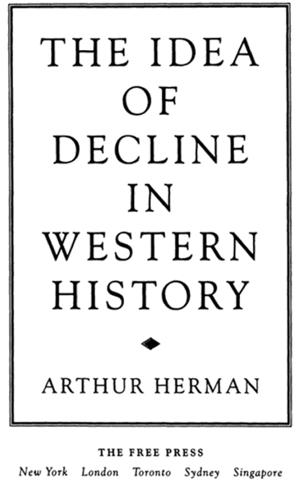
The Idea of Decline in Western History
by
Arthur Herman
Published 8 Jan 1997
Chapter 6 1 Du Bois , “Dusk of Dawn,” in Writings, p. 582. 2 Lewis , W.E.B. Du Bois , p. 18. 3 Gatewood , Aristocrats of Color . 4 Williamson , New People . 5 Bainton , Idea of Race , pp. 47-59. 6 E.g., Horsman , Race and Manifest Destiny , passim. 7 As in Robert Shufeldt’s 1907 book, The Negro: A Menace to American Civilization . 8 Lewis , W.E.B. Du Bois , pp. 56-63; W.E.B. Du Bois, “Dusk of Dawn,” in Writings, p. 577. 9 McPherson , Abolitionist Legacy , pp. 308-09. 10 E.g., De Marco , Social Thought of W.E.B. Du Bois , and D. D. Bruce , “W.E.B. Du Bois and the Idea of Double Consciousness.” 11 Quoted in Lewis , W.E.B. Du Bois , p. 134. 12 Ringer , Decline of the German Mandarins , pp. 146-48. 13 Schmoller , Mercantile System , pp. 2-3; Ringer , Decline of the German Mandarins , p. 147. 14 Smith , Politics and the Sciences of Culture in Germany , p. 182. 15 Simmel , Conflict in Modern Culture , p. 11. 16 Cf.
…
Berlin , Vico and Herder . 17 Quoted in Ringer , Decline of the German Mandarins , p. 100; Muller , Other God That Failed , p. 62. 18 Tönnies , Community and Society . 19 Smith , Politics and the Sciences of Culture in Germany , p. 138. 20 Quoted in Appiah , “Uncompleted Argument: Du Bois and the Illusion of Race,” in Gates , ed., “Race,” Writing, and Difference , pp. 23-24. 21 Du Bois , “Souls of Black Folk,” in Writings, p. 512. 22 Moses , Alexander Crummell , pp. 294-96. 23 H. M. Turner , Respect Black , pp. 74-75. 24 Moses , Alexander Crummell , p. 263. 25 Quoted in Lewis , W.E.B. Du Bois , p. 170. 26 Du Bois , Du Bois Speaks , p. 49. 27 Du Bois , “Conservation of Races,” in W.E.B. Du Bois: A Reader, pp. 825; 817, 821. 28 Quoted in Lewis, W.E.B. Du Bois, p. 263. 29 Du Bois “Conservatism of the Races,” in W.E.B. Du Bois: A Reader, p. 24. 30 Smith , Politics and the Sciences of Culture of Germany , pp. 126-28, 189. 31 Williamson , Crucible of Race , p. 411; Du Bois , “Dusk of Dawn,” in Writings, p. 662. 32 Du Bois , The Negro , p. 9. 33 Ibid., pp. 14, 24. 34 Ibid., p. 18. 35 Ibid., pp. 21-24. 36 Ibid., p. 137.
…
* One graph, for example, indicated that the average Italian immigrant child, although supposedly white in skin color, had an IQ score only one point higher than that of most Negroes. See The Revolt Against Civilization, p. 63. CHAPTER 6 BLACK OVER WHITE W.E.B. Du Bois The future will, in all reasonable probability, be what colored men make it. —W.E.B. Du Bois, The Negro , 1915 It will be a terrible day when black men draw the sword to fight for their liberty, and that day is coming….the day of the war of the races. —Marcus Garvey, 1919 In 1889, just as the second volume of Henry Adams’s History of The United States was appearing in Boston bookstores, a young undergraduate arrived at Harvard College.
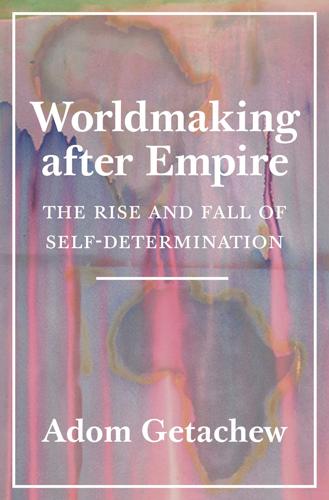
Worldmaking After Empire: The Rise and Fall of Self-Determination
by
Adom Getachew
Published 5 Feb 2019
Alberto Sbacchi, “Poison Gas and Atrocities in the Italo-Ethiopian War,” in Italian Colonialism, ed. Ruth Ben-Ghiat and Mia Fuller (New York: Palgrave Macmillan, 2005), 47–56. 158. W.E.B. Du Bois, “The League of Nations,” Crisis 18 (May 1919): 10–11. 159. W.E.B. Du Bois to Secretary General Eric Drummond, September 16, 1921, Lof N Doc, Box R39, 15865/13940. 160. W.E.B. Du Bois, “Liberia, the League and the United States,” Foreign Affairs 11 (July 1933): 682–95, 684. 161. Ibid., 695. 162. W.E.B. Du Bois, “Inter-racial Implications of the Ethiopian Crisis: A Negro View,” Foreign Affairs 14 (October 1935): 82–92, 92. 163. Ibid., 84. 164.
…
Wilder, Freedom Time. 18. For popular histories of these broader formations, see Vijay Prashad, The Darker Nations: A People’s History of the Third World (New York: New Press, 2007); and Vijay Prashad, The Poorer Nations: A Possible History of the Global South (New York: Verso, 2012). 19. W.E.B. Du Bois, “To the Nations of the World,” in W.E.B. Du Bois: A Reader, ed. David Levering Lewis (New York: Henry Holt, 1995), 639. 20. Eric Williams, Inward Hunger: The Education of a Prime Minister (London: Andre Deutsch, 1969), 54. For an account of the idea of generations as a salient concept in the recovery and reconstruction of intellectual history with specific attention to the Anglophone Caribbean, see David Scott, “The Temporality of Generations: Dialogue, Tradition, Criticism,” New Literary History 45 (Spring 2014): 157–81. 21.
…
For a discussion of Smuts’s role in the United Nations, see Mark Mazower, No Enchanted Palace: The End of Empire and the Ideological Origins of the United Na tions (Princeton, NJ: Princeton University Press, 2009), 28–65; Saul Dubow, “Smuts, the United Nations and the Rhetoric of Race and Rights,” Journal of Contemporary History 43 (January 2008): 45–74. 8. W.E.B. Du Bois, “The World and Africa: An Inquiry into the Part Which Africa Has Played in World History,” in The World and Africa and Color and Democracy, ed. Henry Louis Gates Jr. (New York: Oxford University Press, 2007), 154. 9. W.E.B. Du Bois, quoted in Mazower, No Enchanted Palace, 63. 10. “The Challenge to the Colonial Powers,” in History of the Pan-African Con gress: Colonial and Coloured Unity; A Program of Action, ed.
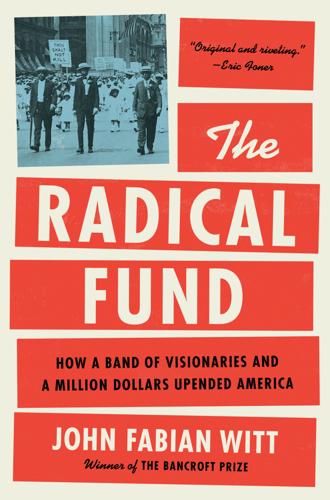
The Radical Fund: How a Band of Visionaries and a Million Dollars Upended America
by
John Fabian Witt
Published 14 Oct 2025
“many good causes”: “Topics of the Times: One Fund Ends,” New York Times, June 21, 1941, 16; also “$2,000,000 Spent, Garland Fund Dies,” New York Times, June 20, 1941, 23. empowerment of Black Americans: “$1,000,000 Garland Fund Gone,” New York Herald Tribune, June 20, 1941, 16. 11. “main agencies”: W. E. B. Du Bois, “The American Fund,” The Crisis, June, 1926, 57. “the impossible”: W. E. B. Du Bois, “We Rejoice and Tell the World,” National Guardian, May 31, 1954, 5; David Levering Lewis, W. E. B. Du Bois: The Fight for Equality and the American Century, 1919–1963 (Henry Holt, 1993), 557; Justin Driver, The Schoolhouse Gate: Public Education, the Supreme Court, and the Battle for the American Mind (Pantheon, 2018), 248–50.
…
“scientific study”: Minutes of Executive Committee Meeting Held at 3:00 p.m. on Jan. 3, 1911, Minutes of the Meetings of the Board of Directors, NAACPP. 36. tangle with: Matter of Du Bois Address, 1924–1925, b. 22, LHWP; David Levering Lewis, W. E. B. Du Bois: The Fight for Equality and the American Century, 1919–1963 (Henry Holt, 1993), at 70, 143–50, 422–53. 37. Born in Wales: Johnson, “W. E. B. Du Bois, Thomas Jesse Jones and the Struggle,” 71–95. “narrow-minded”: Carter Woodson, “Thomas Jesse Jones,” Journal of Negro History 35 (Jan. 1950): 107–9; Givens, Fugitive Pedagogy, 106–110; Maribel Morey, White Philanthropy: Carnegie Corporation’s An American Dilemma and the Making of a White World Order (University of North Carolina Press, 2021), 46–57; Khalil Anthony Johnson Jr., “Problem Solver or ‘Evil Genius’: Thomas Jesse Jones and the Problem of Indian Administration,” Native American and Indigenous Studies 5 (2018): 37–69. 38.
…
Woodson & Thomas Jesse Jones: A Comparative Study in Race and Philanthropy, 1915–1921,” M.A. thesis (Clark University, 2003); also Marybeth Gasman, “W. E. B. Du Bois and Charles S. Johnson: Differing Views on the Role of Philanthropy in Higher Education,” History of Education Quarterly 42 (2002): 493, 495. 43. “will not allow”… “sneer and yell”: WEBDB, “Gifts and Education,” 151. “one half”: WEBDB, Souls of Black Folk, 143. “labor reservoir”: “Reflections of W. E. B. Du Bois on Education as a Force for Racial Progress,” Journal of Blacks in Higher Education 2 (1993): 4–5. 44. “form a large”… “read and write”: WEBDB to AFPS, Nov. 9, 1924, r. 7, AFPSR. 45.

The Color of Money: Black Banks and the Racial Wealth Gap
by
Mehrsa Baradaran
Published 14 Sep 2017
Washington was not “training Negroes to take their place in any industrial system of the South in which the white man can direct or control him." 45. Washington, Up from Slavery, 40. 46. Du Bois, Souls of Black Folk, 41-60. W. E. B. Du Bois, Dusk of Dawn: An Essay toward an Autobiography of a Race Concept (Piscataway, NJ: Transaction, 2011), 67. David L. Lewis, W. E. B. Du Bois: A Biography (New York: Henry Holt, 2009), 222. 47. Du Bois, Souls of Black Folk, 49-50. 48. W. E. B. Du Bois, The Negro in Business (Atlanta: Atlanta University Press, 1899), 5. 49. Ibid.; Manning Marable, How Capitalism Underdeveloped Black America (Chicago: Haymarket Books, 2015), 131, 145. 50.
…
The violent upheaval led by the Klan and other vigilante groups achieved a restoration of the pre-war social hierarchy through targeted attacks on black legislators and their Republican allies. The first targets were blacks in uniform. Egerton, Wars of Reconstruction, 287. 42. Foner, Reconstruction, 121 43. W. E. B. Du Bois, The Souls of Black Folk (New York: Dover, 1994). 17. 44. Ibid. 45. W. E. B. Du Bois, Black Reconstruction in America (London: Transaction Publishers, 2013), 26. 46. Andrew Johnson, The Papers of Andrew Johnson, vol. 10: February-July 1866, ed. Paul H. Bergeron (Knoxville: University of Tennessee Press, 1992), 174-175. Johnson faced backlash from his party, leading to his impeachment after two attempts, but not before he had successfully opposed Republican reformers.
…
Classification: LCC E185.8 .B24 2017 | DDC 330.9/008996073—dc23 LC record available at https://lccn.loc.gov/2017011011 Jacket design by Tim Jones Photograph: The Dunbar National Bank Building in Harlem, New York City circa 1925, by General Photographic Agency / Hulton Archive / Getty Images To be a poor man is hard, but to be a poor race in a land of dollars is the very bottom of hardships. —W. E. B. Du Bois Table of Contents Introduction Forty Acres or a Savings Bank The New Deal for White America Civil Rights Dreams, Economic Nightmares The Decoy of Black Capitalism The Free Market Confronts Black Poverty The Color of Money Matters Epilogue THE COLOR OF MONEY Introduction “All too often when there is mass unemployment in the black community, it’s referred to as a social problem, and when there is mass unemployment in the white community, it’s referred to as a depression," said Martin Luther King in 1968.
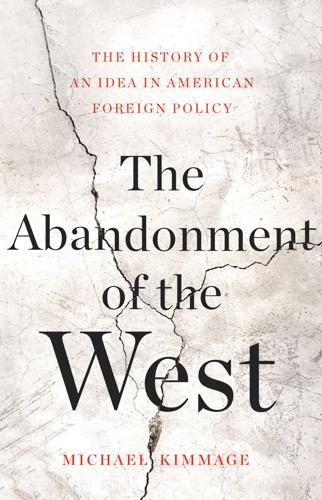
The Abandonment of the West
by
Michael Kimmage
Published 21 Apr 2020
See Thomas Mann, Death in Venice: And Seven Other Stories, trans. H. T. Lowe-Porter (New York: Vintage Books, 1963). 16. F. Scott Fitzgerald, The Great Gatsby (New York: Scribner’s, 1925), 16. 17. W. E. B. Du Bois, Dusk of Dawn, in Nathan Huggins, ed., Writings (New York: Library of America, 1986), 55, 586–587, 570. 18. W. E. B. Du Bois, “Commencement Address,” in Huggins, Writings, 812–814. 19. W. E. B. Du Bois, The Souls of Black Folk, in Huggins, Writings, 364, 365. “There are today no truer exponents of the pure spirit of the Declaration of Independence than the American Negroes.” 20. Du Bois, The Souls of Black Folk, in Huggins, Writings, 438.
…
Robert Schuman, “Germany has no army,” quoted in Park, Defending the West, 16. Dean Acheson, Present at the Creation: My Years in the State Department (New York, 1969), 490. Isaacson and Thomas on Dean Acheson, Wise Men, 514. Dean Acheson, “Europe, we had always believed,” quoted in Isaacson and Thomas, Wise Men, 697. 21. W. E. B. Du Bois in W. E. B. Du Bois, ed., Statement on the Denial of Human Rights to Minorities in the Case of Citizens of Negro Descent in the United States of America and an Appeal to the United Nations for Redress (New York: National Association for the Advancement of Colored People, 1947), 5. 22. Du Bois, Statement on the Denial of Human Rights, 21–22. 23.
…
Perhaps the label is so ubiquitous in the discussion of history, politics, culture, art, literature, philosophy and international affairs because it is so obligingly imprecise. Any history of the United States and the West must take these ambiguities into account. They dominate the debates and disagreements over the West: the precious West of Eisenhower versus the disturbing West of his contemporary W. E. B. Du Bois, the luminous West of John F. Kennedy versus the menacing West of his critic Noam Chomsky, the liberating West of Ronald Reagan versus the colonizing West of his critic Edward Said. The West lives most fully in the never-ending battles over what it is, what it means, what it has been. In this book, the West is many things: Winston Churchill’s civilization-saving Anglo-American alliance, Truman’s wall against communist tyranny, the object of antiwar fury at the time of the Vietnam War, the object of desire in street protests in communist East Berlin and Warsaw and Prague in 1989, the arduous day-to-day work of self-government, the diplomatic efforts to institutionalize peace and cooperation, and the application of military force and covert action in the name of liberty.

Data Action: Using Data for Public Good
by
Sarah Williams
Published 14 Sep 2020
The amount of detail is more than cities co… 1.10a and 1.10b Charles Booth's Social Demographic Maps of London. Figure 1.10a… 1.11 Maps from 1885 highlight businesses in Chinatown, specifically those consi… 1.12 Map from Hull House Maps and Papers (1895) shows the different nationaliti… 1.13 W. E. B. Du Bois included this map in The Philadelphia Negro (1899), an ex… 1.14 W. E. B. Du Bois's chart shows the average household budget of African Ame… 1.15 W. E. B. Du Bois's chart shows the types of businesses owned by African Am… 1.17 This map accompanies Frederic Thrasher's The Gang: A Study of 1,313 Gangs … 1.16 The first hand drawn map of Burgess's famous theoretical model used to exp… 1.18 The authors of the Pittsburgh Survey developed multiple graphic devices to… 1.19 Maps and photographs were an important part of the Pittsburgh Survey.
…
Early reformers helped to raise awareness of this problem among broader groups of people. 1.13 W. E. B. Du Bois included this map in The Philadelphia Negro (1899), an extensive survey of African American in the city's seventh ward of Philadelphia. The green and red in this map shows “working class” and “middle class.” Source: William Edward Burghardt Du Bois and Isabel Eaton, The Philadelphia Negro: A Social Study, 14 (published for the University, 1899). 1.14 W. E. B. Du Bois's chart shows the average household budget of African Americans in Atlanta. Source: W. E. B. Du Bois, [The Georgia Negro] Income and Expenditure of 150 Negro Families in Atlanta, Ga., U.S.A., circa 1900, drawing: ink, watercolor, and photographic print, 710 x 560 mm (board), circa 1900, LOT 11931, no. 31 [P&P], Library of Congress Prints and Photographs Division, https://www.loc.gov/pictures/item/2013650354/. 1.15 W.
…
Du Bois, [The Georgia Negro] Income and Expenditure of 150 Negro Families in Atlanta, Ga., U.S.A., circa 1900, drawing: ink, watercolor, and photographic print, 710 x 560 mm (board), circa 1900, LOT 11931, no. 31 [P&P], Library of Congress Prints and Photographs Division, https://www.loc.gov/pictures/item/2013650354/. 1.15 W. E. B. Du Bois's chart shows the types of businesses owned by African Americans in the United States, illustrating that black men had jobs similar to those of white men and helping to elevate the status of African Americans. Source: W. E. B. Du Bois, [A Series of Statistical Charts Illustrating the Condition of the Descendants of Former African Slaves Now in Residence in the United States of America] Negro Business Men in the United States, circa 1900, 1 drawing: ink and watercolor, 710 x 560 mm, circa 1900, LOT 11931, no. 57 (M) [P&P], Library of Congress Prints and Photographs Division, https://www.loc.gov/pictures/item/2014645363/.
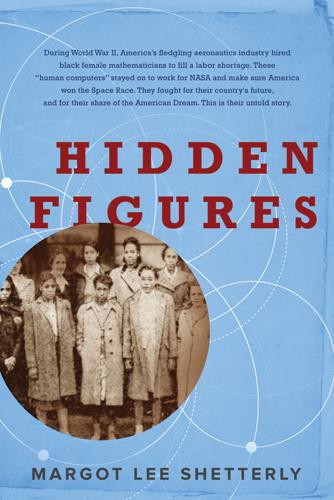
Hidden Figures
by
Margot Lee Shetterly
Published 11 Aug 2016
Elbert Frank Cox and Dudley Weldon Woodard, the first two Negroes to earn doctorates in mathematics, with degrees from Cornell and the University of Pennsylvania, respectively, ran the department. The white schools’ prejudice was the black schools’ windfall: with almost no possibility of securing a faculty position at a white college, brilliant black scholars like Cox and Woodard and W. E. B. Du Bois, the sociologist and historian who was the first Negro to receive a doctorate from Harvard, taught almost exclusively at Negro schools, bringing students like Dorothy into close contact with some of the finest minds in the world. Howard University represented a singular opportunity for Dorothy, in line with the AME scholarship committee’s lofty expectations.
…
Restaurants that refused to serve Dorothy Vaughan had no problem waiting on Germans from the prisoner-of-war camp housed in a detention facility under the James River Bridge in Newport News. The contradiction ripped Negroes asunder, individually and as a people, their American identities in an all-out, permanent war with their black souls, the agony of the double consciousness given voice by W. E. B. Du Bois in his illuminating book The Souls of Black Folk. The most outspoken members of the community refused to internalize the contradiction, openly equating the foreign racists America was moved to destroy with the American racists it chose to abide. “Every type of brutality perpetrated by the Germans, in the name of race, is visited upon the Negro in our southland as regularly as he receives his daily bread,” said Vernon Johns, the husband of Dorothy Vaughan’s former colleague Altona Trent Johns.
…
Henry Waters Taft, a well-known antitrust lawyer and brother to President William Howard Taft, frequented the Greenbrier, and one day in the store, Katherine taught him Roman numerals. In 1933, Katherine entered West Virginia State College as a fifteen-year-old freshman, her strong high school performance rewarded with a full academic scholarship. The college’s formidable president, Dr. John W. Davis, was, like W. E. B. Du Bois and Booker T. Washington, part of the exclusive fraternity of “race men,” Negro educators and public intellectuals who set the debate over the best course of progress for black America. Though not as large or as influential as schools like Hampton, Howard, or Fisk, the college nonetheless had a solid academic reputation.
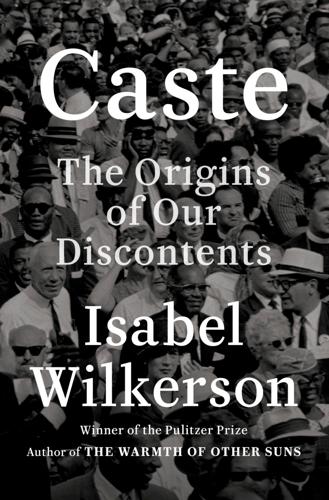
Caste: The Origins of Our Discontents
by
Isabel Wilkerson
Published 14 Sep 2020
“that my countrymen may take”: Jotiba (also known as Jotirao) Phule was an anti-caste reformer in nineteenth-century India who dedicated his 1873 book, Gulumgiri (Slavery), to the people of the United States who had ended slavery as a result of the Civil War. Cited by Kalpana Kannabirin in Non-Discrimination and the Indian Constitution (New Delhi: Routledge, 2012), p. 151. “There is so much similarity”: B. R. Ambedkar to W.E.B. Du Bois, ca. July 1946, in W.E.B. Du Bois Papers (MS 312). Special Collections and University Archives, University of Massachusetts Amherst Libraries. “every sympathy with”: W.E.B. Du Bois to B. R. Ambedkar, July 31, 1946, ibid. “Why did God make me”: Du Bois, Souls of Black Folk, p. 3. “caste system, which divided”: Stampp, Peculiar Institution, pp. 330–31. “The prejudice of race appears”: Tocqueville, Democracy in America, p. 141.
…
He expressed hope “that my countrymen may take their noble example as their guide.” Many decades later, in the summer of 1946, acting on news that black Americans were petitioning the United Nations for protection as minorities, Ambedkar reached out to the best known African-American intellectual of the day, W.E.B. Du Bois. He told Du Bois that he had been a “student of the Negro problem” from across the oceans and recognized their common fates. “There is so much similarity between the position of the Untouchables in India and of the position of the Negroes in America,” Ambedkar wrote to Du Bois, “that the study of the latter is not only natural but necessary.”
…
Many had labored against the tide, and I felt that I was carrying on a tradition and was not walking alone. In the midst of the research, word of my inquiries spread to some Indian scholars of caste, based here in America. They invited me to speak at an inaugural conference on caste and race at the University of Massachusetts in Amherst, the town where W.E.B. Du Bois was born and where his papers are kept. There, I told the audience that I had written a six-hundred-page book about the Jim Crow era in the American South, the time of naked white supremacy, but that the word racism did not appear anywhere in the narrative. I told them that, after spending fifteen years studying the topic and hearing the testimony of the survivors of the era, I realized that the term was insufficient.
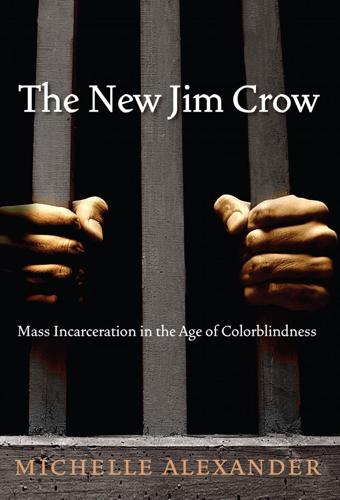
The New Jim Crow: Mass Incarceration in the Age of Colorblindness
by
Michelle Alexander
Published 24 Nov 2011
No task is more urgent for racial justice advocates today than ensuring that America’s current racial caste system is its last. 1 The Rebirth of Caste [T]he slave went free; stood a brief moment in the sun; then moved back again toward slavery. —W.E.B Du Bois, Black Reconstruction in America For more than one hundred years, scholars have written about the illusory nature of the Emancipation Proclamation. President Abraham Lincoln issued a declaration purporting to free slaves held in Southern Confederate states, but not a single black slave was actually free to walk away from a master in those states as a result. A civil war had to be won first, hundreds of thousands of lives lost, and then—only then—were slaves across the South set free. Even that freedom proved illusory, though. As W.E.B. Du Bois eloquently reminds us, former slaves had “a brief moment in the sun” before they were returned to a status akin to slavery.
…
One vagrancy act specifically provided that “all free negroes and mulattoes over the age of eighteen” must have written proof of a job at the beginning of every year. Those found with no lawful employment were deemed vagrants and convicted. Clearly, the purpose of the black codes in general and the vagrancy laws in particular was to establish another system of forced labor. In W.E.B. Du Bois’s words: “The Codes spoke for themselves.... No open-minded student can read them without being convinced they meant nothing more nor less than slavery in daily toil.”14 Ultimately, the black codes were overturned, and a slew of federal civil rights legislation protecting the newly freed slaves was passed during the relatively brief but extraordinary period of black advancement known as the Reconstruction Era.
…
The majority of Southern whites were better off than Southern blacks, but they were not affluent or well educated by any means; they were semiliterate (with less than twelve years of schooling). Only a tiny minority of whites were affluent and well educated. They stood far apart from the rest of the whites and virtually all blacks.56 What lower-class whites did have was what W.E.B. Du Bois described as “the public and psychological wage” paid to white workers, who depended on their status and privileges as whites to compensate for low pay and harsh working conditions.57 As described in chapter 1, time and time again, poor and working-class whites were persuaded to choose their racial status interests over their common economic interests with blacks, resulting in the emergence of new caste systems that only marginally benefited whites but were devastating for African Americans.

The Great Wave: The Era of Radical Disruption and the Rise of the Outsider
by
Michiko Kakutani
Published 20 Feb 2024
GO TO NOTE REFERENCE IN TEXT “J. Robert Oppenheimer’s sentiments”: Ibid., loc. 3053. GO TO NOTE REFERENCE IN TEXT Chapter 3: Culture in the New Millennium The idea of “twoness”: W.E.B. Du Bois, The Souls of Black Folk (New York: Gildan Media, 2019), 13. GO TO NOTE REFERENCE IN TEXT “I began to feel that dichotomy”: W.E.B. Du Bois, The Autobiography of W.E.B. Du Bois (Diasporic Africa Press, Inc., 1968), 186; John P. Pettman, “Double Consciousness,” The Stanford Encyclopedia of Philosophy (Spring 2023), eds. Edward N. Zalta and Uri Nodelman, plato.stanford.edu/entries/double-consciousness.
…
Robert Oppenheimer’s sentiments when he witnessed the unspeakable power of the atomic bomb” and lamented, “I am become death, the destroyer of worlds.” Chapter 3 CULTURE IN THE NEW MILLENNIUM: When the Edges Replaced the Center … I am invisible, understand, simply because people refuse to see me. —Ralph Ellison, Invisible Man The idea of “twoness” in the lives of African Americans recurs in the work of W.E.B. Du Bois—whether as the “double-consciousness” that comes from grappling daily with racism or the quality of “second-sight” that results from the experience of marginality. In his Autobiography, Du Bois wrote, “I began to feel that dichotomy which all my life has characterized my thought: How far can love for my oppressed race accord with love for the oppressing country?
…
After seeing police tear-gas protesters near the statue, two Richmond-based artists, Dustin Klein and Alex Criqui, decided to reclaim the statue by projecting images on it of African American heroes. Through the magic of light, the statue was turned into a screen on which there appeared images of Harriet Tubman, Frederick Douglass, W.E.B. Du Bois, Martin Luther King Jr., Rosa Parks, Malcolm X, Angela Davis, James Baldwin, and John Lewis. Some nights, there were Black Lives Matter signs, or a rainbow-colored LGBTQ+ flag, or the message “No Justice, No Peace.” Photos of the reclaimed statue rocketed around the world on social media and in the pages of newspapers and magazines.
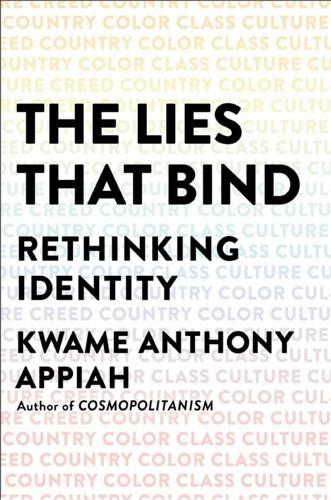
The Lies That Bind: Rethinking Identity
by
Kwame Anthony Appiah
Published 27 Aug 2018
Henry Louis Gates Jr. has pointed out to me that Frederick Douglass used the phrase before Du Bois in “The Color Line,” North American Review 132 (June 1, 1881): 567–577. 20.Du Bois, op. cit. 21.Mahmood Mamdani, Citizen and Subject: Contemporary Africa and the Legacy of Late Colonialism (Princeton: Princeton University Press, 1996). 22.W. E. B. Du Bois, “The Present Condition of German Politics,” Central European History 31 no. 3 (1998): 170–187. 23.Lord Moran cited in Richard Toye, Churchill’s Empire: The World That Made Him and the World He Made (New York: Henry Holt, 2010), 33. 24.Cited in David Levering Lewis, W. E. B. Du Bois, 1919–1963: The Fight for Equality and the American Century (New York: Henry Holt, 2000), 400. 25.“Innerhalb der Deutschen Grenze wird jeder Herero mit und ohne Gewehr, mit oder ohne Vieh erschossen, ich nehme keine Weiber und Kinder mehr auf, treibe sie zu ihrem Volke zurück oder lasse auf sie schießen.”
…
It is hard to think about race without mentioning racism, a word that was coined—somewhat belatedly, you might think, given this history—not to evoke hostile white attitudes to blacks but to describe the anti-Semitism of the German National Socialists. In 1900, in an address “To the Nations of the World” at the first Pan-African Conference in London, the eminent black intellectual W. E. B. Du Bois proclaimed that the “problem of the twentieth century” was “the problem of the color-line,” to wit: the question as to how far differences of race—which show themselves chiefly in the color of the skin and the texture of the hair—will hereafter be made the basis of denying to over half the world the right of sharing to their utmost ability the opportunities and privileges of modern civilization. . . .19 Du Bois was the beneficiary of the best education that our North Atlantic civilization then had to offer.
…
Better Hope You Were Born in the Right Month,” Wired, March 4, 2013, https://www.wired.com/2013/03/nhl-selection-bias/. 18.E. W. Blyden, Sierra Leone Weekly News, May 27, 1893, as cited in Eliezer Ben-Rafael and Yitzhak Sternberg with Judit Bokser Liwerant and Yosef Gorny, Transnationalism: Diasporas and the Advent of a New Disorder (Leiden: Brill, 2000), 598. 19.W. E. B. Du Bois, “To the Nations of the World,” in Lift Every Voice: African American Oratory, 1787–1900, ed. Philip Sheldon Foner and Robert James Branham (Tuscaloosa: University of Alabama Press, 1998), 906–907. I’m following here my own earlier discussion in Kwame Anthony Appiah, “The Problem of the Color Line: Race in the Modern World,” Foreign Affairs 94 no. 2 (March–April 2015): 1–8.
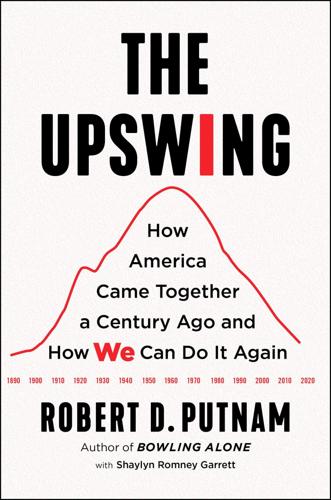
The Upswing: How America Came Together a Century Ago and How We Can Do It Again
by
Robert D. Putnam
Published 12 Oct 2020
According to historian Rowland Berthoff, “the immigrants, who had been accustomed to a more tightly knit communal life than almost any American could now recall, were quick to adopt the fraternal form of the American voluntary association in order to bind together their local ethnic communities against the unpredictable looseness of life in America.”22 The growing importance of associations among blacks followed much the same pattern, including mutual aid, burial, and social associations, and fraternal and women’s groups. In his classic study The Philadelphia Negro at the turn of the century, W. E. B. Du Bois emphasized the importance of black societies, such as the Odd Fellows and Freemasons, in furnishing “pastime from the monotony of work, a field for ambition and intrigue, a chance for parade, and insurance against misfortune”—virtually the same benefits that attracted millions of whites into such organizations in these years.
…
Just how expansive was it, really? What kind of American community were we building toward during the upswing? Did our nation’s “coming together” come at the expense of traditionally excluded groups? How was the upswing reflected—or not—in the experience of people of color1 and women? THE COLOR LINE In 1903, W. E. B. Du Bois, one of America’s most influential scholars and activists, wrote, “the problem of the twentieth century is the problem of the color-line.”2 As the nation was poised to begin what would be a sixty-year upward climb toward a more capacious sense of “we,” Du Bois called attention to what would be one of the greatest challenges—and most enduring exceptions—to America’s communitarian ideal.
…
Though a detailed account of the long Civil Rights movement could fill volumes, it is useful here to highlight a few key actions and victories which took place well before the period we typically associate with watershed change, and which both coincided with and nudged the slow but steady movement toward racial equality discussed above. The National Association for the Advancement of Colored People (NAACP), one of the most influential organizations in the fight for racial justice, was founded in 1909 under the leadership of W. E. B. Du Bois, who partnered with prominent white Progressives to agitate for change. The new organization advocated boycotts of the 1915 racist film Birth of a Nation with mixed success.103 In 1917, following the brutal St. Louis race riots that left forty-eight dead, the NAACP organized some ten thousand African Americans to march in silence down Fifth Avenue in New York City to protest racial violence.104 It was the very first mass protest of its kind.105 In 1919 the NAACP championed the Dyer Anti-Lynching Bill, which was subsequently endorsed by President Warren Harding and passed the House of Representatives by a large majority in 1922, only to be filibustered by Southern Democrats in the Senate.106 Though legislative victories for racial justice in this era were few, it was a time when civil rights agitators consolidated into a national movement that was gaining influence, exposure, and white allies drawn largely from the ranks of Progressive reformers.
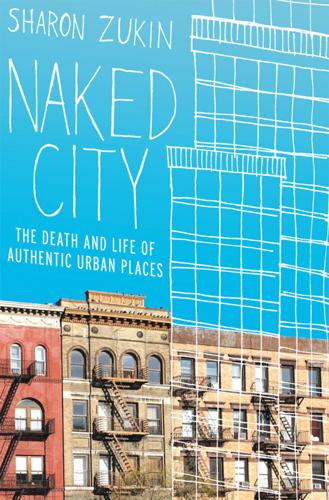
Naked City: The Death and Life of Authentic Urban Places
by
Sharon Zukin
Published 1 Dec 2009
The first Harlem Renaissance was the period of extraordinary creativity in the 1920s and 1930s when African American and Caribbean writers, painters, and intellectuals joined with white literary critics to create a “capital of Black culture” in Uptown Manhattan. Poets such as Langston Hughes, novelists such as Zora Neale Hurston, and social critics such as W. E. B. Du Bois, who are now admired figures in the modern American canon, lived and worked in a gritty area of the city that had been developed for middle-class whites but, in a frantic sequence of overbuilding, targeted marketing, and overcrowding, quickly filled with working-class blacks. Racism forced Harlem to grow into a ghetto.
…
“You can still find a semblance of Harlem, but it is vanishing quickly,” says Sikhulu Shange, owner of the celebrated Record Shack on 125th Street, who lost his lease in 2007. “What we have built, they want it now. They want the culture.”8 If for many years Harlem embodied the dual racial consciousness of African Americans that W. E. B. Du Bois described at the turn of the twentieth century, today it represents what Henry Louis Gates Jr. calls blacks’ social class hyphenation. On one side, you have new high-rise office and residential towers, million-dollar brownstone townhouses, and rosemary focaccia: the cultural signs of the “new Harlem Renaissance.”
…
Despite the halt to many new construction projects brought by the financial crisis, small stores catering to black customers have been forced to close and longtime residents have been forced out. This presses Harlem to confront a previously unimaginable challenge: Does any neighborhood in the city today have the right to be both poor and black? Has Harlem lost its authenticity as a dark ghetto?10 He was from the Harlem of Charlie Parker and LeRoi Jones, of Dizzy Gillespie and W. E. B. Du Bois. —Michael Hunt on Kareem Abdul-Jabbar, Milwaukee Journal-Sentinel online, November 20, 2007 When the psychologist Kenneth Clark called Harlem a “dark ghetto” in 1965, at the height of the civil rights movement, he evoked a space of almost hopeless desolation, where men and women born with darker skin are condemned to live isolated behind “invisible walls” built by whites with privilege and power.
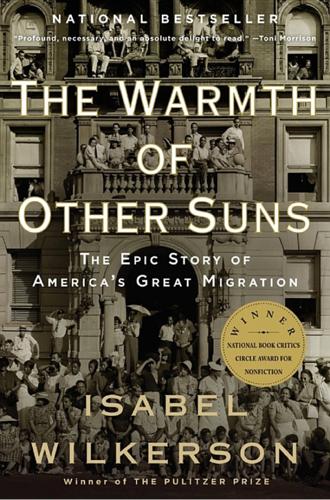
The Warmth of Other Suns: The Epic Story of America's Great Migration
by
Isabel Wilkerson
Published 6 Sep 2010
.: Greenwood Press, 1998), pp. 37–47, cited in Holley, The Second Great Emancipation, p. 56. 85 The other brother: Interviews with Reuben Blye in Eustis, Florida, July 1997 and July 1998. 86 In North Carolina: Gilbert Thomas Stephenson, “The Separation of the Races in Public Conveyances,” The American Political Science Review 3, no. 2 (May 1909): 200–201. 87 standing in the way: David Levering Lewis, W. E. B. Du Bois: The Fight for Equality and the American Century, 1919–1963 (New York: Henry Holt, 2000), pp. 491–92. 88 “The result of this action”: Ibid., p. 495; Arnold Rampersad, The Art and Imagination of W. E. B. Du Bois (Cambridge: Harvard University Press, 1976), p. 22; W. E. B. Du Bois, The Autobiography of W. E. B. Du Bois: A Soliloquy on Viewing My Life from the Last Decade of Its First Century (New York: International Publishers, 1968), p. 323. 89 “There was no earthly”: Lewis, W. E. B. Du Bois, pp. 493–95. 90 His northern friends thought: Ibid., p. 495, citing Shirley Graham Du Bois, His Day Is Marching On: A Memoir of W.
…
He met regularly with the likes of Eleanor Roosevelt and Paul Robeson in his capacity not only as a university president but as a leading figure among the colored bourgeoisie in the South. Clement gained a reputation as a cautious and incurious steward whom history will record as the man who ousted W. E. B. Du Bois, the leading black intellectual of his time, from a professorship at Atlanta University after years of clashing egos and temperaments. W. E. B. Du Bois arrived at Atlanta University, already in his seventies and with plans for an ambitious study on race relations, at around the same time that Clement was confronted with this new boy interested in his only daughter. Clement would be at odds with Du Bois almost from the start, perhaps threatened by the long shadow of his celebrity or put off by the elder man’s impertinent disregard for Clement, who was thirty years younger than Du Bois.
…
It was where the people who had been laundresses, bellmen, and mill hands in the South dressed up as they saw themselves to be—the men in frock coats and monocles, the women in fox stoles and bonnets with ostrich feathers, the “servants of the rich Park and Fifth Avenue families” wearing “hand-me-downs from their employers,” all meant to evoke startled whispers from the crowd on the sidewalk: “My Gawd, did you see that hat?”33 Virtually every black luminary was living within blocks of the others in the elevator buildings and lace-curtained brownstones up on Sugar Hill, from Langston Hughes to Thurgood Marshall to Paul Robeson, Duke Ellington, and W. E. B. Du Bois, on and off, to Richard Wright, who had now outgrown even Chicago, and his friend and protégé Ralph Ellison, who actually lived in Washington Heights but said it was close enough to be Harlem and pretty much considered it so. Of course, George, having just arrived from Florida, was nowhere near the Sugar Hill set.

Slouching Towards Utopia: An Economic History of the Twentieth Century
by
J. Bradford Delong
Published 6 Apr 2020
Clarence Darrow, Closing Arguments: Clarence Darrow on Religion, Law, and Society, Columbus: Ohio University Press, 2005, 202. 24. W. E. B. Du Bois, “My Evolving Program for Negro Freedom,” in What the Negro Wants, ed. Rayford W. Logan, Chapel Hill: University of North Carolina Press, 1944, 36. 25. Booker T. Washington, Up from Slavery: An Autobiography, London: George Harrap, 1934 [1901], 137. 26. Annette Gordon-Reed, “The Color Line: W. E. B. Du Bois’s Exhibit at the 1900 Paris Exposition,” New York Review of Books, August 19, 2021, www.nybooks.com/articles/2021/08/19/du-bois-color-line-paris-exposition. 27. W. E. B. Du Bois, The Souls of Black Folk, Chicago: A. C. McClurg, 1903, n.p. 28.
…
And neither did Blacks. Woodrow Wilson was a Progressive, and well respected on the left. He also segregated the US federal government’s civil service. W. E. B. Du Bois was born in 1868 in Great Barrington, Massachusetts. He was raised by his mother, Mary, and her parents, Othello and Sarah Lampman Burghardt. Othello’s grandfather, Tom, had been the first Black person to move to Great Barrington, where he died in around 1787 at the age of fifty. W. E. B. Du Bois’s white neighbors took up a collection to pay for him to go to Fisk University, a historically Black university in Nashville. He then went from Fisk to Harvard (earning a bachelor’s degree in history and graduating cum laude in 1890).
…
Irish were on the borderline—and were quickly assimilated to “British” by politicians who had to run in districts where the Irish diaspora cast substantial votes. Others were more trouble than they were worth. Setting aside the occasional self-serving specific instance, many voting Americans were of Lodge’s way of thinking—or worse. Between 1900 and 1930 the economic and social position of America’s Black middle class—W. E. B. Du Bois’s “Talented Tenth”—was reduced to rubble. Hollywood reinvigorated the Ku Klux Klan. It was the left-of-center president Woodrow Wilson, too, who segregated the federal civil service and set personnel management to downgrading Black workers. Progressive Republican president Theodore Roosevelt had invited Booker T.
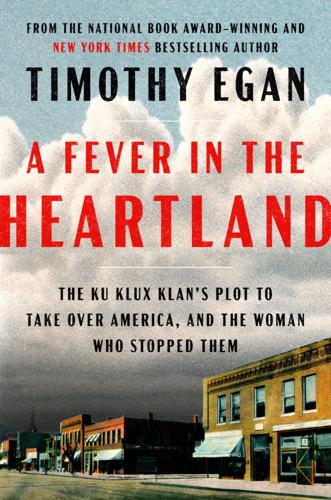
A Fever in the Heartland: The Ku Klux Klan's Plot to Take Over America, and the Woman Who Stopped Them
by
Timothy Egan
Published 4 Apr 2023
By 1925, about 35 percent of Hamilton County’s native-born white males had taken the Klan oath—the second-highest percentage of any in the state. Noblesville’s daily paper ran a regular front-page feature, “Klan Komment,” a helpful-hints column, to publicize the virtues of the hooded order. Where did all of this come from? What had calloused the character of so many of Stern’s neighbors? What did they want? As W. E. B. Du Bois had written, behind “the yelling, cruel-eyed demons who break, destroy, maim, lynch, and burn at the stake is a knot, large or small, of normal human beings, and these human beings at heart are desperately afraid of something.” Noblesville had just a few dozen Black residents, a mere ninety-four Catholics, and no Jews or recent immigrants so far as anyone could tell.
…
Georgia, South Carolina, Alabama, Mississippi—the core of the old Confederacy, as well as Tennessee, the cradle of the original Klan—were barely represented in the parade. The largest delegations came from the vibrant center of the twentieth-century Klan—Pennsylvania, Indiana, Ohio, Michigan—which surprised many reporters. That summer, W. E. B. Du Bois had been similarly startled at what he found in the Heartland. He was giving a lecture in Ohio, in “one of those states upon whose essential Americanism and devotion to the finer ideals of democracy I have long banked,” he recalled. And yet there in Akron, “I found the Klan calmly and openly in the saddle.
…
Cameron died the same year, at the age of ninety-two. In 2022, Congress finally passed, and President Joe Biden signed, a bill making lynching a federal crime—122 years after the first such legislation was introduced. According to the NAACP, nearly 5,000 lynchings took place between 1882 and 1968. Working closely with his friend W. E. B. Du Bois, James Weldon Johnson served for ten years as secretary of the NAACP, from 1920 to 1930. At the same time, he published hundreds of stories and poems, including the first anthology of Black verse, The Book of American Negro Poetry, and The Book of American Negro Spirituals, plus his most famous work, God’s Trombones: Seven Negro Sermons in Verse.
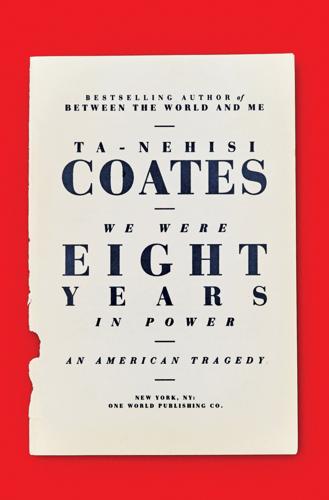
We Were Eight Years in Power: An American Tragedy
by
Ta-Nehisi Coates
Published 2 Oct 2017
His plea went unheeded. The 1895 constitution added both literacy tests and property requirements as qualifications for enfranchisement. When those measures proved insufficient to enforcing white supremacy, black citizens were shot, tortured, beaten, and maimed. Assessing Miller’s rebuttal and the 1895 convention, W.E.B. Du Bois made a sobering observation. From Du Bois’s perspective, the 1895 constitutional convention was not an exercise in moral reform, or an effort to purge the state of corruption. This was simply cover for the convention’s true aim—the restoration of a despotic white supremacy. The problem was not that South Carolina’s Reconstruction-era government had been consumed by unprecedented graft.
…
At the turn of the twentieth century, Washington married a defense of the white South with a call for black self-reliance and became the most prominent black leader of his day. He argued that southern whites should be given time to adjust to emancipation; in the meantime, blacks should advance themselves not by voting and running for office but by working, and ultimately owning, the land. W.E.B. Du Bois, the integrationist model for the Dysons of our day, saw Washington as an apologist for white racism and thought that his willingness to sacrifice the black vote was heretical. History ultimately rendered half of Washington’s argument moot. His famous Atlanta Compromise—in which he endorsed segregation as a temporary means of making peace with southerners—was answered by lynchings, land theft, and general racial terrorism.
…
This tradition stretches back to Frederick Douglass, who, in 1852, said of his native country, “There is not a nation on the earth guilty of practices more shocking and bloody than are the people of the United States at this very hour.” It extends through Martin Delany, through Booker T.’s nemesis W.E.B. Du Bois, and through Malcolm X. It includes Martin Luther King Jr., who at the height of the Vietnam War called America “the greatest purveyor of violence in the world today.” And it includes Obama’s former pastor, he of the famous “God Damn America” sermon, Jeremiah Wright. The Harvard Law professor Randall Kennedy, in his 2011 book The Persistence of the Color Line: Racial Politics and the Obama Presidency, examines this tradition by looking at his own father and Reverend Wright in the context of black America’s sense of patriotism.
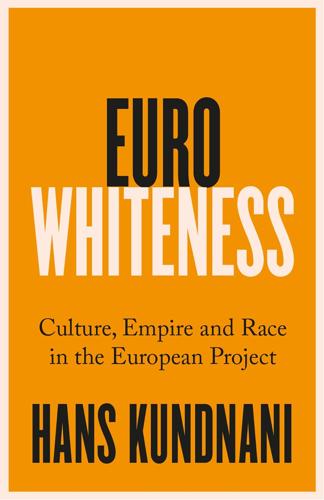
Eurowhiteness: Culture, Empire and Race in the European Project
by
Hans Kundnani
Published 16 Aug 2023
For example, the Spanish philosopher José Ortega y Gasset, a key figure in the movement, saw nationalism as “nothing but a mania”.39 But this was because it was diverting “European man” from his destiny to rule the world on behalf of humanity.40 The idea was that Europe should, as Ute Frevert aptly puts it, “bury its national rivalries and resume its quest for world supremacy”.41 This connection between calls for European unity in the aftermath of World War I and European colonialism was clear to many non-European and non-white intellectuals. For example, after the outbreak of World War I, W.E.B. Du Bois wrote a scathing essay from the perspective of the “darker peoples” of the world about the disconnect between the horror that Europeans felt about the slaughter taking place in Belgium and their apparent indifference towards, or even support for, the violence carried out by Europeans in the Belgian Congo.
…
As the Holocaust was commemorated within the EU, European colonialism remained forgotten.71 This “biased salience”, as Avishai Margalit has called it, was particularly striking in the case of Germany itself.72 Although the Holocaust had become central to its identity, there was almost no discussion of Germany’s colonial history beyond Europe, which had itself included a genocide—the first of the twentieth century—against the Herero and Nama in German Southwest Africa (present-day Namibia) between 1904 and 1908.73 Privileging the Holocaust, and insisting on its uniqueness, obscured its connections with colonialism and slavery to which Hannah Arendt and others such as Aimé Césaire and W.E.B. du Bois had pointed.74 Although some “pro-Europeans” would claim that the EU was an inherently anti-racist project, there was never an attempt to make the memory of colonialism a central European foundational memory, and it never came to influence the EU in the way that the Holocaust did. Rather, it was assumed that, simply because of the central role that the Holocaust had come to play in the narrative of the EU, it had also rejected racism more widely.
…
The Untold Story of European Integration and Colonialism (London: Bloomsbury, 2014), p. 42. 36.Weller, The Idea of Europe, p. 146. 37.Frantz Fanon, The Wretched of the Earth (Harmondsworth: Penguin, 1990), p. 252. 38.Hansen/Jonsson, Eurafrica, p. 41. 39.José Ortega y Gasset, Revolt of the Masses (New York: Norton, 1957 [1932]), p. 183. 40.See Weller, The Idea of Europe, p. 158. 41.Ute Frevert, “Europeanizing German History”, Bulletin of the German Historical Institute, Issue36, Spring 2005, pp. 9–24, here p. 19, https://www.ghi-dc.org/publication/bulletin-36-spring-2005 (last accessed 31 March 2023). 42.W.E.B. Du Bois, “Of the Culture of White Folk”, Journal of Race Development, Volume 7, Issue 4, April 1917, pp. 434–447, here p. 446. 43.Hansen/Jonsson, Eurafrica, pp. 54–5. 44.Richard N. Coudenhove-Kalergi, Pan-Europe (New York: Knopf, 1926), p. 192. 45.See Hansen/Jonsson, Eurafrica, pp. 26–27. 46.Richard Coudenhove-Kalergi, “Afrika”, Paneuropa, Volume 5, Issue 2, 1929, p. 3.

The Quiet Coup: Neoliberalism and the Looting of America
by
Mehrsa Baradaran
Published 7 May 2024
To capture Wallace voters and win the election, Nixon’s team stoked fears of Black violence, promising to impose “law and order” to end an impending race war, and primed white Americans to see their fellow Black Americans as moochers and takers of their resources rather than the rightful recipients of their overdue fair share. This was not the first time white identity politics was stoked as political strategy—Reconstruction failed when the southern plantation oligarchy split the interracial coalition of indebted sharecroppers by giving poor whites what W. E. B. Du Bois called “the wages of whiteness,” instead of the actual wages the coalition sought through the democratic process. To win the presidency, the uninspiring candidate Nixon used barely hidden dog whistles to create a new political bloc, which he referred to as “the silent majority,” based on aggrieved white identity.
…
The television, radio, and copy machine allowed for the quick distribution of advertisements as well as revolutionary tracts. By 1955, average Americans could fly anywhere in the world on a commercial airline—including Martin Luther King, who traveled to India to meet Mahatma Gandhi’s family; Malcolm X, who made a hajj to Mecca; and W. E. B. Du Bois, who self-exiled to Ghana. Meanwhile, the poets and intellectuals of the Global South traveled to Europe and America and across to other nations to discuss a world after empire. It was the greatest cross-pollination of ideas from the widest range of perspectives since before the era of colonial conquest, when the Silk Road trade route connected thinkers from Africa to China.
…
The Indo-Pakistani War broke out in 1965, and several countries, including Turkey, South Korea, Brazil, Iraq, Libya, Saudi Arabia, and Yemen, grappled with military coups or civil conflicts as part of the decolonization process. The revolts spread to the United States, as Black activists linked their struggle with the worldwide fight against colonialism. Malcolm X, Martin Luther King, W. E. B. Du Bois, and, most provocatively, the Black Panthers viewed their activism as part of the new world war. “A revolutionary wants land so he can set up his own nation, an independent nation,” said Malcolm in 1963. King called the 1964 Civil Rights Act “the child of a storm” and “a component of a world era of change,” and he compared northern ghettos to a “colonial area … powerless because all important decisions affecting the community were made from the outside.”9 Du Bois, who died in 1963, was active in the anticolonial struggle, joining United Nations committees and coordinating declarations of peace and disarmament alongside his old friend Gunnar Myrdal and Myrdal’s wife, Alva, herself a future Nobel laureate.
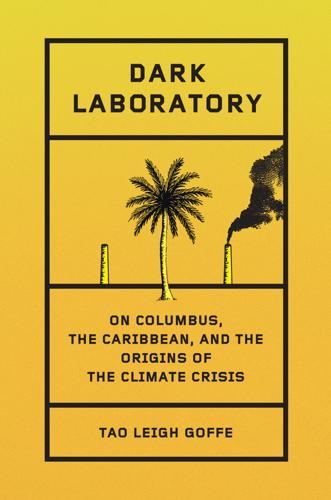
Dark Laboratory: On Columbus, the Caribbean, and the Origins of the Climate Crisis
by
Tao Leigh. Goffe
Published 14 Mar 2025
I pair the play with Aimé Césaire’s Martinican rejoinder, A Tempest. Much like the changeling child stolen from India to serve the faerie princess in A Midsummer Night’s Dream, I have questioned just how inevitable the direction of the trade winds was that filled the white, pregnant sails of merchant ships in the nineteenth century. I pair that classic with W. E. B. Du Bois’s novel Dark Princess, inspired in part by Shakespeare’s play. Du Bois takes us to the post-plantation soil and cultivation of Virginia’s farms to sit with the meaning of broken promises enslavers made to African Americans: forty acres and a mule. Again, climate is a radical part of the plot and plotting of future reparations in such works of literature.
…
From Hilo to Harlem to Helsinki, members collectively consider: Who are the test subjects in the lab of colonialism? How do scientific ethics shift when the researcher becomes the subject of research? The Dark Laboratory is a space of creative possibility that requires collaboration beyond traditional institutions. There is a genealogy of darkness as power in the writings of W. E. B. Du Bois and in William Shakespeare’s Dark Lady. We play in the dark, understanding that the Western imagined notion of “darkness” has nothing to do with the reality of our African lives or those of people of color. I named the lab after Toni Morrison’s 1992 book of literary criticism Playing in the Dark.
…
Bird-watching both endangered and saved Christian’s life. Bird-watchers are meticulous documenters, quietly taking photographs of rare birds; perhaps that’s why he thought to turn the camera on Amy that day. It is a voyeuristic sport. For Black birders, the question of double consciousness—a concept theorized by W. E. B. Du Bois—is an urgent one.[3] Du Bois described part of the Black American experience as one of watching oneself being watched, so that the veil became a powerful symbol of racial divisions in the United States. Black people have a second sight or sense of being surveilled because it is so prevalent and often a matter of life and death.
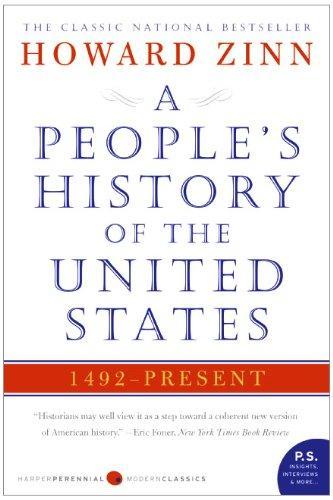
A People's History of the United States
by
Howard Zinn
Published 2 Jan 1977
She came, she traded, and shortly afterwards was gone. Probably no ship in modern history has carried a more portentous freight. Her cargo? Twenty slaves. There is not a country in world history in which racism has been more important, for so long a time, as the United States. And the problem of “the color line,” as W. E. B. Du Bois put it, is still with us. So it is more than a purely historical question to ask: How does it start?—and an even more urgent question: How might it end? Or, to put it differently: Is it possible for whites and blacks to live together without hatred? If history can help answer these questions, then the beginnings of slavery in North America—a continent where we can trace the coming of the first whites and the first blacks—might supply at least a few clues.
…
She expressed her philosophy: “There was one of two things I had a right to, liberty or death; if I could not have one, I would have the other; for no man should take me alive. . . .” One overseer told a visitor to his plantation that “some negroes are determined never to let a white man whip them and will resist you, when you attempt it; of course you must kill them in that case.” One form of resistance was not to work so hard. W. E. B. Du Bois wrote, in The Gift of Black Folk: As a tropical product with a sensuous receptivity to the beauty of the world, he was not as easily reduced to be the mechanical draft-horse which the northern European laborer became. He . . . tended to work as the results pleased him and refused to work or sought to refuse when he did not find the spiritual returns adequate; thus he was easily accused of laziness and driven as a slave when in truth he brought to modern manual labor a renewed valuation of life.
…
Lee, surrounded the insurgents. Although his men were dead or captured, John Brown refused to surrender: he barricaded himself in a small brick building near the gate of the armory. The troops battered down a door; a marine lieutenant moved in and struck Brown with his sword. Wounded, sick, he was interrogated. W. E. B. Du Bois, in his book John Brown, writes: Picture the situation: An old and blood-bespattered man, half-dead from the wounds inflicted but a few hours before; a man lying in the cold and dirt, without sleep for fifty-five nerve-wrecking hours, without food for nearly as long, with the dead bodies of his two sons almost before his eyes, the piled corpses of his seven slain comrades near and afar, a wife and a bereaved family listening in vain, and a Lost Cause, the dream of a lifetime, lying dead in his heart. . . .

Doppelganger: A Trip Into the Mirror World
by
Naomi Klein
Published 11 Sep 2023
“Auschwitz was the modern industrial application of a policy of extermination on which European world domination had long since rested,” Lindqvist writes. However, he continues, “when what had been done in the heart of darkness was repeated in the heart of Europe, no one recognized it. No one wished to admit what everyone knew.” That is incorrect. Several leading Black intellectuals saw the parallels with great clarity at the time. W. E. B. Du Bois, in The World and Africa, published soon after the end of the Second World War, wrote, “There was no Nazi atrocity—concentration camps, wholesale maiming and murder, defilement of women or ghastly blasphemy of childhood—which Christian civilization of Europe had not long been practicing against colored folk in all parts of the world in the name of and for the defense of a Superior Race born to rule the world.”
…
The film begins in a medical clinic, with an emotionless doctor examining a middle-aged woman: gums, nostrils, jaw, gait—each meticulously and humiliatingly measured and probed to check for a Jew lurking within. The anti-Semite making the Jew, creating the deadly doppelganger with clinical precision. All members of historically hated groups lug around versions of this invisible double, and some doublings are far more dangerous than others. To be Black in the United States, W. E. B. Du Bois wrote in 1897, required a “double-consciousness,” a constant feeling of “two-ness,” which generated a longing “to merge his double self into a better and truer self,” one that did not require this partition. To this day, Blackness generates a double that is so treacherous to those it is projected upon, and so unremitting in its persistence through the centuries, that no activity is safe from being overtaken by the lethal racial double—not driving, not going for a run, not walking home from the store, not struggling with the lock on your own jammed front door.
…
He wrote those words in his midtwenties knowing that millions of his people had already died and that his ideas might soon be all that was left of him. But he believed in ideas enough to write them down—and that means they are still available to be picked up. This is not about what-ifs: What if the understanding of Hitler as a doppelganger to the colonial project—as expressed by W. E. B. Du Bois and Aimé Césaire and Walter Benjamin and Abram Leon—had been heeded eight decades ago? It wasn’t. But it’s not too late to listen now, and to have what we hear inform what we do next. We are told that the way things are is the only way they can be, because every other model has supposedly already been tried, and all have failed.

Artificial Whiteness
by
Yarden Katz
The next chapter synthesizes what we have seen so far in the book to explain this feat. 5 ARTIFICIAL WHITENESS I am quite straight-faced as I ask soberly: “But what on earth is whiteness that one should so desire it?” Then always, somehow, some way, silently but clearly, I am given to understand that whiteness is the ownership of the earth forever and ever, Amen! —W. E. B. Du Bois I want to return to the question posed in the first chapter: What is Artificial Intelligence? This question requires us to account for AI’s reappearances and shifts, and its place in imperial and capitalist projects. The question also calls for an explanation of AI’s flexibility: its ability to move from the world of Pentagon technocrats to that of self-styled “progressive” activists.
…
This question also calls for an accounting of AI’s models of the self. This chapter sketches the beginnings of an answer by exploring “Artificial Intelligence”—as a concept, field, and set of practices—through the ideology of whiteness, as discussed in an American context by writers such as W. E. B. Du Bois and Toni Morrison. My claim is that whiteness is the organizing logic of AI, the frame that makes sense of its trajectory and political functions, its epistemic forgeries and models of the self. Whiteness explains how experts become readily invested in AI and how they adapt it to meet social challenges, as well as the fragilities that result from this investment.
…
Blumenbach had to “walk a tightrope of contradictions” as they produced incoherent accounts of racial difference.17 And the theories rapidly changed. Blumenbach’s late eighteenth-century definition of the “five races” is long expired, for example, as is the account of the “eight races” embraced by W. E. B. Du Bois in the nineteenth century.18 By now, attempts to ground race using anthropometrics are similarly out of fashion in mainstream science.19 The instability of the racial sciences demonstrates the shaky epistemic footing of theories of racial difference. But the instability also shows how nebulous whiteness is in that it can draw on the changing and contradictory fruits of the racial sciences.

Animal Spirits: The American Pursuit of Vitality From Camp Meeting to Wall Street
by
Jackson Lears
The anthropologist Franz Boas had begun to emphasize the role of environmental influences on human development, and to deemphasize race—indeed to call into question its very existence as anything more than a cultural construction. But essentialism persisted. The writer Alain Locke kept alive the nineteenth-century black belief that white people were an especially brutal and predatory race, and even W. E. B. Du Bois slipped into essentialism occasionally, as when he wrote in 1915 that “[in] disposition the Negro is among the most lovable of men.” The writers of the Harlem Renaissance were much less restrained. Among the most prominent was Claude McKay, a Jamaican immigrant to the United States whose career melded literature and politics, mixed race consciousness with class consciousness, and made McKay a celebrity among Soviet Communists as well as African Americans.
…
He also encouraged McKay to write in his native dialect and helped him get his first book of poetry, Songs of Jamaica, published in 1912. That same year, McKay left for the United States to attend the Tuskegee Institute; he quickly developed a revulsion for the “semi-military, machine-like existence there,” and fled to Kansas State University, to study agronomy. But reading W. E. B. Du Bois’s Souls of Black Folk inspired him to combine poetry and politics. He headed for New York, where he married his childhood sweetheart Eulalie Lewars and fell in with the bohemian radicals around The Seven Arts and The Liberator, where some of his poetry was published. He also took a job as a dining-car waiter for the Pennsylvania Railroad, joined the Industrial Workers of the World, and co-founded the African Blood Brotherhood, a semisecret organization dedicated to black self-determination through socialist revolution.
…
“I am myself”: Anderson to Finley, June 14, 1922, in William A. Sutton, ed., Letters to Bab: Sherwood Anderson to Marietta D. Finley, 1916–1933 (1985), 183. “The niggers were something”: Sherwood Anderson, Dark Laughter (1924), 77. “What does it matter?”: Ibid., 80–81. “Word-lovers, sound-lovers”: Ibid., 106–7. “[in] disposition the Negro”: W. E. B. Du Bois, The Negro (1915), cited in Mia Bay, The White Image in the Black Mind: African-American Ideas About White People, 1830–1925 (2000), 200. “semi-military, machine-like”: Claude McKay, “Claude McKay Describes His Own Life,” Manoa 31, no. 2 (2019), 105. “Why this obscene”: McKay, cited in Robert Reindeers, “Racialism on the Left: E.
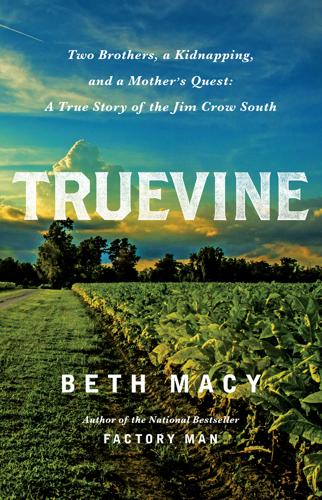
Truevine: Two Brothers, a Kidnapping, and a Mother's Quest: A True Story of the Jim Crow South
by
Beth Macy
Published 17 Oct 2016
—John 15:1–2 For the first time he sought to analyze the burden he bore upon his back, that dead-weight of social degradation partially masked behind a half-named Negro problem. He felt his poverty; without a cent, without a home, without land, tools, or savings, he had entered into competition with rich, landed, skilled neighbors. To be a poor man is hard, but to be a poor race in a land of dollars is the very bottom of hardships. —W. E. B. Du Bois, The Souls of Black Folk Prologue I Am the True Vine Their world was so blindingly white that the brothers had to squint to keep from crying. On a clear day, it hurt just to open their eyes. They blinked constantly, trying to make out the hazy objects in front of them, their brows furrowed and their eyes darting from side to side, unable to settle on a focal point.
…
Reeves’s father managed to learn blacksmithing, a physically easier skilled trade that brought better pay. Masterless men, they were called, as the presence of tens of thousands of black men in work camps across the South instilled fear in whites, who saw them as job competition and free agents, no longer attached to the land or beholden to landlords. As sociologist W. E. B. Du Bois framed the situation, emancipation had transmogrified into a “race feud” in the southern states. “Not a single Southern legislature stood ready to admit a Negro under any conditions, to the polls; not a single Southern legislature believed free Negro labor was possible without a system of restrictions that took all its freedoms away; there was scarcely a white man in the South who did not honestly regard Emancipation as a crime, and its practical nullification as a duty.”
…
Criticized for its graphic nature and banned in some cities, Micheaux’s film was positively audacious at a time when whites were still cheering Griffith’s work. Across the country, lynching had almost turned into a spectator sport, with special railroad excursions planned around established lynching sites—a practice W. E. B. Du Bois called the new “white amusement.” Unlike most of the black leaders Du Bois hailed as the Talented Tenth, Micheaux didn’t just portray blacks as heroes. He was rare among black artists because he also explored the negative traits of his characters, airing such dirty laundry as gambling, drug use, conspiring with white men for selfish advancement, and crime.

Hostile Environment: How Immigrants Became Scapegoats
by
Maya Goodfellow
Published 5 Nov 2019
Uma Kothari, ‘Trade, Consumption and Development Alliances: The Historical Legacy of the Empire Marketing Board Poster Campaign’, Third World Quarterly, vol. 35, issue 1, 2014, pp. 43–64; Anne McClintock, ‘Soft-Soaping Empire: Commodity Racism and Imperial Advertising’, in The Visual Culture Reader, ed. by Nicholas Mirzoeff, 2nd ed., London: Routledge, 2001, pp. 506–18. 19. W.E.B. Du Bois (1952), ‘The Negro and the Warsaw Ghetto’, in The Social Theory of W. E. B. Du Bois, ed. by Phil Zuckerman, California: SAGE Publications, 2004, p. 46. 20. Panikos Panayi, An Immigration History of Modern Britain: Multicultural Racism Since 1800, London: Longman, 2010, p. 208. 21. David Feldman, Englishmen and Jews: Social Relations and Political Culture 1840–1914, New Haven: Yale University Press, 1994, p. 1. 22.
…
Racial superiority and all its ideas of differing humanity seeped into popular culture: adverts for household goods as mundane as soap or cocoa were marketed on images that showed black people as inferior to whites.18 But race was not only about skin colour or physical features. After visiting a Warsaw ghetto in 1949 and witnessing the treatment of Jewish people in Poland, the preeminent sociologist and author W.E.B. Du Bois concluded that the global colour line – which he’d understood at the beginning of the 1900s as the way black and brown people were segregated and treated differently because of their skin colour – was ‘not even solely a matter of color and physical and racial characteristics’. ‘No,’ he explained, ‘the race problem in which I was interested cut across lines of color and physique and belief and status and was a matter of cultural patterns, perverted teaching and human hate and prejudice, which reached all sorts of people and caused endless evil to all men.’
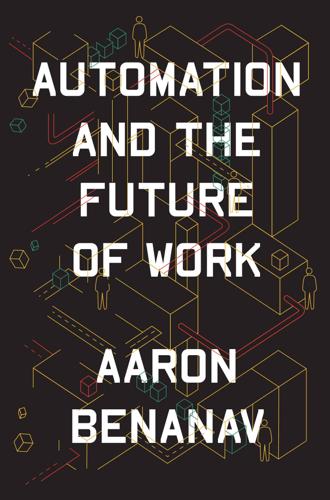
Automation and the Future of Work
by
Aaron Benanav
Published 3 Nov 2020
He argued that voluntary associations would flourish in a world where money and private property had been abolished and necessary labors were pooled in common.15 These ideas were taken up in various guises by Otto Neurath—the original target of the socialist calculation debate—and by thinkers as diverse as W.E.B. Du Bois, John Dewey, and Karl Polanyi. All advocated for a world in which democratic associations of women and men replaced the rule of markets with cooperative production, and—taking advantage of capitalist technologies—reduced the common labors of necessity to expand a realm of individual freedoms.
…
Alongside their later novel, Hard to Be a God (Eyre Methuen, 1975 [1964]), this vision of space-faring communists perhaps served as a model for Star Trek and for Banks’s Culture series, both of which premiered in 1987. 5 Thomas More, Utopia, 2nd ed., Yale University Press, 2014, pp. 47, 132. 6 For Hammond’s 1858 mudsill theory, which claimed it was necessary to have slaves for drudgery, so the rest of society could be raised above the muck, see Elizabeth Anderson, Private Government, Princeton University Press, 2017, pp. 30–1. See also W.E.B. Du Bois, Darkwater: Voices from within the Veil, Dover, 1999 [1920], p. 69. 7 See More, Utopia, pp. 60–72; Étienne Cabet, Travels in Icaria, Syracuse University Press, 2003 [1840], pp. 80–9; Karl Marx, Grundrisse: Foundations of a Critique of Political Economy, Penguin, 1993, pp. 707–12; Karl Marx, Capital, vol. 3, Penguin, 1991, pp. 958–9; and Peter Kropotkin, The Conquest of Bread, Cambridge University Press, 2015, pp. 99–112.
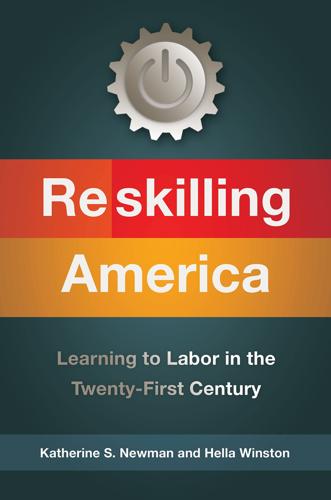
Reskilling America: Learning to Labor in the Twenty-First Century
by
Katherine S. Newman
and
Hella Winston
Published 18 Apr 2016
Rigorous, demanding vocational education, coupled with shop floor experience in the form of apprenticeship, fit that bill. 1 The Limits of the “College Solution” Booker T. Washington, distinguished graduate of Hampton Normal and Agricultural Institute, founding president of the Tuskegee Institute, is remembered today as the man who lost a great debate with his arch-rival, W. E. B. Du Bois, champion of civil rights and advocate for the “talented tenth” among African Americans. In his well-known “Atlanta Address,” Washington argued that black people less than one generation away from slavery would succeed in a racially polarized world only by pulling themselves up by their own bootstraps through “industry, thrift, intelligence and property.”
…
One of the most trenchant critics of “college for all,” Northwestern University sociologist Jim Rosenbaum, argues that one of the reasons we are falling behind on career education is that we just don’t believe in it. We have put all of our eggs in a single, one-size-fits-all basket: We encourage all students to attend college rather than preparing any of them for work. We follow the example of W. E. B. Du Bois rather than the advice of Booker T. Washington. Harvard’s Pathways to Prosperity report argues that students need exposure to work opportunities and that the emphasis on placing everyone in college has been a failure. Coming from an indisputably authoritative source, the report provoked a furious response from advocates of college for all on the grounds that what was being proposed was nothing more than a dumping ground.
…
.… The tenth man, with superior natural endowments, symmetrically trained and highly developed, may become a mightier influence, a greater inspiration to others than all the other nine, or nine times nine like them.” Quoted by Henry Louis Gates in his essay “Who Really Invented the ‘Talented Tenth’?,” The Root, February 18, 2013, http://www.theroot.com/articles/history/2013/02/talented_tenth_theory_web_du_bois_did_not_really_invent_it.html. 2. W. E. B. Du Bois, “The Talented Tenth,” from The Negro Problem: A Series of Articles by Representative American Negroes of Today (New York: J. Pott, 1903). 3. Gates, “Who Invented the ‘Talented Tenth’?” 4. Ibid. 5. Data come from the US Census Bureau October Current Population survey. Richard Fry, “U.S.
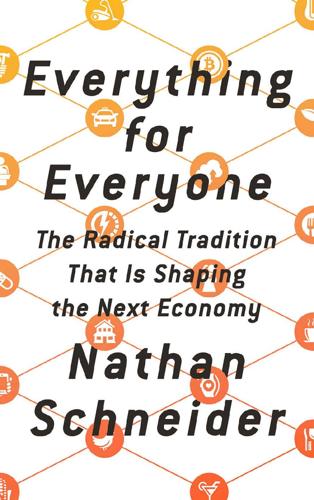
Everything for Everyone: The Radical Tradition That Is Shaping the Next Economy
by
Nathan Schneider
Published 10 Sep 2018
The commonwealth, and the gradual, evolutionary process of getting there, offered an antidote to the authoritarian tendencies then ascending on the right and the left; for six-time Socialist Party presidential candidate Norman Thomas, writing in 1934, “the only effective answer to the totalitarian state of fascism is the cooperative commonwealth.” Farmers had been setting up purchasing and marketing co-ops for decades to counteract the power of urban industrialists. W. E. B. Du Bois, meanwhile, was documenting and celebrating the commonwealth among the “communal souls” in African American cooperative businesses.6 All this rested on a faith that ordinary people could choose their destinies. One of the most memorable slogans from the labor struggles in those days was a saying of child-laborer-turned-organizer Rose Schneiderman: “The worker must have bread, but she must have roses, too.”
…
The People’s Party elected a local Knights of Labor secretary to the Colorado governor’s seat in 1893, and before the year was out, it became the second state to adopt women’s suffrage. The populists’ basic premise throughout was that opposing entrenched power and creating co-ops went hand in hand.19 That strategy was already well known and well practiced among African Americans. W. E. B. Du Bois, the most prominent black intellectual of the period, organized a conference in 1907 called “Economic Cooperation Among Negro Americans” at Atlanta University. The event’s resolutions determined, “From the fact that there is among Negroes, as yet, little of that great inequality of wealth distribution which marks modern life, nearly all their economic effort tends toward true economic cooperation.”20 The almost two-hundred-page report details the many forms of the black cooperative economy, broadly conceived, including churches, schools, insurance, banks, secret societies, and more.
…
The term cooperative commonwealth first took hold with Laurence Gronlund, The Co-operative Commonwealth in Its Outlines: An Exposition of Modern Socialism (Lee and Shepard, 1884), which translated Karl Marx into a more gradualist, explicitly Darwinist evolution into cooperative arrangements, while retaining Marx’s all-encompassing state; Norman Thomas, The Choice Before Us: Mankind at the Crossroads (AMS Press, 1934); on Du Bois and the commonwealth, see Olabode Ibironke, “W.E.B. Du Bois and the Ideology or Anthropological Discourse of Modernity: The African Union Reconsidered,” Social Identities 18, no. 1 (2012), and Jessica Gordon Nembhard, Building a Cooperative Solidarity Commonwealth (The Next System Project, 2016); see also Edward K. Spann, Brotherly Tomorrows: Movements for a Cooperative Society in America, 1820–1920 (Columbia University Press, 1989), and Alex Gourevitch, From Slavery to the Cooperative Commonwealth: Labor and Republican Liberty in the Nineteenth Century (Cambridge University Press, 2014). 7.
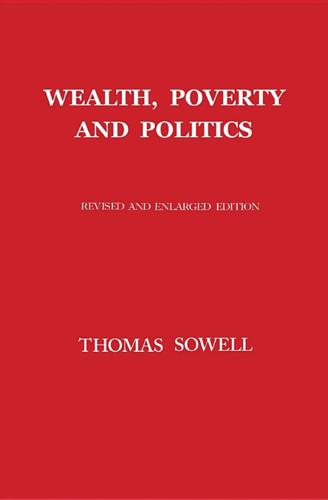
Wealth, Poverty and Politics
by
Thomas Sowell
Published 31 Aug 2015
Unfortunately, intolerance has not been confined to Europeans, but has been common among peoples and nations around the world. Intolerance has been especially fierce where a minority outperforms a majority.59 Some have sought to depict racial differences, based on skin color differences, as uniquely poisonous sources of intergroup hostility. W.E.B. Du Bois’ 1903 statement that “the problem of the Twentieth Century is the problem of the color-line”60 has been taken as prophetic by many. But however plausible or widespread this view, the actual history of the twentieth century shows its biggest and most ghastly mass murders to have been between people with the same skin color— whether Hutus and Tutsis in Rwanda,61 Serbs and Croatians in the Balkans,62 Hindus and Muslims in India,63 the Khmer Rouge and their victims in Cambodia64 or the Nazi Holocaust against the Jews.65 Whether in Europe, Africa or Asia, mass murders of people of the same skin color were the rule, rather than the exception, during the twentieth century.
…
d About ten percent of the black population in America had been free before the Civil War, and these “free persons of color” had a head start that made their descendants so much more experienced and more educated that they remained the elite of the black population on into the middle of the twentieth century. These included historic figures such as W.E.B. Du Bois, Homer Plessy of Plessy v. Ferguson and Thurgood Marshall, the attorney who argued the landmark case of Brown v. Board of Education. e Contrast that with today, when most people living in officially defined poverty have central air conditioning, cable television and multiple television sets per household, but who would not dare to leave their apartment doors unlocked.
…
These teachers, usually young women, braved nearly impossible conditions, including the hostility of Southern white society, from which they were often ostracized and sometimes threatened, and many utterly unprepared black students, handicapped both by the experience of slavery and by the general Southern culture in which education was by no means a high priority. W.E.B. Du Bois called the work of these white volunteers from the North the “finest thing in American history.”10 Much of such philanthropic activity as this is ignored by those who largely ignore productivity in general, whether economically or socially motivated productivity. But such voluntary civic-minded activities cannot be taken as given, natural or something that just happens somehow.
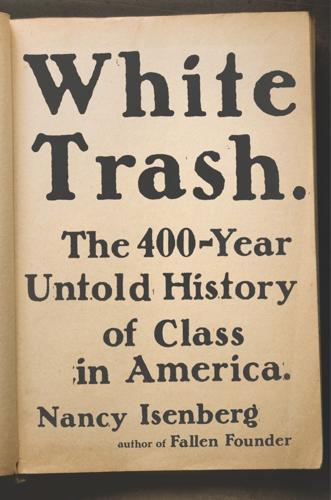
White Trash: The 400-Year Untold History of Class in America
by
Nancy Isenberg
Published 20 Jun 2016
But as evidenced in the popularity of the “reality TV” shows Duck Dynasty and Here Comes Honey Boo Boo in recent years, white trash in the twenty-first century remains fraught with the older baggage of stereotypes of the hopelessly ill bred. A host of well-known and lesser-known figures contributed to the long saga of America’s embattled lowly breed. These include Benjamin Franklin, Thomas Jefferson, Davy Crockett, Harriet Beecher Stowe, Jefferson Davis, Andrew Johnson, W. E. B. Du Bois, Theodore Roosevelt, Erskine Caldwell, James Agee, Elvis Presley, Lyndon Baines Johnson, James Dickey, Billy Carter, Dolly Parton, William Jefferson Clinton, and Sarah Palin, to name a few. Examining their ideas, shifting public images, and self-images helps us to make greater sense of the curious and complicated story of American class identity.
…
Neither class gained much when reduced to cannon fodder.56 CHAPTER EIGHT Thoroughbreds and Scalawags Bloodlines and Bastard Stock in the Age of Eugenics It is better for all the world if, instead of waiting to execute degenerate offspring for crime or to let them starve for their imbecility, society can prevent those who are manifestly unfit from continuing their kind. . . . Three generations of imbeciles are enough. —Chief Justice Oliver Wendell Holmes, Buck v. Bell (1927) In 1909, at the National Negro Congress in New York City, W. E. B. Du Bois gave a provocative speech on the reception of Darwinism in the United States. In the published version of the speech, “The Evolution of the Race Problem,” Du Bois declared that social Darwinism had found such favor in America because the very idea of “survival of the fittest” ratified the reactionary racial politics that already prevailed.
…
One other possible explanation deserves mention: “redneck” came into vogue in the 1890s, at the same time Afrikaners were calling English soldiers “rednecks” in the Boer War in South Africa, highlighting the contrast between the Brit’s sun-scored skin and his pale white complexion. Such terminology was also a staple of the sharecropper’s rhythmic chant (circa 1917): “I’d druther be a Nigger, an’ plow ole Beck, Dan a white Hill Billy wid his long red neck.”36 • • • This was the world of W. E. B. Du Bois. This was also the world of Theodore Roosevelt. The two men agreed on very little—and obviously not on evolutionary theory or the science of eugenics, to which Roosevelt was a complete convert. Certainly Du Bois found no comfort in the president’s militarism or his glorification of the white settler’s savagery in the Old West.
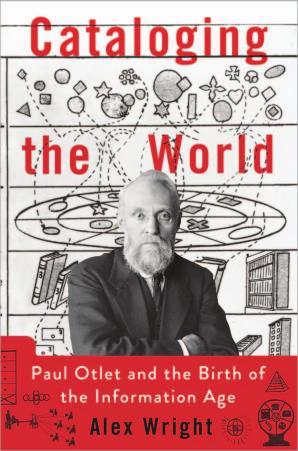
Cataloging the World: Paul Otlet and the Birth of the Information Age
by
Alex Wright
Published 6 Jun 2014
black activists from around the world, welcoming delegates from the fledgling National Association for the Advancement of Colored People (NAACP), England’s African Progress Union, and representatives from other like-minded organizations around the world. The first Pan-African Congress had been instigated by NAACP founder W. E. B. Du Bois and taken place in 1919 in Paris, where initially it met with opposition from the French government. The second congress provoked even more controversy than the first. Du Bois advocated that Belgium relinquish its entire colony in the Congo, along with 9 million native residents, to a newly created African international zone.
…
Cambridge: Cambridge University Press, 2012. Emerson, Barbara. Leopold II of the Belgians: King of Colonialism. London: Weidenfeld and Nicolson, 1979. Erasmus, D., and W. W. Barker. The Adages of Erasmus. Toronto: University of Toronto Press, 2001. Fauset, Jessie. “Impressions of the Second Pan-African Congress,” edited by W. E. B. Du Bois. The Crisis: A Record of the Darker Races 23, no. 133 (November 1921): 12–18. Febvre, Lucien, and Henri-Jean Martin. The Coming of the Book: The Impact of Printing 1450–1800. London: Verso, 1997. Foxe, John. The Unabridged Acts and Monuments Online. 1570th ed. Sheffield: HRI Online Publications, 2011. http//www.johnfoxe.org. 327 BIBLIOGRAPHY Friedman, Thomas L.
…
Amsterdam: Elsevier, 1990. ———. “Something about Bibliography.” In International Organisation and Dissemination of Knowledge: Selected Essays of Paul Otlet, translated by W. Boyd Rayward, 11–24. Amsterdam: Elsevier, 1990. ———. “Suggestions of Paul Otlet Regarding the Pan African Congress,” June 4, 1921. MS 312. W. E. B. Du Bois Papers, Special Collections and University Archives, University of Massachusetts Amherst Libraries. http://oubliette .library.umass.edu/view/full/mums312-b019-i033. ———. “Sur la structure des nombres classificateurs.” IIB Bulletin, no. 1 (1895): 230–43. 331 BIBLIOGRAPHY ———. “The Systematic Organization of Documentation and the Development of the International Institute of Bibliography.”
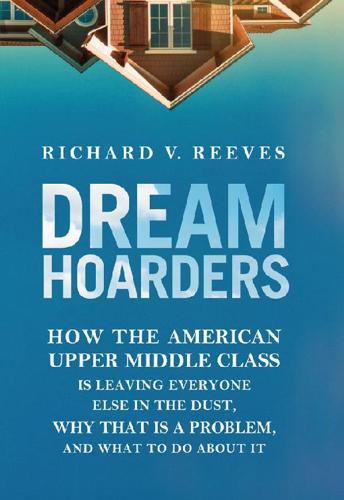
Dream Hoarders: How the American Upper Middle Class Is Leaving Everyone Else in the Dust, Why That Is a Problem, and What to Do About It
by
Richard V. Reeves
Published 22 May 2017
Meanwhile, class barriers have risen, in five areas in particular: economic fortunes, educational attainment, family formation, geography, and in terms of health and life expectancy. “WE ARE THE 20 PERCENT”: THE MONEYED UPPER MIDDLE CLASS The American conversation about economic inequality has two dominant motifs. The first is the persistence of poverty, even in a country that a hundred years ago W. E. B. Du Bois labeled “a land of dollars.”8 Nobody can plausibly suggest that the War on Poverty was won: 15 percent of Americans remain in poverty, according to official estimates.9 But nor can anyone sensibly suggest that the War on Poverty was lost, either. The poverty rate has dropped by 7 percent since 1959, largely as a result of increased government transfers to those with low incomes.
…
Richard Reeves and Edward Rodrigue, “Five Bleak Facts on Black Opportunity,” Social Mobility Memos (blog), January 15, 2015 (www.brookings.edu/blog/social-mobility-memos/2015/01/15/five-bleak-facts-on-black-opportunity/). 7. Richard Reeves and Isabel Sawhill, “Men’s Lib!” New York Times, November 14, 2015. 8. W. E. B. Du Bois, The Souls of Black Folk (Chicago: A. C. McClurg & Co., 1903), p. 8. 9. U.S. Census Bureau, “Income and Poverty in the United States: 2014,” September 2015 (https://www.census.gov/content/dam/Census/library/publications/2015/demo/p60-252.pdf). 10. U.S. Census Bureau, “Percent Distribution of Households, by Selected Characteristics Within Income Quintile and Top 5 Percent in 2014,” Table HINC-05 (www.census.gov/data/tables/time-series/demo/income-poverty/cps-hinc/hinc-05.html). 11.
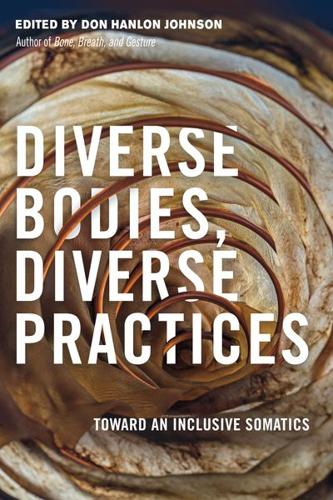
Diverse Bodies, Diverse Practices: Toward an Inclusive Somatics
by
Don Hanlon Johnson
Published 10 Sep 2018
Several years later, black activist and scholar, W. E. B. Du Bois voiced the same sentiments in The Souls of Black Folk, that black people in the United States experience a double consciousness, [a] sense of always looking at one’s self through the eyes of others, of measuring one’s soul by the tape of a world that looks on in amused contempt and pity. One ever feels … two-ness,—an American, a Negro; two souls, two thoughts, two unreconciled strivings; two warring ideals in one dark body, whose dogged strength alone keeps it from being torn asunder.8 8 W. E. B. Du Bois, The Souls of Black Folk (Mineola, NY: Dover Publications, 1994), 2–3.
…
I accredit my ability to exercise and maintain the level of self-efficacy and self-worth that I embody to my parents and their dedication to educating me about African and African American people, geniuses, inventors, activists, scholars, athletes, and entrepreneurs. They had books authored by prominent Black scholars around the house, including The Miseducation of the Negro by Carter G. Woodson, The Souls of Black Folk by W. E. B. Du Bois and Why the Caged Bird Sings by Maya Angelou. They also lived as an example of what I could achieve, as my mom received her doctorate in education and my dad was a successful business owner since before I was born. My mother and father continue to keep symbols of African Americans and Africa around their houses, including African masks, dolls, paintings and photos with Black people in them, as well as other cultural motifs.
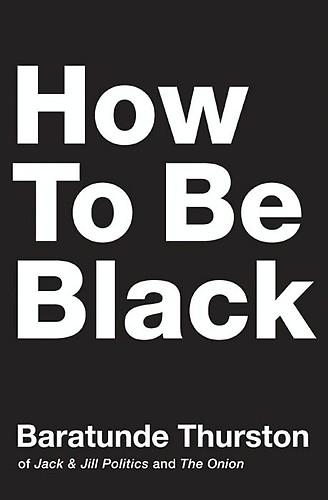
How to Be Black
by
Baratunde Thurston
Published 31 Jan 2012
Know the Key People There have been lots of unsung heroes in the history of Africans in America, but they’re unsung for a reason. To appear knowledgeable, you need to know only a few: Dr. Martin Luther King Jr., Rosa Parks, Malcolm X, Harriet Tubman, Sojourner Truth, Jackie Robinson, Muhammad Ali, W. E. B. Du Bois, Booker T. Washington, J.J. from Good Times, Frederick Douglass, Langston Hughes, Thurgood Marshall, Dr. Martin Luther King Jr., and Barack Obama. When in doubt, see if there’s ever been a feature-length film about the person or a T-shirt sold using his or her image. If the answer to both of these questions is no, move on. 5.
…
My mother was a computer programmer at OCC, writing and inspecting code in the COBOL programming language, because, you know, single black mothers love programming, son! * The ankh is an Egyptian hieroglyph symbolizing the key of life or eternal life. It appears often in Egyptian art, Egyptian tombs, and season five of Lost. *Henry Louis Gates is a Harvard University professor and director of the W. E. B. Du Bois Institute for African and African American Research. In 2006 and 2008, he hosted African American Lives on PBS and explored the genealogical backgrounds of several prominent black Americans. In 2009, he, President Obama, and a white Cambridge, Massachusetts, police officer shared a beer at the White House
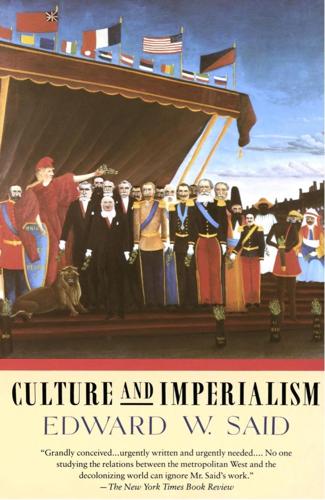
Culture and Imperialism
by
Edward W. Said
Published 29 May 1994
“The Nation” is for Tagore a tight and unforgiving receptacle of power for producing conformity, whether British, Chinese, Indian, or Japanese. India’s answer, he said, must be to provide not a competing nationalism, but a creative solution to the divisiveness produced by racial consciousness.60 A similar insight is at the heart of W.E.B. Du Bois’s The Souls of Black Folk (1903): “How does it feel to be a problem? … Why did God make me an outcast and a stranger in mine own house?”61 Both Tagore and Du Bois, however, warn against a wholesale, indiscriminate attack on white or Western culture. It is not Western culture that is to blame, says Tagore, but “the judicious niggardliness of the Nation that has taken upon itself the white man’s burden of criticizing the East.”62 Three great topics emerge in decolonizing cultural resistance, separated for analytical purposes, but all related.
…
To speak today of Gabriel García Márquez, Salman Rushdie, Carlos Fuentes, Chinua Achebe, Wole Soyinka, Faiz Ahmad Faiz, and many others like them is to speak of a fairly novel emergent culture unthinkable without the earlier work of partisans like C.L.R. James, George Antonius, Edward Wilmot Blyden, W.E.B. Du Bois, José Martí. I want to discuss one fairly discrete aspect of this powerful impingement—that is, the work of intellectuals from the colonial or peripheral regions who wrote in an “imperial” language, who felt themselves organically related to the mass resistance to empire, and who set themselves the revisionist, critical task of dealing frontally with the metropolitan culture, using the techniques, discourses, and weapons of scholarship and criticism once reserved exclusively for the European.
…
The second was the dramatically prolonged Western imperial mission in various regions that I have already mentioned, principally Algeria, Vietnam, Palestine, Guinea, and Cuba. But liberation, as distinguished from nationalist independence, became the strong new theme, a theme already implicit in earlier works by people like Marcus Garvey, José Marti, and W.E.B. Du Bois, for instance, but now requiring the propulsive infusion of theory and sometimes armed, insurrectionary militancy. The national identity struggling to free itself from imperialist domination found itself lodged in, and apparently fulfilled by, the state. Armies, flags, legislatures, schemes of national education, and dominant (if not single) political parties resulted and usually in ways that gave the nationalist elites the places once occupied by the British or the French.
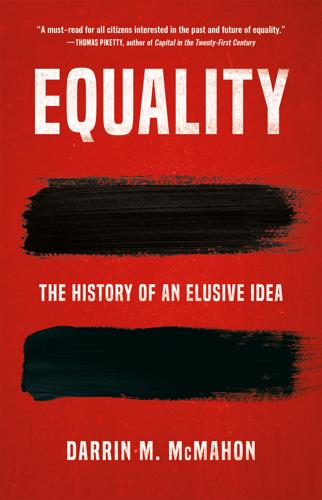
Equality
by
Darrin M. McMahon
Published 14 Nov 2023
That, in effect, is how imaginary equality becomes real.9 It follows, logically at least, that equality is perfectly compatible with difference, and even presupposes it. For beyond the stated points of comparison themselves—and the equal rights or privileges they confer—diversity will be the norm. W. E. B. Du Bois was characteristically astute when he observed, in 1915, that “the equality in political, industrial and social life which modern men must have in order to live, is not to be confounded with sameness. On the contrary… it is rather insistence upon the right of diversity.” Equality, to put it another way, is always equality from a certain perspective and point of view.
…
As Ramaswami Mudaliar, the Indian delegate at San Francisco, put it, the “fundamental human rights of all beings all over the world should be recognized, and men and women treated as equals in every sphere.”1 That was a ringing and remarkable invocation, following as it did on decades of colonial exploitation and years of wartime atrocity. But the paradoxes at play in the spectacle of the Great Powers endorsing the equality of peoples they had long ruled, and in many places still did, was not lost on clear-eyed observers. W. E. B. Du Bois, for one, on hand in San Francisco as a representative from the National Association for the Advancement of Colored People (NAACP), called out the “twisted contradiction of thought in the minds of white men” who proclaimed universal rights while embracing the privileges of power that attended their countries and the color of their skin.
…
Ulrike Davy and Antje Flüchter (Bielefeld: Bielefeld University Press, 2022), 11–31. On the term “host property,” coined by the legal theorist John Coons, see Jeremy Waldron, One Another’s Equals: The Basis of Human Equality (Cambridge, MA: Belknap Press of Harvard University Press, 2017), 85–88. 10. W. E. B. Du Bois, “The Immediate Program of the American Negro,” The Crisis 9, no. 6 (April 1915): 310–312; Otto Dann, “Gleichheit,” 2:997–998. 11. On equality-as-balance, see Teresa M. Bejan’s First Among Equals: A History of Equality in Theory and in Practice (Cambridge, MA: Harvard University Press, forthcoming), ch. 1. 12.

City on the Verge
by
Mark Pendergrast
Published 5 May 2017
“The colored man who… say[s] that the Negroid race does not want social equality… is either an ignoramus or is an advocate of the perpetual servility and degradation of his race variety,” wrote Bishop Henry McNeal Turner, who ultimately concluded that America held no viable future for blacks and advocated their return to Africa. W. E. B. Du Bois, who moved to Atlanta in 1897 as a professor of history and economics at Atlanta University, became the most prominent critic of Booker T. Washington. In his 1903 book, The Souls of Black Folk, Du Bois explored “the strange meaning of being black here at the dawning of the Twentieth Century.”
…
One such refugee asked Baker, “How would you feel if you saw a governor, a mayor, a sheriff, whom you could not oppose at the polls, encourage by deed or word or both, a mob of ‘best’ and worst citizens to slaughter your people in the streets and in their own homes and in their places of business?” W. E. B. Du Bois reacted by writing “A Litany of Atlanta”: “Bewildered we are, and passion-tost, mad with the madness of a mobbed and mocked and murdered people.… Sit no longer blind, Lord God, deaf to our prayer and dumb to our dumb suffering. Surely Thou art not white, O Lord, a pale, bloodless, heartless thing?”
…
Bullard, ed., Sprawl City: Race, Politics, and Planning in Atlanta (2000); Rebecca Burns, Atlanta: Yesterday and Today (2010); Edward Randolph Carter, The Black Side: A Partial History of the Business, Religious, and Educational Side of the Negro in Atlanta, Ga (1894); John Emmeus Davis, ed., The Community Land Trust Reader (2010); Jeff Deel, The Garden and the Ghetto: Stories and Reflections from the City of Refuge (2011); Deloitte Consulting, A Blueprint to End Homelessness in Atlanta in Ten Years (2003); Matthew Desmond, Evicted: Poverty and Profit in the American City (2016); W. E. B. Du Bois, The Souls of Black Folk: Essays and Sketches (1903); Peter R. Gathje, ed., A Work of Hospitality: The Open Door Reader, 1998–2002 (2002); David Fort Godshalk, Veiled Visions: The 1906 Atlanta Race Riot and the Reshaping of American Race Relations (2005); Thornwell Jacobs, The Law of the White Circle (novel, 1907); Larry Keating, Atlanta: Race, Class, and Urban Expansion (2001); Kevin M.
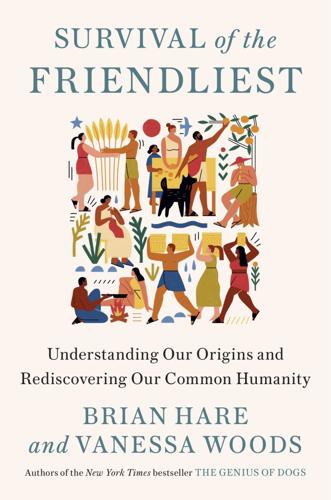
Survival of the Friendliest: Understanding Our Origins and Rediscovering Our Common Humanity
by
Brian Hare
and
Vanessa Woods
Published 13 Jul 2020
“I can see no tragedy in being too dark to be invited to a white school social affair,” wrote Zora Neale Hurston in 1955.51 They foresaw the hard road ahead for their children, as well as the firing of thousands of brilliant, caring black teachers and administrators (while white parents might tolerate having their children educated alongside black children, they certainly would not tolerate having their children educated by black teachers.) W.E.B. Du Bois wrote that “a separate Negro school, where children are treated like human beings, trained by teachers of their own race, who know what it means to be black,52 [would be] infinitely better than making our boys and girls doormats.”53 This reasoning was used for many years to justify segregation, by both powerful majorities and disadvantaged minority groups.52, 54 But after World War II, researchers found that contact was the only thing that reliably reduced intergroup conflict.
…
Hurston, August 11, 1955, letter to the Orlando Sentinel. Retrieved from http://teachingamericanhistory.org/library/document/letter-to-the-orlando-sentinel/. 52. Thomas F. Pettigrew, Linda R. Tropp, When Groups Meet: The Dynamics of Intergroup Contact (New York: Psychology Press, 2013). 53. W.E.B. Du Bois, “Does the Negro Need Separate Schools?” Journal of Negro Education 4, 328–35 (1935). 54. J. W. Jackson, “Contact Theory of Intergroup Hostility: A Review and Evaluation of the Theoretical and Empirical Literature,” International Journal of Group Tensions 23, 43–65 (1993). 55. S.
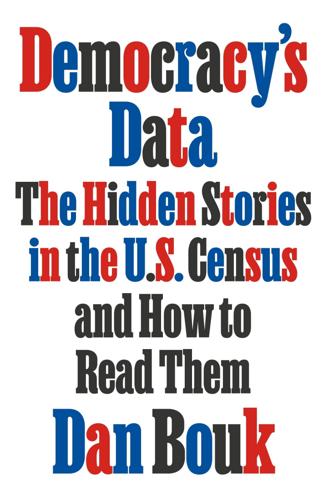
Democracy's Data: The Hidden Stories in the U.S. Census and How to Read Them
by
Dan Bouk
Published 22 Aug 2022
Germany was actually a much newer nation-state than was the United States—it was united only in 1873 at the end of the Franco-Prussian war. From the fervor of the new-kindled nationalism grew a new kind of social science, fact-filled and ethically rich, devoted to the study of nations and states. One of those American students who made the Atlantic crossing was W.E.B. Du Bois, whose 1899 social survey The Philadelphia Negro introduced the German style of social science to the study of race in the United States and whose masterpiece The Souls of Black Folk was cousin to the sort of fieldwork done by the Brothers Grimm to capture the spirit/soul (Geist) of many European nations (Volk).21 The data-driven methods of German social science entered the Census Bureau at the turn of the century too, borne by the first generation of professional scientists to run the newly permanent Census office—men like Walter F.
…
On German chemistry and its role in American agriculture, see Margaret Rossiter, The Emergence of Agricultural Science: Justus Liebig and the Americans, 1840–1880 (New Haven, CT: Yale University Press, 1975). 21. This interpretation of Du Bois relies on Kwame Anthony Appiah, Lines of Descent: W.E.B. Du Bois and the Emergence of Identity (Cambridge, MA: Harvard University Press, 2014). On this era’s intellectual exchanges more generally, see Daniel T. Rodgers, Atlantic Crossings: Social Politics in a Progressive Age (Cambridge, MA: Belknap Press of Harvard University Press, 1998). Saidiya Hartman offers an important, recent reinterpretation of Du Bois’s social science and his Philadelphia study in “An Atlas of the Wayward,” Wayward Lives, Beautiful Experiments: Intimate Histories of Riotous Black Girls, Troublesome Women, and Queer Radicals (New York: W.
…
Journal of Official Statistics 23, no. 1 (2007): 1–34. Appadurai, Arjun. “Number in the Colonial Imagination.” In Orientalism and the Postcolonial Predicament: Perspectives on South Asia, edited by Carol A. Breckenridge and Peter van der Veer. Philadelphia: University of Pennsylvania Press, 1993. Appiah, Kwame Anthony. Lines of Descent: W.E.B. Du Bois and the Emergence of Identity. Cambridge, MA: Harvard University Press, 2014. Aronova, Elena, Christine von Oertzen, and David Sepkoski, eds. “Data Histories.” Osiris 32 (2017). Ascher, Kate. The Heights: Anatomy of a Skyscraper. New York: Penguin Books, 2011. Balinski, Michel L., and H. Peyton Young.
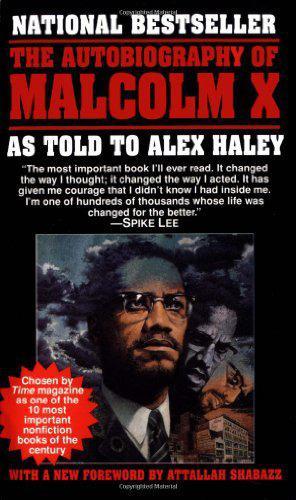
The autobiography of Malcolm X
by
Malcolm X; Alex Haley
Published 15 Aug 1999
I have since bought that set of books and have it at home for my children to read as they grow up. It's called _Wonders of the World_. It's full of pictures of archaeological finds, statues that depict, usually, non-European people. I found books like Will Durant's _Story of Civilization_. I read H. G. Wells' _Outline of History_. _Souls Of Black Folk_ by W. E. B. Du Bois gave me a glimpse into the black people's history before they came to this country. Carter G. Woodson's _Negro History_ opened my eyes about black empires before the black slave was brought to the United States, and the early Negro struggles for freedom. J. A. Rogers' three volumes of _Sex and Race_ told about race-mixing before Christ's time; about Aesop being a black man who told fables; about Egypt's Pharaohs; about the great Coptic Christian Empires; about Ethiopia, the earth's oldest continuous black civilization, as China is the oldest continuous civilization.
…
One evening I met most of the officials in Ghana-all of those with whom I had previously talked, and more-at a party that was given for me by the Honorable Kofi Baako, the Ghanaian Minister of Defense, and the Leader of the National Assembly. I was told that this was the first time such an honor was accorded to a foreigner since Dr. W. E. B. Du Bois had come to Ghana. There was music, dancing, and fine Ghanaian food. Several persons at the party were laughing among themselves, saying that at an earlier party that day, U.S. Ambassador Mahomey was knocking himself out being exceptionally friendly and jovial. Some thought that he was making a strong effort to counteract the truth about America that I was telling every chance I got.
…
Temporarily, a teacher rescued the fellow-but then the students rushed him and drove him away, shouting, “Stooge!” . . .“C.I.A.” . . .“American agent!” Chinese Ambassador and Mrs. Huang Hua gave a state dinner in my honor. The guests included the Cuban and the Algerian ambassadors, and also it was here that I met Mrs. W. E. B. Du Bois. After the excellent dinner, three films were shown. One, a color film, depicted the People's Republic of China in celebration of its Fourteenth Anniversary. Prominently shown in this film was the militant former North Carolina Afro-American Robert Williams, who has since taken refuge in Cuba after his advocacy that the American black people should take up arms to defend and protect themselves.
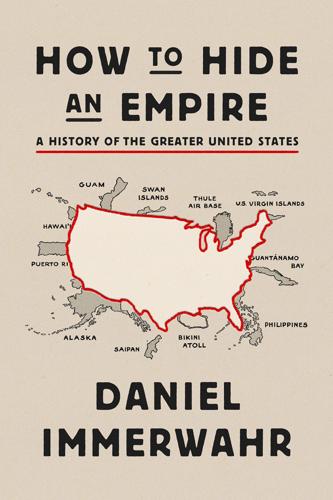
How to Hide an Empire: A History of the Greater United States
by
Daniel Immerwahr
Published 19 Feb 2019
The dispossession of Native Americans and relegation of many to reservations was pretty transparently imperialist. Then, in the 1840s, the United States fought a war with Mexico and seized a third of it. Fifty years later, it fought a war with Spain and claimed the bulk of Spain’s overseas territories. Empire isn’t just landgrabs, though. What do you call the subordination of African Americans? In W.E.B. Du Bois’s eyes, black people in the United States looked more like colonized subjects than like citizens. Many other black thinkers, including Malcolm X and the leaders of the Black Panthers, have agreed. Or what about the spread of U.S. economic power abroad? The United States might not have physically conquered Western Europe after World War II, but that didn’t stop the French from complaining of “coca-colonization.”
…
Anyone setting forth to speak about republican virtues—say, at a Fourth of July celebration—would be urged to keep silent “lest his utterances excite rebellion among distant subjects.” It was a compelling argument, and Bryan commanded a large and motley coalition of anti-imperialists. It included such African Americans as W.E.B. Du Bois and hard-line white supremacists such as Senator “Pitchfork” Ben Tillman of South Carolina. Businessmen (Andrew Carnegie, who offered to buy the Philippines for $20 million so he could set it free) and labor leaders (Samuel Gompers, president of the AFL) joined the cause. So did the presidents of Harvard, Cornell, Stanford, Michigan, and Northwestern.
…
Had a federal official given an order like that on the mainland, it would have violated the Second Amendment. Here, it merely incensed and alarmed the populace. Six to ten thousand fled their homes and moved up another volcanic mountain, Bud Bagsak, taking with them some three hundred rifles. Soldiers stand over a trench filled with men’s and women’s corpses after the Bud Dajo Massacre, 1906. W.E.B. Du Bois declared this photograph to be “the most illuminating thing I have ever seen” and proposed displaying it in his classroom “to impress upon the students what wars and especially Wars of Conquest really mean.” Pershing was more patient than Wood. He waited for months, and eventually, once the food started running out, most of the rebels came back down.
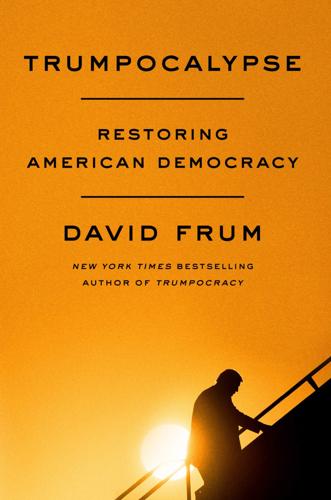
Trumpocalypse: Restoring American Democracy
by
David Frum
Published 25 May 2020
Can we please ask the media and the politicians—how is it now that kids are smarter somehow than their parents?12 As American conservatives have felt the ebb of cultural power away from them, they have come to feel watched and judged. They do not like it. “How does it feel to be a problem?” memorably asked W. E. B. Du Bois.13 Du Bois was writing about the African American experience. The question might now be retorted upon the petroleum-burning American way of life. That pickup truck, powerful enough to haul a stack of lumber, that you drive from your subdivision to the office park? Problem. The polystyrene packaging that keeps your barbecue brisket warm and moist?
…
Donald Trump (@realDonaldTrump), Twitter, September 23, 2019, 11:36 p.m., https://twitter.com/realdonaldtrump/status/1176339522113679360. 12. “Glenn Beck: From Nudge to Shove,” Fox News, September 28, 2010, updated January 14, 2015, https://www.foxnews.com/story/glenn-beck-from-nudge-to-shove. 13. W. E. B. Du Bois, The Souls of Black Folk (Chicago: A.C. McClurg, 1903), 1. 14. Charlie Nash, “Rep. Matt Gaetz Mocks Media as ‘Kale and Quinoa’ Eaters Who Look Down Upon ‘Fried Food’ Eating ‘Real America,’” Mediate, November 7, 2019, https://www.mediaite.com/tv/rep-matt-gaetz-mocks-media-as-kale-and-quinoa-eaters-who-look-down-upon-fried-food-eating-real-americans/. 15.

The Card Catalog: Books, Cards, and Literary Treasures
by
Library Of Congress
and
Carla Hayden
Published 3 Apr 2017
From a distance, everyone will be able to read text, enlarged and limited to the desired subject, projected on an individual screen. In this way, everyone from his armchair will be able to contemplate creation in its entirety or in certain of its parts.” W. E. Burghardt Du Bois, The Souls of Black Folk: Essays and Sketches. Chicago, A. C. McClurg & Co., 1928. W. E. B. Du Bois, circa 1920–1930. Robert Frost, New Hampshire. Henry Holt & Co., 1923. Robert Frost speaking into a microphone at Decca Studios. Photograph by Warren Rothschild, New York, New York, October 31, 1951. Librarian of Congress Lawrence Quincy Mumford named Robert Frost the twelfth Consultant in Poetry to the Library of Congress in 1958.
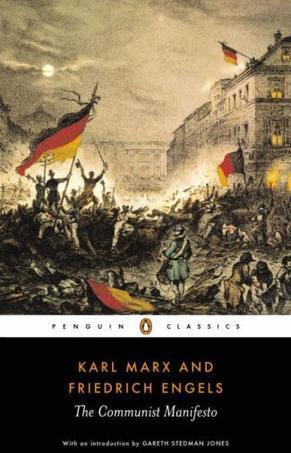
The Communist Manifesto
by
Karl Marx
and
Friedrich Engels
Published 1 Aug 2002
, Willa Cather, 0-553-21358-X THE CANTERBURY TALES, Geoffrey Chaucer, 0-553-21082-3 STORIES, Anton Chekhov, 0-553-38100-8 THE AWAKENING, Kate Chopin, 0-553-21330-X THE WOMAN IN WHITE, Wilkie Collins, 0-553-21263-X HEART OF DARKNESS and THE SECRET SHARER, Joseph Conrad, 0-553-21214-1 LORD JIM, Joseph Conrad, 0-553-21361-X THE DEERSLAYER, James Fenimore Cooper, 0-553-21085-8 THE LAST OF THE MOHICANS, James Fenimore Cooper, 0-553-21329-6 MAGGIE: A GIRL OF THE STREETS AND OTHER SHORT FICTION, Stephen Crane, 0-553-21355-5 THE RED BADGE OF COURAGE, Stephen Crane, 0-553-21011-4 INFERNO, Dante, 0-553-21339-3 PARADISO, Dante, 0-553-21204-4 PURGATORIO, Dante, 0-553-21344-X THE ORIGIN OF SPECIES, Charles Darwin, 0-553-21463-2 MOLL FLANDERS, Daniel Defoe, 0-553-21328-8 ROBINSON CRUSOE, Daniel Defoe, 0-553-21373-3 BLEAK HOUSE, Charles Dickens, 0-553-21223-0 A CHRISTMAS CAROL, Charles Dickens, 0-553-21244-3 DAVID COPPERFIELD, Charles Dickens, 0-553-21189-7 GREAT EXPECTATIONS, Charles Dickens, 0-553-21342-3 HARD TIMES, Charles Dickens, 0-553-21016-5 OLIVER TWIST, Charles Dickens, 0-553-21102-1 THE PICKWICK PAPERS, Charles Dickens, 0-553-21123-4 A TALE OF TWO CITIES, Charles Dickens, 0-553-21176-5 THREE SOLDIERS, John Dos Passos, 0-553-21456-X THE BROTHERS KARAMAZOV, Fyodor Dostoevsky, 0-553-21216-8 CRIME AND PUNISHMENT, Fyodor Dostoevsky, 0-553-21175-7 THE ETERNAL HUSBAND AND OTHER STORIES, Fyodor Dostoevsky, 0-553-21444-6 THE IDIOT, Fyodor Dostoevsky, 0-553-21352-0 NOTES FROM UNDERGROUND, Fyodor Dostoevsky, 0-553-21144-7 SHERLOCK HOLMES VOL I, Sir Arthur Conan Doyle, 0-553-21241-9 SHERLOCK HOLMES VOL II, Sir Arthur Conan Doyle, 0-553-21242-7 SISTER CARRIE, Theodore Dreiser, 0-553-21374-1 THE SOULS OF BLACK FOLK, W. E. B. Du Bois, 0-553-21336-9 THE COUNT OF MONTE CRISTO, Alexandre Dumas, 0-553-21350-4 THE THREE MUSKETEERS, Alexandre Dumas, 0-553-21337-7 MIDDLEMARCH, George Eliot, 0-553-21180-3 SILAS MARNER, George Eliot, 0-553-21229-X SELECTED ESSAYS, LECTURES, AND POEMS, Ralph Waldo Emerson, 0-553-21388-1 TEN PLAYS BY EURIPIDES, Euripides, 0-553-21363-6 APRIL MORNING, Howard Fast, 0-553-27322-1 MADAME BOVARY, Gustave Flaubert, 0-553-21341-5 HOWARDS END, E.
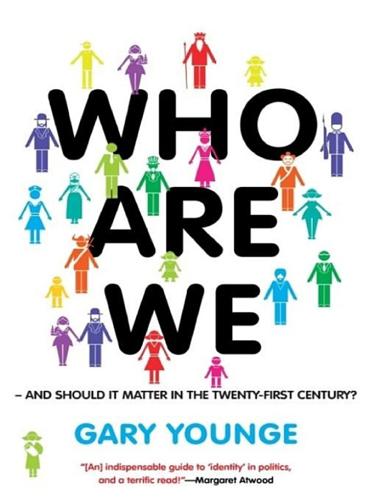
Who Are We—And Should It Matter in the 21st Century?
by
Gary Younge
Published 27 Jun 2011
It ranks over fifty prominent black figures, past and present, according to a five-star Uncle Tom rating, with five being the worst. Michael Jackson, who had plastic surgery which effaced many of his black features, got one star; Bayard Rustin, the gay activist who organized the march on Washington at which King made his “I have a dream” speech, got five; W. E. B. Du Bois, a pioneer of Pan-Africanism who died in Ghana working on an Encyclopedia Africana, was also, according to the authors, a five-star Uncle Tom. Colin Powell (five stars) becomes “an official, government-issue Uncle Tom”; Maya Angelou (two stars) is “the much glorified but innocuous negro emissary of ebony culture”; and Oprah Winfrey (four stars) is “the best unambiguously black ambassador of plantation placidity since Hattie McDaniel gushed over Scarlett in Gone With the Wind.”
…
We all have a duty to help create the “safe spaces” for people to both engage in self-criticism and accept criticism from others. But we have no less a duty to engage in an honest and open manner that makes such difficult discussions possible. “Our worst side has been so shamelessly emphasized that we are denying that we ever had a worst side,” wrote African-American intellectual W. E. B. Du Bois. “In all sorts of ways, we are being hemmed in.” The more democracy there is, the greater is the chance that such discussions will actually lead somewhere. And by democracy I mean not just voting and holding elections—even the most crude dictator has got the hang of that by now—but an actual connection between citizens and their institutions whereby ordinary people can influence and change the world around them.

No Such Thing as a Free Gift: The Gates Foundation and the Price of Philanthropy
by
Linsey McGoey
Published 14 Apr 2015
Recollections from men and women close to Carnegie’s circle suggest that a willingness to sooth his ego, to kindle his confidence in his own intellectual foresight, was essential if you wanted to curry his favour and receive philanthropic support. In the early 1960s, a few months before his death, W. E. B. Du Bois met for an interview with Ralph McGill, a prominent white anti-segregationist news editor. Du Bois recalled his and Booker T. Washington’s efforts to work with early benefactors such as Carnegie, an effort that required endless supplication, if not obsequiousness – a skill that Washington was more adept at than Du Bois.
…
Easterly’s Tyranny of Experts offers an excellent analysis of this divergence. 19Andy Beckett, ‘Inside the Bill and Melinda Gates Foundation’, Guardian, 10 July 2010. 20Jackson Lears, ‘Money Changes Everything’, New Republic, April 2, 2007. 21See Dowie, American Foundations. 22Carnegie, The ‘Gospel of Wealth’ Essays, 11. 23Ibid., 12. 24Lears, ‘Money Changes Everything’. 25Ibid. 26Carnegie, The ‘Gospel of Wealth’ Essays, 12. 27Zinn, A People’s History, 270. 28Phillips, Wealth and Democracy, 238. 29Zinn, A People’s History, 271. 30Phillips, Wealth and Democracy, 238. 31Carnegie, quoted in Nasaw, Andrew Carnegie, 459. 32Zinn, A People’s History, 252. 33ibid., 254. 34Ralph McGill, ‘W. E. B. Du Bois’, Atlantic Monthly (November 1965). 35Ibid. 36Zinn, A People’s History, 272. 37Nasaw, ‘Introduction’, xii. 38Herbert Spencer, Social Statics, Abridged, Together With Man versus the State, Revised (1896), 150. 39Nasaw, Andrew Carnegie, (London: Penguin, 2007), 331. 40Ibid., 522. 41Ibid., 703. 42Lester Frank Ward, ‘Plutocracy and Paternalism’, Forum (November 1895), 303. 43For a comprehensive account of Ludlow and its effects on American business practices, see Andrea Tone, The Business of Benevolence: Industrial Paternalism in Progressive America, (Ithaca, NY: Cornell University Press, 1997), 19. 44Quoted in Inderjeet Parmar, Foundations of the American Century (New York: Columbia University Press, 2012), 38. 45Tone, The Business of Benevolence, 117. 46Inaugural address (1913), see millercenter.org; Wilson’s ‘first message to Congress’, quoted in Phillips, Wealth and Democracy, 47. 47Robert Arnove and Nadine Pinede, ‘Revisiting the “Big Three” Foundations’, Critical Sociology, vol. 33 (2007), 390. 48Ibid., 391. 49Max Weber, The Protestant Ethic and the Spirit of Capitalism (London: Routledge, 2001), 159–63. 50Chernow, Titan, 191. 51Levenick, ‘The Rockefeller Legacy’. 52Steve Weinberg, Taking on the Trust: How Ida Tarbell Brought Down John D.
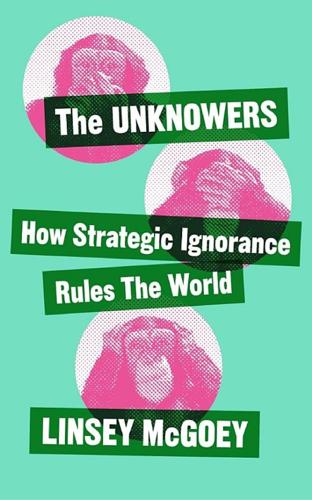
The Unknowers: How Strategic Ignorance Rules the World
by
Linsey McGoey
Published 14 Sep 2019
His bigger point is that we all do it, convincing ourselves that an action or a truth is morally righteous when it’s not. And his greatest insight was that the problem can be countered – that it’s possible for individuals to expand their own narrow understanding, deliberately enlarging our perspective to understand how our behaviour affects others. Even before path-breaking scholars like American sociologist W.E.B. Du Bois and John Rawls used the metaphor of the ‘veil’ to understand the limits and the potential of human understanding, Smith called for a similar mechanism, using the image of the ‘spectator’ to call on people to use the greatness of their imagination to see a problem in a multifaceted way. Wollstonecraft went a step further than him, suggesting the state should provide public education in a way that increased the opportunity for one’s narrow worldview to be enlarged.
…
‘The mistakes of the marginal productivity theory of income distribution’ (June 20). https://ssrn.com/abstract=3199738 or http://dx.doi.org/10.2139/ssrn.3199738. 41 The discipline of sociology is not exempt from problems surrounding wilful ignorance that are visible in the history of economic thought. Aldon Morris’ study of the historical dismissal of pioneering work by the black scholar W.E.B. Du Bois is a good example; as is Mary Jo Deegan’s influential study of the unacknowledged debt that Chicago School sociologists such as Parks and Burgess owe to the earlier scholar, Jane Addams. 6 Know-it-all epistocrats 1 J.S. Mill, Autobiography (New York: Signet Classics, 1964), 126. 2 J.S. Mill, The Subjection of Women, in On Liberty, Utilitarianism and Other Essays (Oxford: Oxford World Classics, 2015). 3 See D.
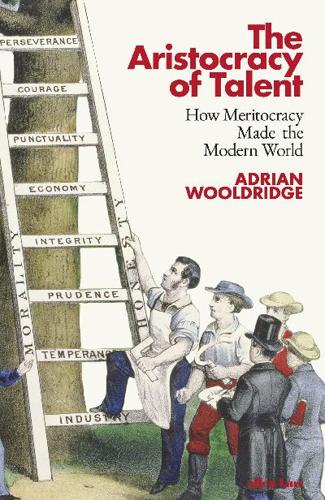
The Aristocracy of Talent: How Meritocracy Made the Modern World
by
Adrian Wooldridge
Published 2 Jun 2021
It was a translation of Thucydides.42 The result of all this intellectual effort was a revolution: the powers that be were forced to concede that it was not only inefficient but also immoral to deny opportunity to talent wherever it appeared. The same was true of other marginalized groups who used meritocratic standards to confound ancient prejudices. Great Jewish intellectuals such as Albert Einstein made a mockery of Nazi ideas of the master race. Great black intellectuals such as Frederick Douglass and W. E. B. Du Bois proved that blacks could hold their own in the corridors of intellect. Martin Luther King was such a morally compelling figure because he held out the hope of a future in which everyone would be judged by the content of their character rather than the colour of their skin. Marginalized groups can be at their most influential when they appeal to universal standards and collective hope – and shaming the ruling class can be a much more effective way of persuading it to hand over power than attacking it.
…
This exclusion inevitably had psychological as well as economic consequences: slavery and Jim Crow helped to destroy African-Americans’ sense of agency and, to some extent, self-worth. The self-help movement tried to restore that sense of agency both on an individual and a collective level. The central figure in this was W. E. B. Du Bois (1886–1963), one of the founding members of the NAACP and one of black America’s most prolific authors. The central idea was the notion of the ‘talented tenth’, an idea that was invented by northern white philanthropists who wanted to create a cadre of black teachers, but popularized by Du Bois.70 Du Bois believed that the only way for African-Americans to claim their rightful place in American life was through self-education (he himself was the first African-American to gain a Ph.D. from Harvard).
…
(New York, Knopf, 1996), Vol. 2, p. 243 55 Ibid. 56 Ibid., p. 256 57 Sven Beckert, Empire of Cotton: A New History of Global Capitalism (London, Allen Lane, 2014); Alan Greenspan and Adrian Wooldridge, Capitalism in America: A History (New York, Penguin Press, 2018), pp. 73–9 58 Address before the Wisconsin State Agricultural Society, Milwaukee, Wisconsin, 30 September 1859, http://www.abrahamlincolnonline.org/lincoln/speeches/fair.htm 59 Lepore, These Truths, p. 701 60 Pole, The Pursuit of Equality in American History, p. 254 61 Walter Isaacson and Evan Thomas, The Wise Men: Six Friends and the World They Made (New York, Simon and Schuster, 1986), p. 40 62 Pole, The Pursuit of Equality in American History, p. 264 63 Jerome Karabel, The Chosen: The Hidden History of Admission and Exclusion at Harvard, Yale and Princeton (New York, Houghton Mifflin, 2005), p. 13 64 Bellow, In Praise of Nepotism, p. 320 65 Ibid., p. 323 66 Francis Fukuyama, Political Order and Political Decay: From the French Revolution to the Present (London, Profile Books, 2015), p. 144 67 Kett, Merit, pp. 117–18 68 Isaacson and Thomas, The Wise Men, p. 87 69 Kett, Merit, p. 174 70 W. E. B. DuBois, ‘The Talented Tenth’, in Booker T. Washington et al., The Negro Problem: A Series of Articles by Representative American Negroes of Today (New York, James Potter Co., 1903) 71 W. E. B. Du Bois, ‘Strivings of the Negro People’, Atlantic, August, 1897, https://www.theatlantic.com/magazine/archive/1897/08/strivings-of-the-negro-people/305446/ 72 Fukuyama, Political Order and Political Decay, p. 156 73 Kett, Merit, p. 201 74 Ibid., p. 193 75 Fukuyama, Political Order and Political Decay, p. 152 76 Kett, Merit, p. 194; Will, The Conservative Sensibility, p. 41 77 Lepore, These Truths, p. 206 78 Kett, Merit, p. 196 79 Ibid. 80 Will, The Conservative Sensibility, p. 41 11.
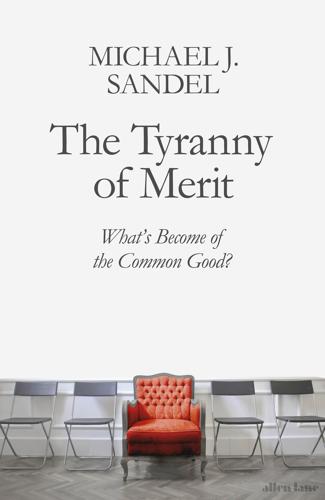
The Tyranny of Merit: What’s Become of the Common Good?
by
Michael J. Sandel
Published 9 Sep 2020
This condescension affects political campaigns, as in Hillary Clinton’s comment about “deplorables” and Barack Obama’s about people who “cling to guns or religion.” 23 Williams acknowledges that “economic resentment has fueled racial anxiety that, in some Trump supporters (and Trump himself), bleeds into open racism. But to write off white working-class anger as nothing more than racism is intellectual comfort food, and it is dangerous.” 24 Barbara Ehrenreich, a journalist who writes about work and class, makes a similar observation. She quotes W. E. B. Du Bois, writing in 1935: “It must be remembered that the white group of laborers, while they received a low wage, were compensated in part by a sort of public and psychological wage.” Unlike African Americans, white working-class citizens were “admitted freely with all classes of white people to public functions, public parks, and the best public schools.” 25 This “public and psychological wage” is what today goes by the name of “white privilege.”
…
Working Class,” Harvard Business Review , November 10, 2016, hbr.org/2016/11/what-so-many-people-dont-get-about-the-u-s-working-class . 25 . Barbara Ehrenreich, “Dead, White, and Blue,” TomDispatch.com , December 1, 2015, tomdispatch.com/post/176075/tomgram:_barbara_ehrenreich,_america_to_working_class_whites:_drop_dead!/ ; the W. E. B. Du Bois quote is from Black Reconstruction in America (1935). 26. Barbara Ehrenreich, “Dead, White, and Blue.” 27. Katherine J. Cramer, The Politics of Resentment: Rural Consciousness in Wisconsin and the Rise of Scott Walker (Chicago: The University of Chicago Press, 2016). 28. Katherine J. Cramer, “For Years, I’ve Been Watching Anti-Elite Fury Build in Wisconsin.

Decline of the English Murder
by
George Orwell
Published 24 Jul 2009
Joseph de Maistre The Executioner Thomas De Quincey Confessions of an English Opium Eater Arthur Schopenhauer The Horrors and Absurdities of Religion Abraham Lincoln The Gettysburg Address Karl Marx Revolution and War Fyodor Dostoyevsky The Grand Inquisitor William James On a Certain Blindness in Human Beings Robert Louis Stevenson An Apology for Idlers W. E. B. Du Bois Of the Dawn of Freedom Virginia Woolf Thoughts on Peace in an Air Raid George Orwell Decline of the English Murder John Berger Why Look at Animals? * This is quite incorrect. These stories have been written throughout the whole period by ‘Frank Richards’ and ‘Martin Clifford’, who are one and the same person!
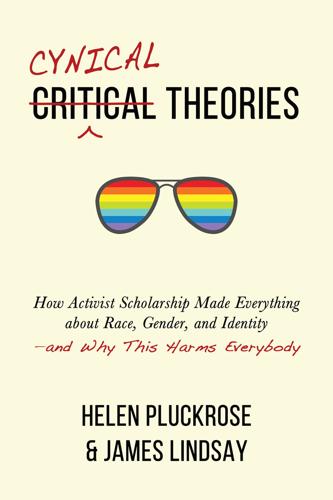
Cynical Theories: How Activist Scholarship Made Everything About Race, Gender, and Identity―and Why This Harms Everybody
by
Helen Pluckrose
and
James A. Lindsay
Published 14 Jul 2020
So thoroughly is this the case that although its ideas have been used outside the United States for some time, they are often highly flavored by U.S. racial history. Critical race Theory holds that race is a social construct that was created to maintain white privilege and white supremacy. This idea originated long before postmodernism with W. E. B. Du Bois, who argued that the idea of race was being used to assert biological explanations of differences that are social and cultural, in order to perpetuate the unjust treatment of racial minorities, especially African Americans. There are good reasons to accept this claim. Although some average differences in human populations—such as skin color, hair texture, eye shape, and relative susceptibility to certain diseases—are observably real, and an individual’s geographical heritage can be discovered via DNA tests, it is not clear why this has been regarded as so significant as to divide people into groups called “races.”
…
Gossett, Race: The History of an Idea in America (Oxford: Oxford University Press, 1997). 3.Sojourner Truth, “The Narrative of Sojourner Truth,” ed. Olive Gilbert, in A Celebration of Women Writers, www.digital.library.upenn.edu/women/truth/1850/1850.html. 4.Frederick Douglass, Narrative of the Life Frederick Douglass, (Lexington, KY: CreateSpace, 2013). 5.W. E. B. Du Bois, The Souls of Black Folk: The Unabridged Classic (New York: Clydesdale, 2019). 6.Winthrop D. Jordan, White over Black American Attitudes toward the Negro, 1550–1812 (Chapel Hill, NC: University of North Carolina Press, 2012). 7.Richard Delgado and Jean Stefancic, Critical Race Theory: An Introduction (New York: New York University Press, 2017), 3. 8.Ibid., Introduction, 26. 9.Derrick A.
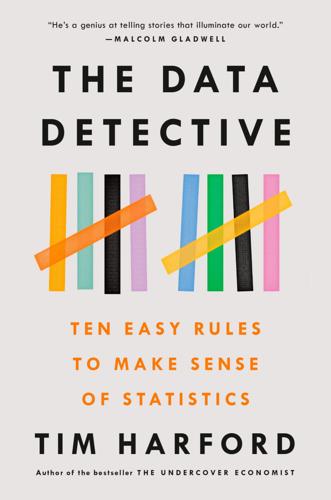
The Data Detective: Ten Easy Rules to Make Sense of Statistics
by
Tim Harford
Published 2 Feb 2021
Other data could be collected but they would be offered only on an expensive subscription basis—private providers can charge tens of thousands of dollars a year for people who want data at their fingertips. Of course some data might be gathered by private firms and given away without charge, but such statistics are often just ads in the guise of information. Publicly available statistics can be used to understand and illuminate pressing social issues. To pick just one example, W. E. B. Du Bois—historian, sociologist, and civil rights campaigner—led a remarkable data visualization effort at the end of the nineteenth century as part of the Paris Exposition of 1900.44 His team produced beautiful, modernist graphs showing the situation of African Americans in the United States at the time, with data on demographics, wealth, inequality, and more besides.
…
Smith, “The Rayner Review of Government Statistical Services,” Journal of the Royal Statistical Society, Series A (General) 145, no. 2 (1982), 195–207, DOI: 10.2307/2981534; and John Kay, “A Better Way to Restore Faith in Official Statistics,” blog post, July 25, 2006, https://www.johnkay.com/2006/07/25/a-better-way-to-restore-faith-in-official-statistics/. 43. Ellen Hughes-Cromwick and Julia Coronado, “The Value of U.S. Government Data to U.S. Business Decisions.” 44. Jackie Mansky, “W. E. B. Du Bois’ Visionary Infographics Come Together for the First Time in Full Color,” Smithsonian, November 15, 2018, https://www.smithsonianmag.com/history/first-time-together-and-color-book-displays-web-du-bois-visionary-infographics-180970826/; and Mona Chalabi, “WEB Du Bois: Retracing His Attempt to Challenge Racism with Data,” Guardian, February 14, 2017, https://www.theguardian.com/world/2017/feb/14/web-du-bois-racism-data-paris-african-americans-jobs. 45.

Aftershocks: Pandemic Politics and the End of the Old International Order
by
Colin Kahl
and
Thomas Wright
Published 23 Aug 2021
And They Fought Back,” CNN, July 27, 2019, https://www.cnn.com/2019/07/27/us/red-summer-1919-racial-violence/index.html. 24. McWhirter, Red Summer, 150–51. 25. W. E. B. Du Bois, “Returning Soldiers,” The Crisis, May 1919, 13, https://glc.yale.edu/returning-soldiers. 26. Quoted in McWhirter, Red Summer, 106. 27. Bruce Bartlett, “Woodrow Wilson Was Even More Racist Than You Thought,” New Republic, July 6, 2020, https://newrepublic.com/article/158356/woodrow-wilson-racism-princeton-university. 28. Link, ed., The Papers of Woodrow Wilson, 63:196. 29. McWhirter, Red Summer, 56. 30. W. E. B. Du Bois, Darkwater: Voices from the Veil (New York: Harcourt, Brace, and Howe, 1920), 36. 31.
…
These efforts produced struggles for justice in courtrooms and legislatures—but also self-defense measures in the streets to fight back against white mobs.24 Black veterans, hundreds of thousands of whom were returning from Europe, played a key role. In a May 1919 essay, “Returning Soldiers,” the prominent Black scholar and NAACP co-founder W. E. B. Du Bois argued that these veterans had an opportunity to serve as champions of a broader civil rights movement: “Make way for Democracy! We saved it in France, and by the Great Jehovah, we will save it in the United States of America, or know the reason why.”25 This charge resonated with many returning from the war.
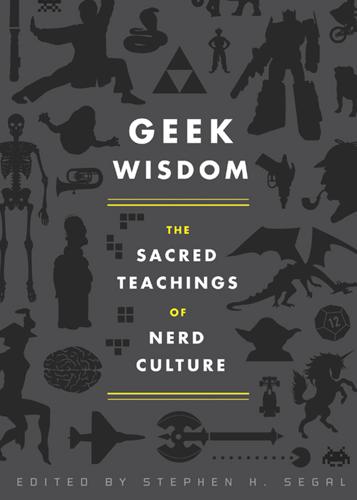
Geek Wisdom
by
Stephen H. Segal
Published 2 Aug 2011
Inevitably, they sometimes don’t know what the heck we’re talking about, so most of us have learned how to break down our thought processes for their sakes—to flawlessly translate even the geekiest of concepts into introductory language. This is a variation on the “double consciousness” concept first described by W. E. B. Du Bois (who wrote science fiction as well as activist commentary) in reference to African Americans’ need to move between two worlds. In many ways, it’s a requirement of any minority population that wants to be accepted by the majority—or at least to be left in peace. But sometimes we get tired of simul-translating our own conversations.

Dangerous Ideas: A Brief History of Censorship in the West, From the Ancients to Fake News
by
Eric Berkowitz
Published 3 May 2021
Calhoun, offended by aspersions in abolitionist literature against slave owners, successfully demanded a ban on antislavery petitions in Congress because they were, among other things, “injurious” to his and other slave owners’ feelings. Early in the twentieth century, African American and Jewish groups had some success in pushing for the censorship of films and other materials depicting them with degrading stereotypes. W. E. B. du Bois and the National Association for the Advancement of Colored People led a campaign to suppress the 1915 hyper-racist blockbuster The Birth of a Nation, allowing that it was “dangerous to limit expression” but stressing that “without some limitations civilizations could not endure.” 111 These and other efforts resulted in a series of film-censorship laws and general prohibitions against so-called group libel.
…
Enstad and Ravndal, “Hvorfor er det så mye mer høyreekstrem vold i Sverige?”; Katharine Gelber and Luke McNamara, “The Effects of Civil Hate Speech Laws: Lessons from Australia,” July 29, 2015, Law and Society Review 49, no. 3 (September 2015): 631–64. 111. Gerald Horne and Charisse Burden-Stelly, W. E. B. Du Bois: A Life in American History (Santa Barbara, CA: ABC-CLIO, 2019), 79n340. 112. Beauharnais v. Illinois, 343 U.S. 250 (1952). 113. Meghan Keneally, “Skokie: The Legacy of the Would-Be Nazi March in a Town of Holocaust Survivors,” ABC News.com, June 22, 2018, https://abcnews.go.com/US/skokie-legacy-nazi-march-town-holocaust-survivors/story?
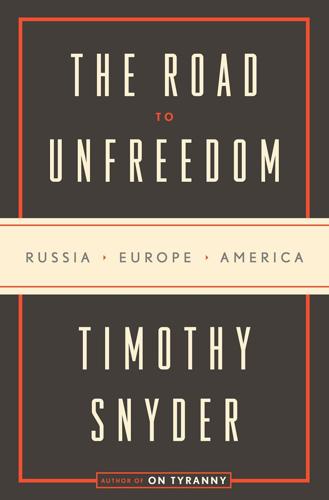
The Road to Unfreedom: Russia, Europe, America
by
Timothy Snyder
Published 2 Apr 2018
Contemporary observers had no difficulty seeing the connection. Will Rogers, the great American entertainer and social commentator of his time, saw Adolf Hitler in 1933 as a familiar figure: “Papers all state that Hitler is trying to copy Mussolini. Looks to me it’s the KKK he’s copying.” The great American social thinker and historian W. E. B. Du Bois could see how the temptations of fascism worked together with American myths of the past. He rightly feared that American whites would prefer a story about enmity with blacks to a reforming state that would improve prospects for all Americans. Whites distracted by racism could become, as he wrote in 1935, “the instrument by which democracy in the nation was done to death, race provincialism deified, and the world delivered to plutocracy,” what we call oligarchy.
…
Getting one’s own history wrong is part of the politics of eternity. On symbols: Sara Bloomfield, “White supremacists are openly using Nazi symbols,” WP, Aug. 22, 2017. To proclaim “America First” Rosie Gray, “Trump Defends White-Nationalist Protestors: ‘Some Very Fine People on Both Sides,’ ” WP, Aug. 15, 2017. W. E. B. Du Bois, Black Reconstruction: An Essay Toward a History of the Part Which Black Folk Played in the Attempt to Reconstruct Democracy in America, 1860–1880 (New York: Harcourt, Brace and Company, 1935), at 241; see also 285. Will Rogers, The Autobiography of Will Rogers, ed. Donald Day (New York: Lancet, 1963), 281.

Border and Rule: Global Migration, Capitalism, and the Rise of Racist Nationalism
by
Harsha Walia
Published 9 Feb 2021
During the 1915–34 occupation by the US, fifteen thousand Haitians were killed, Haiti’s legislature was dissolved, and a new constitution friendlier to US investment interests was instituted. Just two corporations compelled Haiti to concede 1.5 million acres of land, and dozens of sugar and banana plantations extracted land and labor.33 As W. E. B. Du Bois famously asserted, “The United States is at war with Haiti.” From the 1950s onward, the US staged numerous coups and installed regimes sympathetic to preserving its interests in Haiti. The despotic regimes of François Duvalier and his son, Jean-Claude Duvalier, killed tens of thousands of Haitians, imprisoned even more in the dreaded Fort Dimanche torture camp, and fueled a massive exodus of refugees, yet were propped up by the US for nearly three decades as counterpoints to communist Cuba.
…
Their perceived loss of status does not necessarily correlate with a loss of economic security but, rather, with a loss of social privilege, an anxiety of so-called racial inferiors being treated as equals, and their revanchist belief that globalization results in the waning power of white males. Listen Chen and Ivan Drury write, “Working class white men who have been made homeless may, rather than rage against the economic and political system that has tossed them out, instead pine for their lost race and gender power.”10 David Roediger, drawing on W. E. B. Du Bois’s formulation of a public and psychological wage, argues that working-class racism cannot be explained only through the lens of economic disadvantage but must also be understood as racial conservatism inherent to a class identity forged through whiteness as anti-Blackness.11 “White working class” works alongside constructs such as “white power,” coined by white nationalist George Lincoln Rockwell to oppose Black Power movements.12 Thus, the identity formation of the “white working class,” in explicit antagonism to a multiracial class identity, is a modality of race making at the expense of all working people.
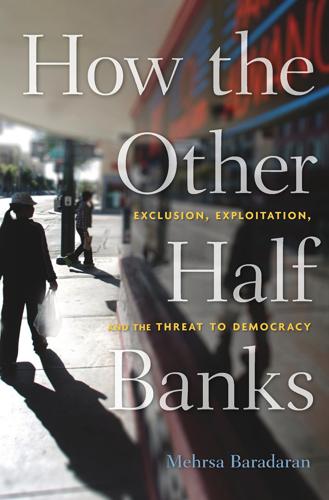
How the Other Half Banks: Exclusion, Exploitation, and the Threat to Democracy
by
Mehrsa Baradaran
Published 5 Oct 2015
And on June 20, 1874, Congress amended the charter to authorize the trustees to end operations. The bank’s doors were shut for good on June 29, 1874, leaving 61,131 depositors without access to nearly $3 million in deposits.111 Most depositors lost all of their money and some were able to recover only a portion of their hard-earned savings. W. E. B. Du Bois said of the bank failure that “not even ten additional years of slavery could have done so much to throttle the thrift of the freedmen as the mismanagement and bankruptcy of the series of savings banks chartered by the Nation for their special aid.”112 If the government and the philanthropists purported to teach the freed slaves thrift and responsibility, the lesson they actually learned was to distrust the government and philanthropists.
…
Rep. 44–502, VII. 107. Report to Accompany Bills S.711 and S.1581, S. Rep. No. 46–440, III. 108. Douglass, Life and Times, 355–356. 109. Ibid., 354. 110. Ibid., 355–356. 111. U.S. House of Representatives, Select Committee on the Freedman’s Bank, Freedman’s Bank, H.R. Rep. No. 44–502 (1876). 112. W. E. B. Du Bois, The Souls of Black Folk (Chicago: A. C. McClurg, 1903), 36. 113. David L. Mason, From Buildings and Loans to Bail-Outs (Cambridge: Cambridge University Press, 2004), 16. 114. Hamilton, Savings and Savings Institutions, 132–133, 143–144. 115. Joseph Walker and S. K. Cox, Mutual Benefit Building and Loan Associations: Their History, Principles, and Plan of Operation (Charleston: Walker and James, 1852), 9. 116.
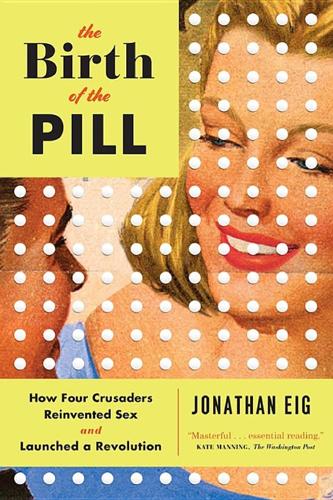
The Birth of the Pill: How Four Crusaders Reinvented Sex and Launched a Revolution
by
Jonathan Eig
Published 12 Oct 2014
She was a socialist, which irked even some of her strongest supporters, and she was often reckless in pursuit of her goals. But she was not necessarily a racist. In 1930, she opened a family planning clinic in Harlem. The clinic was staffed by a black doctor and had the support of community leaders including W. E .B. Du Bois. Du Bois would later serve on the advisory board for Sanger’s so-called Negro Project, which was designed to bring birth control and social services to African Americans in the rural South. In many ways, Sanger was consistent in her core beliefs. She held that women had the right to self-determination, that every child should be loved and cared for, and that women were entitled to enjoy sex as much as men.
…
By 1925, more than one thousand doctors from around the world sought admission to Sanger’s annual birth-control conference, this one held at the Hotel McAlpin in New York City. British economist John Maynard Keynes attended, as did writer Lytton Strachey and Socialist Party leader Norman Thomas. Messages of support arrived from W. E .B. Du Bois, Upton Sinclair, and Bertrand Russell. The most influential eugenicists in the country were on hand, too. The birth-control movement was gaining visibility in the United States and spreading quickly around the world. It helped that sex in America was more widely discussed than ever. The single woman of the Jazz Age smoked, drank, danced, flirted, and (to use the term that was beginning to come into vogue) screwed.

The Bookshop: A History of the American Bookstore
by
Evan Friss
Published 5 Aug 2024
The Rand School was the educational nucleus of the movement, offering courses on the history and theory of Socialism, composition, and public speaking, as well as a Sunday school for kids. Leading thinkers, writers, activists, and authors, Socialists or otherwise, taught classes and gave evening lectures, including W. E. B. Du Bois, William Butler Yeats, Jack London, Charlotte Perkins Gilman, Carl Sandburg, Bertrand Russell, Elizabeth Gurley Flynn, Upton Sinclair, Clarence Darrow, Helen Keller, John Dewey, H. G. Wells, and Diego Rivera. By 1918, more than five thousand students, mostly workers in their twenties, many of them Jewish immigrants, attended class in the People’s House, a handsome building of chunky brownstone and bricks with its name emblazoned in oversize letters on the fifth story.
…
The nation’s capital, with its majority Black population, had been home to a Black bookseller or two, but there had never been a major Black bookstore. * * * — The customers, almost all of whom had never been in a store like this, didn’t know where to begin. Drum & Spear’s stock was certainly deep: Eldridge Cleaver, Frantz Fanon, Frederick Douglass, Alex Haley, Langston Hughes, W. E. B. Du Bois, Paul Robeson, Richard Wright, Karl Marx, and James Baldwin. Works by academic historians, including Eugene Genovese, James McPherson, and Howard Zinn, were on sale, too. None of those scholars had an asterisk by their name in the thirty-seven-page catalog. Asterisks were reserved for Black authors.
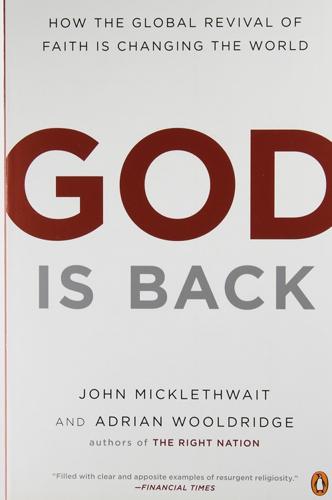
God Is Back: How the Global Revival of Faith Is Changing the World
by
John Micklethwait
and
Adrian Wooldridge
Published 31 Mar 2009
The children of prisoners are six times more likely than people in the general population to end up in prison themselves. A disproportionate number of these children are black—reflecting the huge role churches play in the life of black Philadelphia, a population that has more problems than the population in general, and is more inclined to turn to the church for help. In The Philadelphia Negro (1899), W. E. B Du Bois, a pioneering black scholar who worked at Philadelphia’s Wharton School, captured the centrality of the church to black life:As a social group the Negro church may be said to have antedated the Negro family on American soil; as such it has preserved, on the one hand, many functions of tribal organization, and on the other hand, many of the family functions.
…
Michael Lindsay, Faith in the Halls of Power (New York: Oxford University Press, 2007), 187. 20 Ibid., 171. 21 Ibid., 177. 22 Ibid., 183. 23 Phred Dvorak, “Some Bosses Mix Managing with Their Faith,” Wall Street Journal, October 9, 2006. 24 Russell Sholto, “Faith at Work,” New York Times Magazine, October 31, 2004 . 25 Rick Williams, “Serving the Master,” Christian Business Daily, April 29, 2005. 26 Patti Waldmeir, “US Companies Fall Prey to Religious Lawsuits,” Financial Times, December 6, 2005. 27 Lindsay, Faith in the Halls of Power, 176. 28 Ibid., 180. 29 Neela Bannerjee, “At Bosses’ Invitation, Chaplains Come into Workplace and onto Payroll,” New York Times, December 4 , 2006. 30 Russell Shorto, “Faith at Work,” New York Times Magazine, October 31, 2004 . 31 Ram Cnaan, The Other Philadelphia Story: How Local Congregations Support Quality of Life in Urban America (Philadelphia: University of Pennsylvania Press, 2006), xvi. 32 Ibid., 25 . 33 Ibid., 68. 34 Ibid., 39. 35 Ibid., 82. 36 Ibid., 72. 37 Ibid., 71. 38 Ibid., 116. 39 Ibid., 232. 40 Ibid., 236. 41 W. E. B. Du Bois, The Philadelphia Negro: A Social Study (Philadelphia: University of Pennsylvania Press, 1995 edition), 201. 42 Ram Cnaan, The Other Philadelphia Story, 133 . 43 Ibid., 139, 116. 44 Ibid., 157. 45 Ibid., 160. 46 Ibid., 102. CHAPTER SIX: THE GOD BUSINESS 1 William Lobdell, “Pastor’s Empire Built on Acts of Faith and Cash,” Los Angeles Times, September 19, 2004. 2 Christine Wicker, The Fall of the Evangelical Nation (New York: HarperOne), 103. 3 Pinsky, A Jew Among the Evangelicals, 123 . 4 Julie Bloom, “Sustained by Faith, Film Reaches Top 5 at Box Office,” Herald Tribune, October 6, 2008. 5 Ibid. 6 Pinsky, A Jew Among the Evangelicals, 114. 7 Lindsay, Faith in the Halls of Power, 132 (see chap. 1, n. 60). 8 Kathy Bruner, “Thinking Outside the Trivial TV Box,” in Quentin Schultze and Robert Woods, eds., Understanding Evangelical Media: The Changing Face of Christian Communication (Downers Grove, IN: IVP Academic), 55. 9 Ralph Blumenthal, “Joel Osteen’s Credo: Eliminate the Negative, Accentuate Prosperity,” New York Times, March 30, 2006. 10 John Leland, “A Church That Packs Them In, 16,000 at a Time,” New York Times, July 18, 2005 . 11 William Symonds, “Earthly Empires,” BusinessWeek, May 23 , 2005 . 12 Inés Peschiera, “Keeping an Eye on the Holy Rollers,” Consulting, August 1, 2006. 13 R.

The Speech: The Story Behind Dr. Martin Luther King Jr. S Dream
by
Gary Younge
Published 11 Aug 2013
We are not a pressure group, we are not an organization or a group of organizations, we are not a mob. We are the advance guard of a massive moral revolution for jobs and freedom.” On the morning of the march, news had arrived from Africa that one of the country’s great Black intellectuals and activists, W. E. B. Du Bois, had died. Du Bois had been living in Ghana, where he had vowed to play his part in building a new continent. His passing was announced by Wilkins from the podium. “If you want to read something that applies to 1963, go back and get a volume of The Souls of Black Folk by Du Bois, published in 1903,” he said.
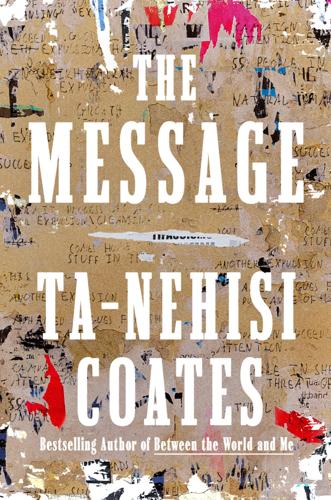
The Message
by
Ta-Nehisi Coates
Published 2 Oct 2024
She spoke about the impossibility of finding work that allowed her to write as she wished, and I could tell by the way she spoke that this frustrated dream was not just hers but one she held for her people, for she too was a steward, and she too was a bearer, and she too had ancestors. We know what this is, you and I. Writing is a powerful tool of politics. Harriet Jacobs exposed the violence and rape at the root of chattel slavery. Ida B. Wells’s reportage dispelled the grotesque myths of monstrous Black masculinity that undergirded lynching. W.E.B. Du Bois debunked the Confederate hagiography historians employed to justify driving Black people from the polls. This has happened despite a concerted effort to deny Black writers access to leading journals and publishers, to assault their schools and libraries, to outlaw reading and writing itself, and thus deny their access to this tool which is not just powerful but nonviolent.

Capitalism and Its Critics: A History: From the Industrial Revolution to AI
by
John Cassidy
Published 12 May 2025
He placed Britain’s industrialization in the context of its role in an international economic system characterized by colonialism and slavery. Williams wasn’t the only Black scholar who was reassessing slavery and its aftermath. In the decade from 1935 to 1945, three remarkable books appeared: Black Reconstruction in America, by W. E. B. Du Bois, the African American sociologist, historian, and civil rights activist; The Black Jacobins, a history of the Haitian Revolution, by C. L. R. James, Williams’s former high school teacher; and Capitalism and Slavery. Each of these books presented a distinctive thesis, but they all emphasized the economic importance of slave labor and challenged existing interpretations.
…
Subsequently, he taught at the University of Dar es Salaam in Tanzania and at the University of the West Indies in Jamaica. In How Europe Underdeveloped Africa, which he wrote while he was in Dar es Salaam, he said that much of the economic literature on development and underdevelopment “seeks to justify capitalism.” On a more positive note, he referenced the works of James, Eric Williams, W. E. B. Du Bois, Frank, and Furtado. He also emphasized that colonial activities like mining and cash-crop farming did little to develop the rest of the economy in African countries, and in many cases, the arrival of the colonists led to a decline of native industries, such as handicrafts and small-scale farming.
…
Karl Marx, Capital: A Critique of Political Economy, Volume I (London: Penguin Classics, 1990), 873–76. 9. C. L. R. James, The Black Jacobins: Toussaint L’Ouverture and the San Domingo Revolution (New York: Vintage Books, 1989), ix. 10. Cedric Robinson, Black Marxism (Chapel Hill: University of North Carolina Press, 2000), 316. 11. W. E. B. Du Bois, Black Reconstruction (New York: Harcourt Brace, 1935), 39. 12. Du Bois, Black Reconstruction, 670. 13. Du Bois, Black Reconstruction, 700. 14. Du Bois, Black Reconstruction, 700. 15. Du Bois, Black Reconstruction, 701. 16. Williams, Capitalism and Slavery, ix. 17.
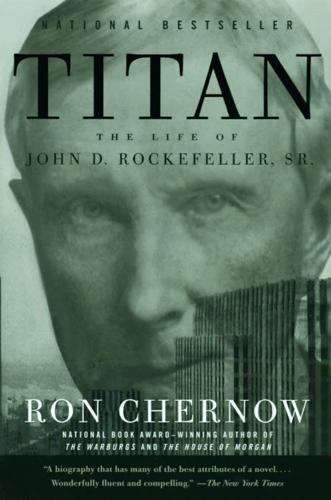
Titan: The Life of John D. Rockefeller, Sr.
by
Ron Chernow
Published 1 Jan 1997
At the same time, it evinced much of the practical, enterprising spirit espoused by Booker T. Washington, the principal of Tuskegee Institute in Alabama, who stressed vocational training for blacks. Before long, this approach to black education would be anathematized as futile and condescending by W.E.B. Du Bois and other critics who thought blacks capable of the same higher education as whites and felt they were doomed to mediocrity by vocational training. But whatever its early imperfections, Spelman College ultimately evolved into one of the most highly regarded institutions for black women in America.
…
Submitting to racism, the foundation limited its support to a “very few” counties that could yield “the largest permanent results,” in Buttrick’s words.17 Only in 1914 did the organization hire rural school agents for both races in the South, and even then it tended to hire white agents for black schools and continued to encourage schools to teach blacks useful trades and ignore their minds. In the end, it came in for biting criticism from blacks such as W.E.B. Du Bois who did not want to see the school system slot blacks into menial jobs. Du Bois later excoriated the GEB in his autobiography for supporting the idea “that the races in the schools should be separated socially; that colored schools should be chiefly industrial; and that every effort should be made to conciliate southern white opinion.”18 While the GEB achieved remarkable things in upgrading southern education, it failed to deliver major results where it had originally wanted them most: in black education.
…
Gates, Chapters in My Life, p. 180. Fosdick, John D. Rockefeller, Jr., p. 116. RAC–FTG, B2 F33, letter from F. T. Gates, January 26, 1911. The St. Louis Post-Dispatch, July 8, 1936. CHAPTER 24: THE MILLIONAIRES’ SPECIAL Link, The Paradox of Southern Progressivism, p. 129. The World, April 28, 1901. Lewis, W.E.B. Du Bois, p. 271. Read, The Story of Spelman College, p. 139. AN, B132, letter from John D. Rockefeller, Jr., to Robert C. Ogden, April 25, 1901. Fosdick, John D. Rockefeller, Jr., p. 117. Link, The Paradox of Southern Progressivism, p. 27. Gates, Chapters in My Life, p. 134. RAC–FTG, B4 F80, letter from F.
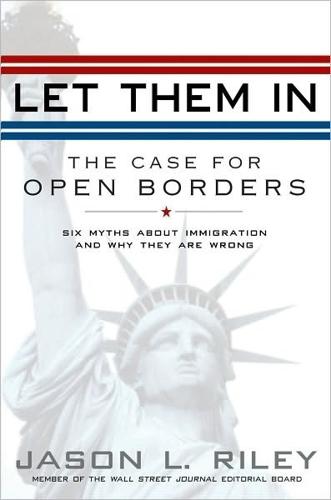
Let Them In: The Case for Open Borders
by
Jason L. Riley
Published 14 May 2008
Two years ago, when a prominent black minister in Chicago told The New York Times that “immigration will destroy the economic base of the African-American community, ” he joined a long queue of restrictionist black leaders and intelligentsia. As Congress debated the Chinese Exclusion Act of 1882, a number of black newspapers called for its passage, including the Colored American in Washington, D.C., which wrote, “There is no room for these disease-breeding, miserly, clannish, and heathen Chinese.” Later, W. E. B. Du Bois and Booker T. Washington would complain that immigrant labor was pushing blacks out of manufacturing jobs. The black separatist Marcus Garvey—an immigrant from Jamaica, by the way—and sworn enemy of more mainstream civil rights leaders like Du Bois and A. Philip Randolph, nevertheless found common ground with them when it came to railing against the Eastern Europeans who were pouring into Northern cities in the first part of the twentieth century.
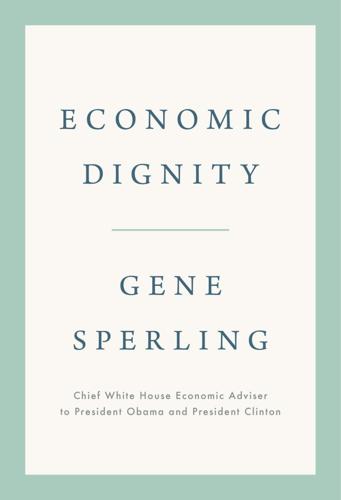
Economic Dignity
by
Gene Sperling
Published 14 Sep 2020
Cherlin’s research concludes that Trump simply seized on the economic unhappiness of such white voters to inflame and “encourage their tendency to racialize that desperation.”6 There is a long, painful tradition in the United States of elites and politicians racializing economic disappointment and desperation as a divisive tactic to prevent cross-racial coalitions from bonding together to support inclusive economic policies. In writing about the period after the Civil War, for instance, W. E. B. Du Bois referred to this perverse offering of divisive dignity as a substitute for inclusive economic policies as the “psychological wage” in which “the white group of laborers, while they received a low wage, were compensated in part by a sort of public and psychological wage. They were given public deference and titles of courtesy because they were white.”
…
Where the Jobs Weren’t,” New York Times, December 13, 2016, https://www.nytimes.com/2016/12/13/business/economy/jobs-economy-voters.html. 6. Andrew J. Cherlin, “In the Shadow of Sparrows Point: Racialized Labor in the White and Black Working Classes,” Russell Sage Foundation, October 2019, 24, https://www.russellsage.org/sites/default/files/In%20the%20Shadow%20of%20Sparrows%20Point.pdf. 7. W. E. B. Du Bois, Black Reconstruction in America (New York: Oxford University Press, 2007). First published 1935 by Harcourt, Brace and Howe (New York). 8. Quoted in Ta-Nehisi Coates, “The First White President,” Atlantic, October 2017, https://www.theatlantic.com/magazine/archive/2017/10/the-first-white-president-ta-nehisi-coates/537909/. 9.
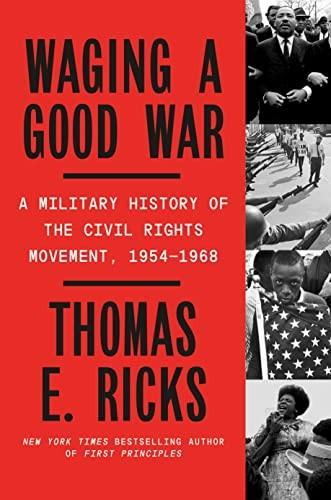
Waging a Good War: A Military History of the Civil Rights Movement, 1954-1968
by
Thomas E. Ricks
Published 3 Oct 2022
In some parts of Mississippi, Black men who registered to vote, such as the Reverend George Lee and Lamar Smith, were murdered in retaliation. By this point, the pieces of a civil rights movement were in place. They had been developed by scores of pioneers in earlier decades. Among those pioneers were Ida B. Wells, who deftly used newspapers to publicize lynchings; W. E. B. Du Bois, who organized intellectuals in the Black middle class; A. Philip Randolph, who similarly galvanized part of the Black working class; Lillie Carroll Jackson, who explored the use of focused boycotts to protest stores that did not employ Black clerks; and Homer Plessy, who in 1896 went to the Supreme Court to test separate-but-equal segregation laws.
…
The southern Black church was effectively a citadel for the Movement. It was not just a reliable refuge in a hostile world but also what the sociologist E. Franklin Frazier called “a nation within a nation.” But its presence on the front lines represented a shift. Historically, the Black church had been seen by activists such as the great historian W. E. B. Du Bois as an impediment. As the historian Richard Kluger notes, Du Bois thought Black ministers were “consumed by trivialities and their own personal influence among their congregants; their sermons were out of date and provided no leadership.” Now they were stepping up and leading the people. In military terms, the churches had become the command posts of the Movement, secure locations where plans could be made, training sessions held, and orders issued.
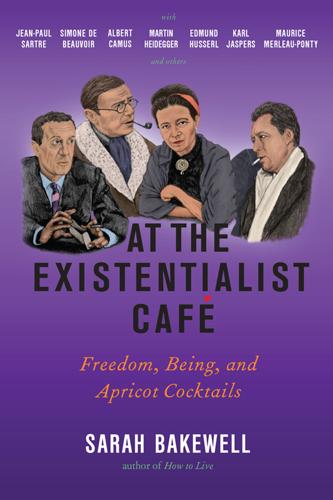
At the Existentialist Café: Freedom, Being, and Apricot Cocktails With Jean-Paul Sartre, Simone De Beauvoir, Albert Camus, Martin Heidegger, Maurice Merleau-Ponty and Others
by
Sarah Bakewell
Published 1 Mar 2016
But Heidegger’s refusal was all about retreat and resignation from worldly complexities. Sartre’s was a response to the demands of unjustly treated human beings — and it tied him more closely than ever to the lives of others. Long before Sartre, others had written about the role of the ‘gaze’ in racism. In 1903, W. E. B. Du Bois had reflected in The Souls of Black Folk on black people’s ‘double-consciousness, this sense of always looking at one’s self through the eyes of others, of measuring one’s soul by the tape of a world that looks on in amused contempt and pity’. Later black American writers also explored the Hegelian battle for control of perspectives.
…
Beauvoir wrote about the torture victim Djamila Boupacha, first in Le Monde (3 June 1960) and then in a book co-written with Boupacha’s lawyer Gisèle Halimi: Djamila Boupacha (1962), tr. by Peter Green as Djamila Boupacha: the story of a torture of a young Algerian girl (London: André Deutsch & Weidenfeld & Nicolson, 1962). 19 Death threats: FOC, 381; 626–8; David Detmer, Sartre Explained: from bad faith to authenticity (Chicago: Open Court, 2008), 5 (‘Shoot Sartre’), 11 (de Gaulle). 20 Explosion: Cohen-Solal, Sartre, 451. 21 Phone calls: Lanzmann, The Patagonian Hare, 4. 22 Rejecting Nobel Prize: ASAD, 52–4, Cohen-Solal, Sartre, 447–8. 23 ‘Double-consciousness’: W. E. B. Du Bois, The Souls of Black Folk (New York: Penguin, 1996), 5. See Ernest Allen Jr., ‘On the Reading of Riddles: rethinking Du Boisian “Double Consciousness” ’, in Gordon (ed.), Existence in Black, 49–68, this 51. 24 Baldwin in Swiss hamlet: Baldwin, ‘Stranger in the Village’, in The Price of the Ticket, 79–90, this 81–3.
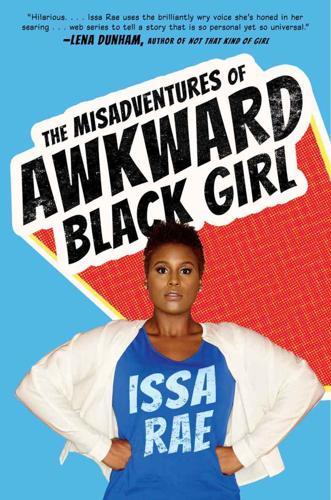
The Misadventures of Awkward Black Girl
by
Issa Rae
Published 10 Feb 2015
So as not to place the importance or value of one black over the other (that’s what real life is for!), I have (more or less) organized them alphabetically. If you’re not an Awkward Black, you may still find the information useful when attempting to engage other blacks. * * * The 10% Black: W. E. B. Du Bois only added fuel to the fire for these blacks. The self-proclaimed talented tenth, these blacks feel as though the intellectual integrity of all blacks rests on their shoulders. Many are outwardly bitter that they have to carry this responsibility, but secretly appreciative that they have been called out as the Chosen Few.
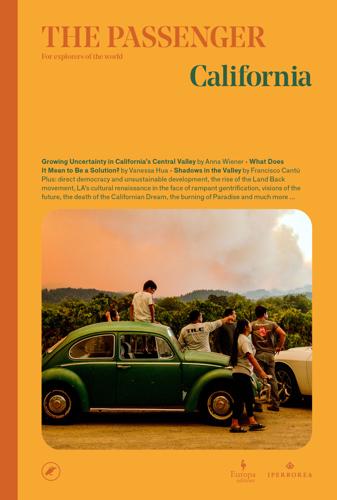
The Passenger
by
AA.VV.
Published 23 May 2022
The subtext of such articles—“If Asian Americans are ‘making it’ in this country, why can’t Blacks?”—is a false equivalency, claiming that the discrimination Asian Americans faced was identical to that of slavery, segregation, and police brutality. In The Souls of Black Folk—a pioneering work of sociology and African-American literature first published in 1903—W.E.B. Du Bois famously asks, “How does it feel to be a problem?” That is to say, African Americans have their bodies, their children, and their people maligned—their very existence a difficulty that needs solving. For Asian Americans, we might reverse the question and ask, “How does it feel to be a solution?”
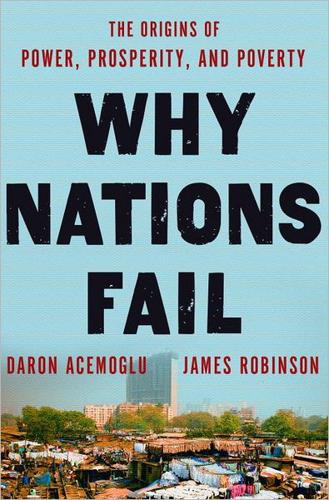
Why Nations Fail: The Origins of Power, Prosperity, and Poverty
by
Daron Acemoglu
and
James Robinson
Published 20 Mar 2012
Though the economic institution of slavery was abolished, the evidence shows a clear line of persistence in the economic system of the South based on plantation-type agriculture with cheap labor. This economic system was maintained through a variety of channels, including both control of local politics and exercise of violence. As a consequence, in the words of the African American scholar W.E.B. Du Bois, the South became “simply an armed camp for intimidating black folk.” In 1865 the state legislature of Alabama passed the Black Code, an important landmark toward the repression of black labor. Similar to Decree 177 in Guatemala, the Black Code of Alabama consisted of a vagrancy law and a law against the “enticement” of laborers.
…
Congressman George Washington Julian is quoted in Wiener (1978), p. 6. The same book contains the analysis of the persistence of the southern landed elite after the Civil War. Naidu (2009) examines the impact of the introduction of poll taxes and literacy tests in the 1890s in southern states. The quotation from W.E.B. Du Bois is in his book Du Bois (1903), p. 88. Clause 256 of the Alabama constitution can be found at www.legislature.state.al.us/CodeOfAlabama/Constitution/ 1901/CA-245806.htm. Alston and Ferrie (1999) discuss how southern politicians blocked federal legislation they thought would disrupt the South’s economy.

Ours to Hack and to Own: The Rise of Platform Cooperativism, a New Vision for the Future of Work and a Fairer Internet
by
Trebor Scholz
and
Nathan Schneider
Published 14 Aug 2017
There is also the rich history of black cooperative economic development, which is revealed by Jessica Gordon Nembhard in her excellent book Collective Courage, with examples ranging from the Colored Farmers’ National Alliance and Cooperative Union, which had over a million members in the late 1800s, to the many efforts compiled in W. E. B. Du Bois’s 1907 Economic Co-operation Among Negro Americans. This tradition lives on through myriad endeavors, including Mississippi’s Cooperation Jackson, the Southern Reparations Loan Fund, and the Oakland & the World Enterprises, a project I’ll return to. History abounds with rousing examples of cooperative projects, and almost as many failures.
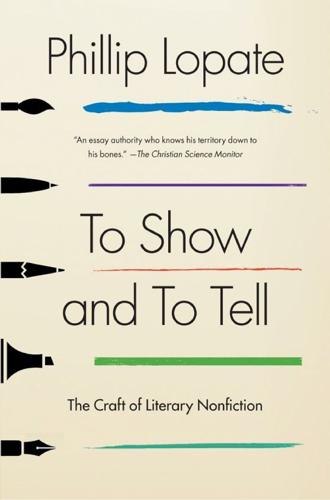
To Show and to Tell: The Craft of Literary Nonfiction
by
Phillip Lopate
Published 12 Feb 2013
Some Classic Autobiographies and Memoirs (Pre–Twentieth Century) Saint Augustine: Confessions Benvenuto Cellini: Autobiography Jacques Casanova: Memoirs Duc de Saint-Simon: Memoirs Margaret Cavendish, Duchess of Newcastle: Memoirs, Life of the Duke Jean-Jacques Rousseau: Confessions Benjamin Franklin: Autobiography Johann Wolfgang von Goethe: Autobiography (“Poetry and Truth”) François-René Chateaubriand: Mémoires d’outre tombe Stendhal: Memoirs of an Egotist and The Life of Henri Brulard John Stuart Mill: Autobiography Frederick Douglass: Autobiography Henry David Thoreau: Walden Harriet Jacobs: Incidents in the Life of a Slave-Girl Thomas De Quincey: Confessions of an English Opium-Eater John Ruskin: Praeterita Alexander Herzen: My Past and Thoughts Edmund Gosse: Father and Son Daniel Paul Schreber: Memoirs of My Nervous Illness Ulysses S. Grant: Memoirs Some Early Twentieth-century Memoirs Henry Adams: The Education of Henry Adams Virginia Woolf: “A Sketch of the Past” (in Moments of Being) Richard Wright: Black Boy and American Hunger André Gide: If It Die and Madeleine W. E. B. Du Bois: The Autobiography Frank Harris: My Life and Loves H. G. Wells: Experiment in Autobiography T. E. Lawrence: The Seven Pillars of Wisdom Agnes Smedley: Daughter of Earth Henri Michaux: Miserable Miracle H. L. Mencken: Happy Days, Newspaper Days, Heathen Days Leon Trotsky: Autobiography Mohandas K.

Dreyer's English: An Utterly Correct Guide to Clarity and Style
by
Benjamin Dreyer
Published 15 Jan 2019
The 1961 Disney animated film thereof was first released as One Hundred and One Dalmatians; it’s now generally marketed as 101 Dalmatians, which is the official title of the 1996 live-action remake. The spotted dogs are not “Dalmations,” though that error attempts to happen every so often. W.E.B. DU BOIS Writer and civil rights activist. His surname is correctly rendered “Du Bois” and not (as for Tennessee Williams’s Blanche) “DuBois.” And it’s pronounced not “doo-BWAH” (which would be correct for Blanche) but “doo-BOYZ.” T. S. ELIOT Person ultimately responsible for Cats.
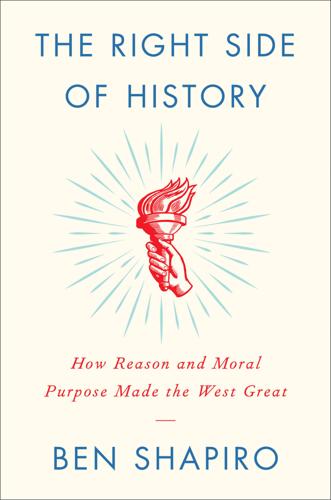
The Right Side of History
by
Ben Shapiro
Published 11 Feb 2019
The experts were at the wheel in Moscow, these officials believed; as Stuart Chase, the father of the New Deal, stated, the communists didn’t worry about grubby money. Instead, they were motivated by “the burning zeal to create a new heaven and a new earth which flames in the breast of every good Communist.” John Dewey found the USSR wondrous, as did most of the top officials in the American labor movement. W. E. B. Du Bois gushed, “I may be partially deceived and half-informed. But if what I have seen with my eyes and heard with my ears in Russia is Bolshevism, I am a Bolshevik.”55 Until the USSR’s fall, many on the mainstream Left believed it to represent a viable ideology. Despite the fall of the USSR, the desire to find a new meaning in the collective remains, both in the United States and abroad.
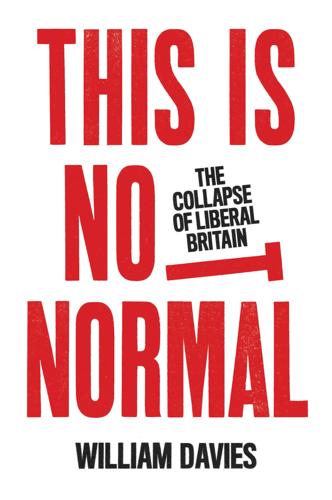
This Is Not Normal: The Collapse of Liberal Britain
by
William Davies
Published 28 Sep 2020
Over time, the production and analysis of such data became less dominated by the state. Academic social scientists began to analyse data for their own purposes, often entirely unconnected to government policy goals. By the late nineteenth century, reformers such as Charles Booth in London and W. E. B. Du Bois in Philadelphia were conducting their own surveys to understand urban poverty. To recognise how statistics have been entangled in notions of national progress, consider the case of GDP. GDP is an estimate of the sum total of a nation’s consumer spending, government spending, investments and trade balance (exports minus imports), which is represented in a single number.
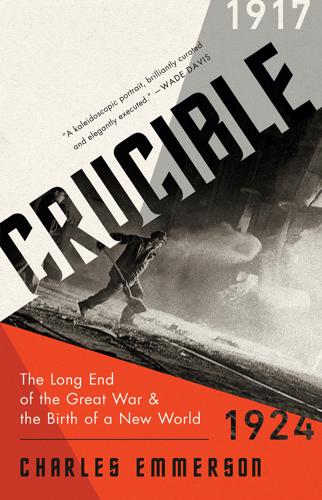
Crucible: The Long End of the Great War and the Birth of a New World, 1917-1924
by
Charles Emmerson
Published 14 Oct 2019
Records Vrangel Collection Vrangel Family Papers JKP: Jessie Kenney Papers, Women’s Library, London School of Economics JRL: Freud Collection, John Rylands Library, Manchester JRP: John Reed Papers, Houghton Library, Harvard LOC: Library of Congress, Washington DC National Endowment for the Advancement of Colored People Sigmund Freud Collection NA: National Archives, Kew, London RL: Royal Library, Windsor WEB: W. E. B. Du Bois Papers, University of Massachusetts at Amherst USNA: U.S. National Archives, College Park, Maryland Published Documents In the endnotes published documents are cited by abbreviation or by title followed by the volume in Roman numerals, and then the page references for the cited document followed by the page number for the individual citation if the document is of considerable length.
…
‘resting back in cushioned chairs’: report of the convention, 15 August 1920, MG II, 583–597, 594. ‘updates from its informants’: these are reproduced in MG II. ‘fool or a rogue’: interview with Chandler Owen and A. Philip Randolph by Charles Mowbray White, MG II, 609–612, 609. ‘more or less a fraud’: letter from W. E. B. Du Bois to H. L. Stone, 24 July 1920, MG II, 435. ‘think he is a demagogue’: interview with Du Bois by Charles Mowbray White, 22 August 1920, MG II, 620–621. ‘ablest statesman of his race’: report of the convention, 31 August 1920, MG II, 642–651, 649. ‘purchase them now’: editorial letter by Marcus Garvey, 31 August 1920, MG II, 654–656. • THE POLISH FRONT: ‘sixth year in a row’: de Gaulle, 45.
…
Summer 1923 ACROSS EUROPE: ‘New York has so many Russian nobles’: ‘Inrush of the Russians’, New York Times Magazine, 10 June 1923. • MUNICH: ‘Wie sieht Hitler aus?’, Simplicissimus, 28 May 1923. • PARIS: Polizzotti, 189–192, and Sanouillet, 278–282. • NEW YORK: ‘million other Garveys’: speech on 20 May 1923, MG V, 308–311. ‘Letter from W. E. B. Du Bois to Thomas E. Will’, 3 July 1923, WEB, Series 1a. • ESSEN: ‘the name of Schlageter will be’: Baird, 27. ‘Hitler claims that Schlageter’s death’: speech to nationalist groups in the Königplatz, 10 June 1923, SA, 934–935. ‘Christ-like composure’: for the interaction between Schlageter’s Catholicism and his role as a Nazi martyr see Hastings, 127–131.
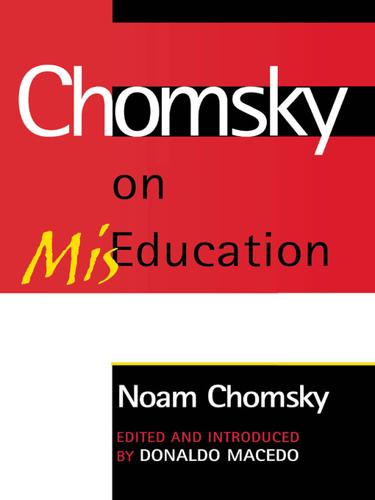
Chomsky on Mis-Education
by
Noam Chomsky
Published 24 Mar 2000
One of our challenges as educators is to discover what historically is possible in the sense of contributing toward the transformation of the world, giving rise to a world that is rounder, less angular, more humane.”36 NOTES I would like to thank Panagiota Gounari, who patiently helped with the preparation of the manuscript and for her insightful comments and contributions during the selection of the essays included in this book. 1. W. E. B. Du Bois, Color and Democracy: Colonies and Peace (Milwood, N.Y.: Kraus-Thompson, 1975), 99, 142. 2. Noam Chomsky, On Power and Ideology (Boston: South End Press, 1987), 6. 3. Noam Chomsky, Language and Politics, ed. C. P. Otero (New York: Black Rose Books, 1988), 671. 4. Chomsky, Language and Politics. 5.

The Smartphone Society
by
Nicole Aschoff
Amid the storm of criticism of smartphones and digital tech more broadly it is also helpful to put our fears about smartphones into historical context. People have always been anxious about new technology. Sociology as a discipline was founded during the late nineteenth century by scholars—such as Karl Marx, W. E. B. Du Bois, Max Weber, Jane Addams, and Emile Durkheim—who were puzzling out how society (a new concept in its own right) was adapting to industrialization, machines, and technology. Their predictions were often dire. New inventions such as the telephone and telegraph “annihilated space with time,” Wacjman notes, but left many wondering whether “science and technology were advancing faster than the ability of human society to cope.”48 Historian Lynn Spigel reminds us that popular writers of the time (Mark Twain, Edward Bellamy, Henry David Thoreau) feared “that people would become prisoners to machines, sacrifice romance for scientific utopias, or trade the beauty of nature for the poisonous fruits of industrialization.”49 Americans agonized over what machines were doing to their minds.
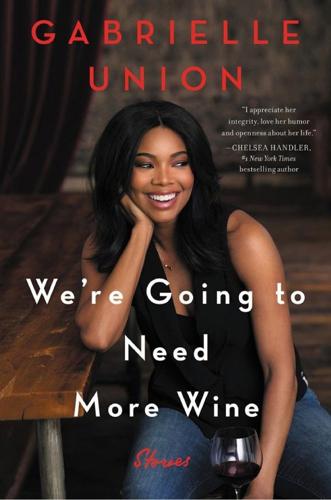
We're Going to Need More Wine: Stories That Are Funny, Complicated, and True
by
Gabrielle Union
Published 16 Oct 2017
one LADIES AND GENTLEMEN, MISS PLEASANTON It is a peculiar sensation, this double-consciousness, this sense of always looking at one’s self through the eyes of others, of measuring one’s soul by the tape of a world that looks on in amused contempt and pity. One ever feels his two-ness—an American, a Negro; two souls, two thoughts, two unreconciled strivings; two warring ideals in one dark body, whose dogged strength alone keeps it from being torn asunder. —W. E. B. Du Bois, The Souls of Black Folk When I was in the second grade, my parents moved us from Omaha, Nebraska, to Pleasanton, California. My parents had spent a year living in San Francisco just after they got married, and my arts-loving mother had lived for the city’s culture and open spirit. So when my father announced he was getting transferred to go back to the Bay Area, she rejoiced.
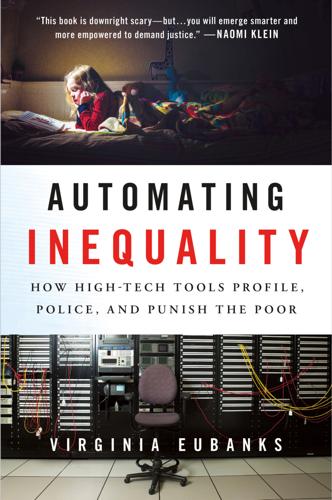
Automating Inequality
by
Virginia Eubanks
Inmates worked together, endured neglect and abuse, nursed the sick, watched each other’s children, ate together, and slept in crowded common rooms. Many used the poorhouse cyclically, relying on them between growing seasons or during labor market downturns. Poorhouses were among the nation’s first integrated public institutions. In his 1899 book, The Philadelphia Negro, W.E.B. Du Bois reported that African Americans were overrepresented in the city’s poorhouses because they were refused outdoor relief by exclusively white overseers of the poor. Residents described as Black, Negro, colored, mulatto, Chinese, and Mexican are common in poorhouse logbooks from Connecticut to California.

On Paradise Drive: How We Live Now (And Always Have) in the Future Tense
by
David Brooks
Published 2 Jun 2004
Their lives are distracted by a buzz of trivial images, by relentless hurry instead of genuine contemplation, information rather than wisdom, and a profusion of superficial choices. Modern Americans rarely sink to the level of depravity—they are too tepid for that—but they don’t achieve the highest virtues or the most demanding excellences; nor do they experience the grandest passions or the sublimest expressions of nature’s grandeur. As W. E. B. Du Bois put it long ago, “Our machines make things and compel us to sell them. We are rich in food and clothes and starved in culture…. All delicate feeling sinks beneath floods of mediocrity.” Chapter Four The Spiritual Wind BUT WHAT IF THAT’S all wrong? What if Thoreau was wrong to think that the ordinary life most Americans choose is a mistake?
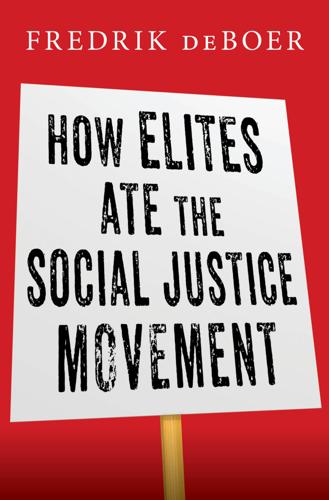
How Elites Ate the Social Justice Movement
by
Fredrik Deboer
Published 4 Sep 2023
I’ve often reflected on the fact that, as a white person, I enjoy the opportunity to not feel racialized whenever I’m not explicitly considering race. When I walk around in the city, going about my day, I don’t think of myself as a white American; I’m simply me. And this is an attitude that’s not afforded to people of other races, who often feel that they are racialized at all times. Black writers like W. E. B. Du Bois and Ralph Ellison described that reality decades ago. At times I can’t help but wonder if the absolutely monomaniacal liberal fixation on race ultimately deepens this dynamic and so hurts people of color. It makes it that much harder for them to escape, and all of us sometimes need an escape.
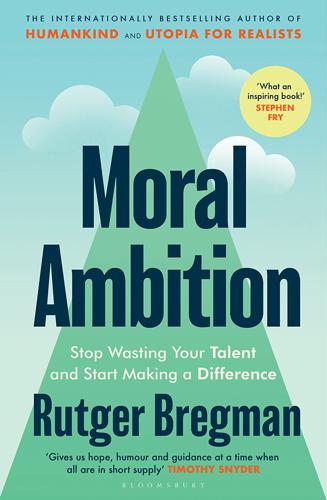
Moral Ambition: Stop Wasting Your Talent and Start Making a Difference
by
Bregman, Rutger
Published 9 Mar 2025
Garland had one condition: the funds had to be given away ‘as quickly as possible’ to ‘unpopular’ causes, such as the incarcerated and minority groups.46 Once he’d finally got rid of the money, the good man went to work as a farmer in Massachusetts. By his own account, he started an ‘experiment in social science’; by anyone else’s, he started a commune for polygamists.47 People came from far and wide to see this ‘love farm’, until Garland was arrested for adultery. Soon after Garland got out of jail, the sociologist W.E.B. Du Bois wrote in the NAACP’s (National Association for the Advancement of Colored People) The Crisis, leading journal of the civil rights movement, that the Garland Fund could well prove ‘one of the main agencies for the emancipation of the American Negro’.48 And within a few years, the fund awarded the movement its largest grant yet.
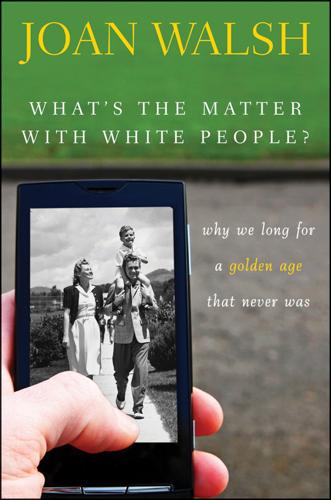
What's the Matter with White People
by
Joan Walsh
Published 19 Jul 2012
Harris’s In the Shadow of Slavery: African Americans in New York City,1626–1863; Ivor Bernstein’s The New York City Draft Riots and Angela Murphy’s American Slavery, Irish Freedom: Abolition, Immigrant Citizenship and the Movement for Irish Repeal. In the legendary realm of civil rights history, I owe a huge intellectual debt to Taylor Branch for his three part trilogy America in the King Years and to David Levering Lewis’s W.E.B. Du Bois 1868–1919: Biography of a Race. Clarence Jones’s Behind the Dream: The Making of the Speech that Changed the Nation brought home to me the strong bond between labor and the early civil rights movement. And Rev. Martin Luther King Jr.’s Chaos or Community: Where Do We Go From Here? is as relevant today as when he wrote it.
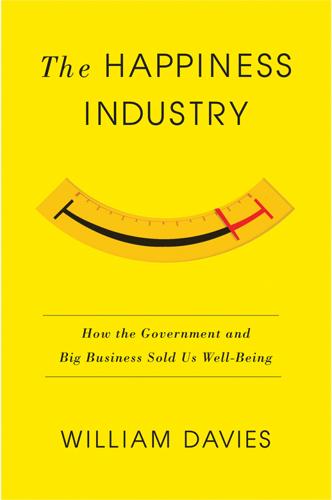
The Happiness Industry: How the Government and Big Business Sold Us Well-Being
by
William Davies
Published 11 May 2015
But they were frustrated to discover that most of the individuals or organizations capable of delivering this type of knowledge were political activists, socialists and sociologists.24 Since social surveys had first been conducted in Europe in the 1880s, they had tended to be carried out in pursuit of progressive political agendas. Charles Booth in East London, or W. E. B. Du Bois in Philadelphia, set the stage for quantitative sociological research, which would go out and find how ordinary people lived, by seeing them in their domestic environments and asking them questions. The techniques for doing this work became increasingly professionalized with the establishment of progressive institutions such as the London School of Economics and the Brookings Institute in Washington, DC.
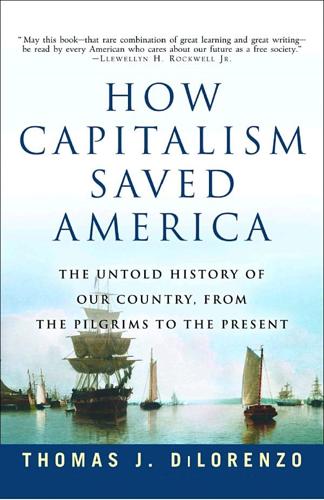
How Capitalism Saved America: The Untold History of Our Country, From the Pilgrims to the Present
by
Thomas J. Dilorenzo
Published 9 Aug 2004
Contrary to all reality, George Bernard Shaw insisted that “there was not, and could not be, a food shortage in the USSR.”23 Stalin’s forced collectivization in the Ukraine in 1932 caused the deaths of six million people in less than a year.24 Many of these intellectuals praised Soviet prisons, made excuses for Stalin’s purges (that is, murder) of political opponents, and waxed eloquently about Soviet communism’s “wise and caring leaders.” W. E. B. Du Bois, for example, thought Stalin was a perfect gentleman who “asked for neither adulation nor vengeance. He was reasonable and conciliatory.”25 Western intellectuals were particularly impressed because fellow intellectuals were so prominent in the Soviet government. The literary critic Edmund Wilson gushed, “There has been in our times no parallel . . . to the position of Gorky in the Soviet Union.
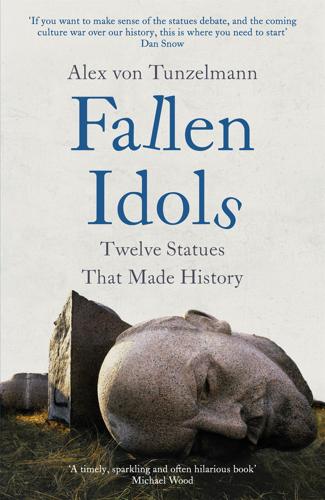
Fallen Idols: Twelve Statues That Made History
by
Alex von Tunzelmann
Published 7 Jul 2021
Some said he had spent only one night there, though in fact he had passed through a few times. Now, he was positioned as its master. In 1891, another monument to white supremacy was placed nearby on Canal Street: a massive obelisk commemorating the Battle of Liberty Place. Reconstruction ended in 1877, the same year Lee’s statue was commissioned. The black activist and writer W. E. B. Du Bois summed up the experiment of Reconstruction, and what would come next: ‘The slave went free; stood one moment in the sun; then moved back again toward slavery.’19 Over the following decades, ‘Jim Crow’ laws across the South would bring in segregation. (The name ‘Jim Crow’ was a pejorative term for black people, drawn from an 1828 minstrel song.)
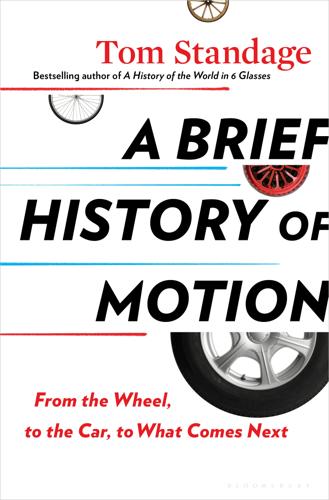
A Brief History of Motion: From the Wheel, to the Car, to What Comes Next
by
Tom Standage
Published 16 Aug 2021
Cars enabled them to avoid the indignity of having to conform to the racist system of segregation, and to go where they wanted, when they wanted, with privacy and security. Writing in the magazine of the National Association for the Advancement of Colored People in 1932, the civil rights activist (and editor of the magazine) W. E. B. Du Bois noted the growing number of Black car owners: “All over and everywhere the colored people are traveling in their automobiles.” He himself often drove long distances to meetings and conferences. On one occasion he drove all the way from New York to Kentucky and was pleased at the way that car ownership was undermining businesses that supported segregation.
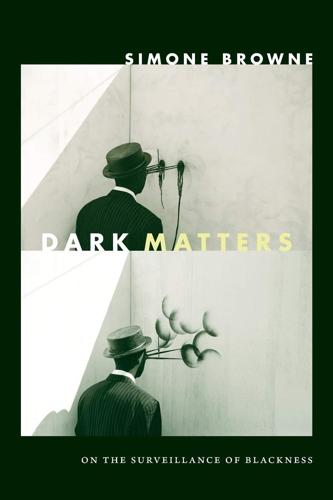
Dark Matters: On the Surveillance of Blackness
by
Simone Browne
Published 1 Oct 2015
In a later version, Stowage of the British Slave Ship “Brookes” under the Regulated Slave Trade Act of 1788, the note for “Figure 3” detailed this cramped configuration: “the stowage of 130 additional slaves round the wings or sides of the lower deck by means of platforms or shelves (in the manner of galleries in a church) the slaves stowed on the shelves or below them have only a height of 2 feet 7 inches between the beams and far less under the beams.”68 Two feet and seven inches. The violence of slavery crudely reduced to geometric units, with room allotted for forty women, twenty-four boys, and sixty men, arranged in a “perfect barbarism,” as abolitionist Thomas Clarkson described this formation.69 This arrangement was, as W. E. B. Du Bois put it, “a foretaste of hell.”70 Slave trader Theodore Canot outlined the stowing process: The second mate and boatswain descend into the hold, whip in hand, and range the slaves in their regular places: those on the right side of the vessel facing forward, and lying in each other’s lap, while those on the left are similarly stowed with their faces towards the stern.
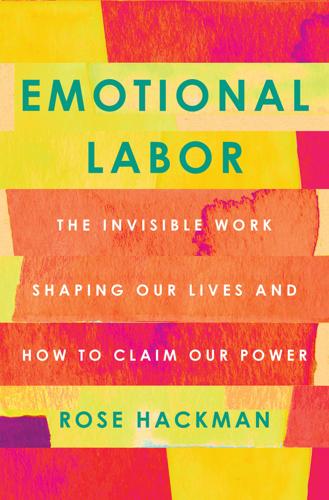
Emotional Labor: The Invisible Work Shaping Our Lives and How to Claim Our Power
by
Rose Hackman
Published 27 Mar 2023
The reality that such a vital form of work is swept under the rug, relegated to women, is one of the roots of gender inequality because at its core emotional labor is not only overlooked, it is also degraded—in turn degrading those who are tasked with performing it. In this latter manner, emotional labor, when it comes to gender, is describing a state of being that bears many parallels to theoretical frameworks developed by great Black intellectuals and figures of the twentieth century, including W.E.B. Du Bois’s idea of double consciousness, Frantz Fanon’s description of the white mask, and Ralph Ellison’s account of visibility denied. Emotional labor as a more gendered burden has been depicted explicitly many times in fictional works by women—whether in the novel Sula by Toni Morrison, or The Wife by Meg Wolitzer, which was made into a film starring Glenn Close.
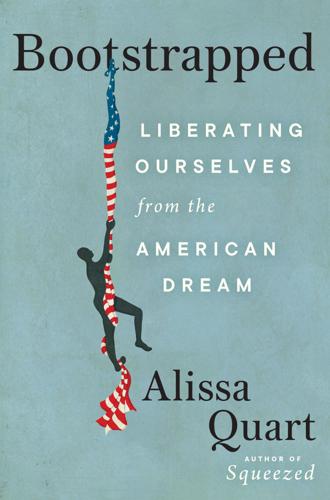
Bootstrapped: Liberating Ourselves From the American Dream
by
Alissa Quart
Published 14 Mar 2023
Almost everyone she spoke to insisted that the Black co-op phenomenon didn’t properly exist: “Even Black people told me, ‘We don’t do cooperatives: only white hippies do them.’” Nembhard, then in her mid-forties, persevered, seeking traces of these alternative businesses. And then she found them, in the writings of W. E. B. Du Bois from the turn of the last century, who, she was surprised to discover, wrote extensively about Black co-ops. He had described them as “the first wavering step of a people toward organized social life,” in his monograph about them. She found records of idealistic groups as well as more run-of-the mill collectives from before the Civil War.

Moonwalking With Einstein
by
Joshua Foer
Published 3 Mar 2011
They are from the Samuel Gompers Vocational High School in the South Bronx, and their American history teacher, Raemon Matthews, is a Tony Buzan disciple. If I had thought that the art of memory was just a form of mental peacocking, Matthews aimed to prove otherwise. He has dubbed the group of students he trains for the U.S. Memory Championship the “Talented Tenth,” after W. E. B. Du Bois’s notion that an elite corps of African-Americans would lift the race out of poverty. When I first encountered Matthews at the 2005 U.S. Memory Championship, he was pacing anxiously at the back of the room, while he waited for his students’ scores in the random words event to come in. Several of his students were vying for a top-ten finish, but as far as he was concerned, the real test of their memories was still two and a half months away, when they would sit for the New York State Regents exam.
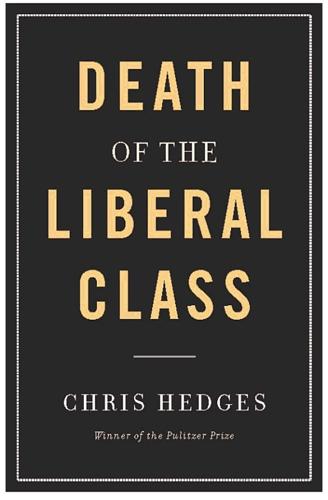
Death of the Liberal Class
by
Chris Hedges
Published 14 May 2010
The movement from being Negro and colored to being black, that’s Malcolm. Black studies in the universities and black caucuses, that’s Malcolm. King never would have done black studies. He taught a course at Morehouse on social and political philosophers and did not include a black person. He didn’t have W.E.B. Du Bois or Frederick Douglass. None of them. He had all the white figures like Plato and Aristotle. Malcolm helped black people to love themselves. King and Malcolm would have excoriated a nation that spends $3 trillion waging imperial wars in the Middle East and trillions more to fill the accounts of Wall Street banks while abandoning its poor.
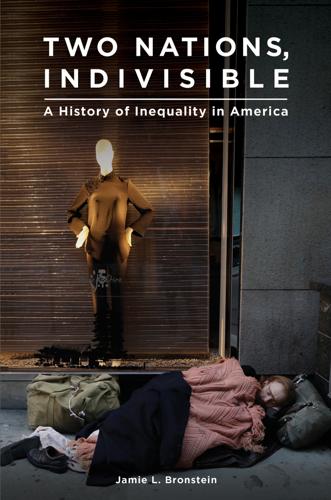
Two Nations, Indivisible: A History of Inequality in America: A History of Inequality in America
by
Jamie Bronstein
Published 29 Oct 2016
Louise Knight, Citizen: Jane Addams and the Struggle for Democracy (Chicago, IL: University of Chicago Press, 2005), 404. 61. Huyssen, Progressive Inequality, 139. 62. Cooper, quoted in Derrick P. Alridge, “Of Victorianism, Civilizationism, and Progressivism: The Educational Ideas of Anna Julia Cooper and W. E. B. Du Bois, 1892–1940,” History of Education Quarterly vol. 47 no. 4 (Winter 2007): 416–446, at 443. 63. Huyssen, Progressive Inequality, 146. 64. Flanagan, America Reformed, 47. 65. Eric Monkkonen, “Nineteenth-Century Institutions: Dealing with the Urban Underclass,” in Katz, ed., The Underclass Debate, 334–365, at 355. 66.

Gang Leader for a Day: A Rogue Sociologist Takes to the Streets
by
Sudhir Venkatesh
Published 13 Aug 2010
To be honest, I was a bit overwhelmed by the thrill of further entering J.T.’s world. I hoped he would someday introduce me to the powerful Black Kings leadership, the reputedly ruthless inner-city gang lords who had since transplanted themselves to the Chicago suburbs. I wondered if they were some kind of revolutionary vanguard, debating the theories of Karl Marx and W. E. B. Du Bois, Frantz Fanon and Kwame Nkrumah. (Probably not.) I also hoped that J.T. would bring me to some dark downtown tavern where large Italian men in large Italian suits met with black hustlers like J.T. to dream up a multiethnic, multigenerational,multimillion-dollar criminal plan. My mind, it was safe to say, was racing out of control.

Please Don't Sit on My Bed in Your Outside Clothes: Essays
by
Phoebe Robinson
Published 14 Oct 2021
Generally speaking, I feel young until I start explaining something from my childhood such as MASH, then I second-guess and think to myself: Damn, was I a part of the original expedition across the Oregon Trail with Lewis and Clark in 1804? Was I the secretary who got carpal tunns while taking minutes during the inaugural NAACP meeting in 1909 because W.E.B. Du Bois didn’t know how to shut up? Was I the middle-aged Marriott hotel concierge service that Mathew Knowles called when LaTavia Roberson and LeToya Luckett were kicked out of Destiny’s Child in 2000? Why do my knees hurt when it rains? Moving on. MASH. In summary, it’s a game you play with friends that’s supposed to predict your future.
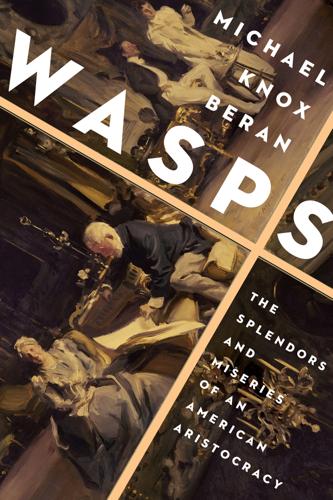
Wasps: The Splendors and Miseries of an American Aristocracy
by
Michael Knox Beran
Published 2 Aug 2021
They acted, Ernest Wilson said, “as if we were a Black tabula rasa ready to be filled with New England education and high culture.” WASPs did know something about the liberating power of humane education, but even here they were patronizing, oblivious of the fact that Blacks were already pursuing the ideal more passionately in their own schools than Franklin Roosevelt had done at Harvard or Henry Stimson at Yale. In 1897 W.E.B. Du Bois, who had been educated at Fisk University and Harvard, where he studied under William James and was the first African American to obtain a doctorate from the university, became a professor of history and economics at Atlanta University in Georgia, an historically Black institution. The beauty of the place, he said, lay in the “simple unity” of the life lived on its hilltop: a “broad lawn of green rising from the red street and mingled roses and peaches; north and south, two plain and stately halls; and in the midst, half hidden in ivy, a larger building, boldly graceful, sparingly decorated, and with one low spire.”
…
“a judgment”: William Roscoe Thayer, The Life and Letters of John Hay (Boston: Houghton Mifflin, 1915), II, 7. “incessant bribery and attentions”: Samuels, Henry Adams: The Middle Years, 329. sorrow songs: Patricia O’Toole, The Five of Hearts (New York: Ballantine, 1991), 213. “haunting melody”: This was W.E.B. Du Bois’s characterization of the sorrow songs in The Souls of Black Folk: Essays and Sketches 3rd ed. (Chicago: A.C. McClurg, 1903), viii. “pleasant gang”: Thayer, Life and Letters of John Hay, II, 78. “dispensers of sunshine over Washington”: Adams, Education, 332. “as queens ought to look”: John Arthur Garraty, Henry Cabot Lodge: A Biography (New York: Knopf, 1953), 101.
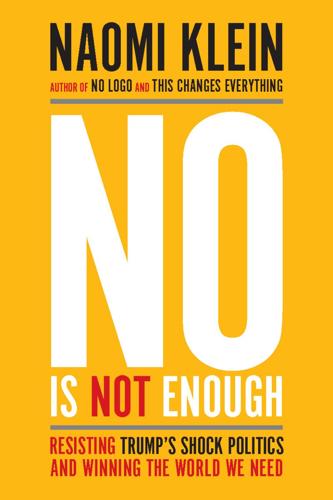
No Is Not Enough: Resisting Trump’s Shock Politics and Winning the World We Need
by
Naomi Klein
Published 12 Jun 2017
Utopian socialist fiction, including Edward Bellamy’s Looking Backward, topped the best-seller lists (in sharp contrast to today, when it is classic dystopian fiction—George Orwell’s 1984, Margaret Atwood’s The Handmaid’s Tale, and Sinclair Lewis’s It Can’t Happen Here—that has reappeared on best-seller lists since Trump’s inauguration). Working-class organizers in the Great Depression were versed not only in Marx but also in W.E.B. Du Bois, whose vision was of a pan–working class movement that could unite the downtrodden to transform an unjust economic system. As historian Robin D.G. Kelley has written, the end of the nineteenth century was a period of foment for “black-led biracial democratic, populist, and radical movements.” The same is true of the hard-won victories of the civil rights era.
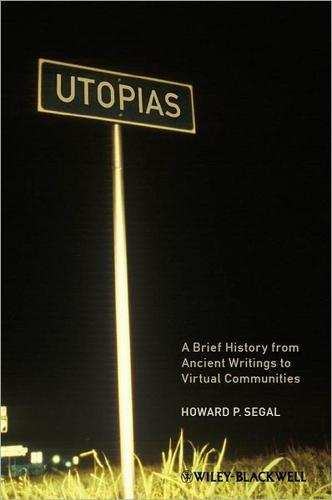
Utopias: A Brief History From Ancient Writings to Virtual Communities
by
Howard P. Segal
Published 20 May 2012
In each case, Winter reveals arguments and artifacts that demonstrate the appropriateness of the utopian label, yet without romanticizing the projects. For example, President Woodrow Wilson’s 1919 vision of self-determination for all peoples as the royal road to peace was conspicuously at odds with his contempt for non-whites and non-Europeans. At the peace conference Wilson arrogantly refused to meet with W. E. B. Du Bois and Chinese Ambassador to the United States Wellington Koo to discuss Pan-African and Asian concerns. For the morally superior Wilson, racial hierarchy trumped universal rights. So much for the universality of his utopia. Equally importantly, Winter strikingly connects these utopian enterprises with their decidedly non-utopian contexts.
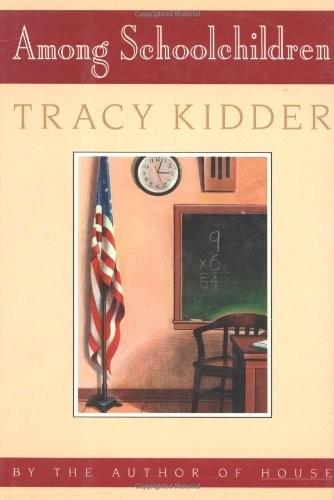
Among Schoolchildren
by
Tracy Kidder
Published 14 Jun 1989
Horace Mann, the great spokesman of the Common School Movement, imagined in the mid-nineteenth century a system of universal education for America, which would make "the wheel of Progress" roll "harmoniously and resistlessly onward." John Dewey imagined schools that would provide for every child "an embryonic community life" and, for the nation, "the deepest and best guarantee of a larger society which is worthy, lovely, and harmonious." W. E. B. Du Bois imagined that education would someday help to bring about "the treatment of all men according to their individual desert and not according to their race." James Bryant Conant, the president of Harvard and a leading voice for educational reform from around the end of World War II until the mid-1960s, imagined that public schools would answer the threat of Soviet Russian competition and "secure the foundations of our free society."
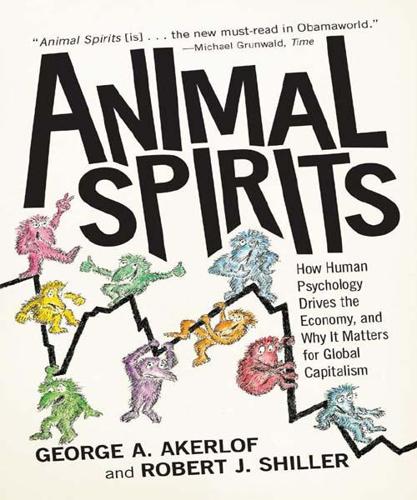
Animal Spirits: How Human Psychology Drives the Economy, and Why It Matters for Global Capitalism
by
George A. Akerlof
and
Robert J. Shiller
Published 1 Jan 2009
The men say to themselves implicitly, if not explicitly, that, yes, this loss of self-restraint is OK. There is, we hope, nothing new to our description. Indeed we think that it exactly corresponds to the leading conclusions in African-American studies from a long line of distinguished scholars. They include Elijah Anderson, W.E.B. Du Bois, William Henry Gates, Glenn Loury, Lee Rainwater, William Julius Wilson, and many others. Indeed we can find exact passages in the work of each of them that would summarize what we say here. We could also have told similar stories but in different contexts. We could have described the behavior of women rather than of men.
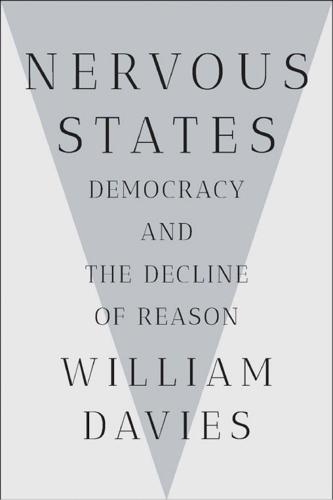
Nervous States: Democracy and the Decline of Reason
by
William Davies
Published 26 Feb 2019
The fact that statistical agencies such as the US Bureau of Labor Statistics release data according to a fixed, long-term schedule means that they are impervious to the influence of immediate political pressures of the day. Over time, states have gradually lost their monopoly over statistical data collection. During the late nineteenth century, reformers such as Charles Booth in London and W. E. B. Du Bois in Philadelphia began to collect and publish their own survey data, so as to cast a more objective light on poverty and social ills. This points to another key dimension of statistics in how progress has been understood. To render something an object of statistical analysis is also to state that it matters; if the government isn’t interested in measuring something, then activists and reformers often will be.
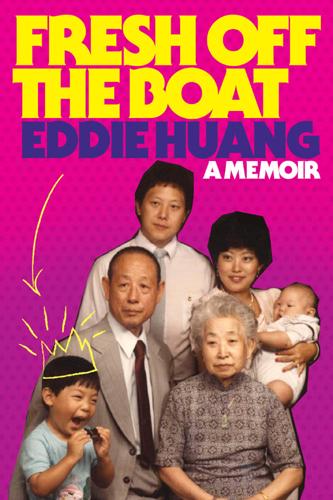
Fresh Off the Boat
by
Eddie Huang
Published 29 Jan 2013
I couldn’t believe how long I had been kept in the dark but as I opened each book I saw there were other people like me who saw the things I saw. I gave up trying to find friends at college and befriended dead people between the margins. For years, I just didn’t know how to express it but reading things like Teresa de Lauretis, Audre Lorde, Booker T. Washington, W.E.B. Du Bois, and Toni Morrison, I got it. The most important professor in my entire life was Dr. Jennifer Henton. She was a strong black woman from Philly with a voice like Marge Simpson. All the kids at Rollins hated her. No one recommended her classes, everyone said she was difficult, and no one really got good grades in her class.

The Undertow: Scenes From a Slow Civil War
by
Jeff Sharlet
Published 21 Mar 2023
He joined the Navy, 1944, and was sent to a camp called Robert Smalls, after an enslaved man forced to work on a Confederate ship in the Civil War until he commandeered it and sailed it to freedom. Eighty years later, Camp Robert Smalls was still segregated. Many of the Black seamen were older, some had been to college. They schooled Belafonte, fed him pamphlets. One man passed on a copy of W.E.B. Du Bois’s just-published Dusk of Dawn: An Essay Toward an Autobiography of a Race Concept. Du Bois was even better than Rex Ingram. Belafonte wanted more. He swung on an officer, a White man, and went to the brig. He found other books, more Du Bois. When he returned to Harlem, he kept reading. He worked as a janitor.
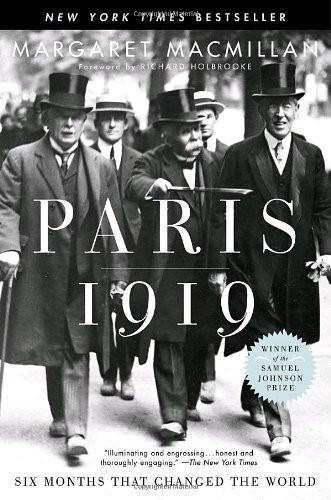
Paris 1919: Six Months That Changed the World
by
Margaret Macmillan; Richard Holbrooke; Casey Hampton
Published 1 Jan 2001
Yet although the fifth of Wilson’s Fourteen Points had talked about taking the interests of the indigenous populations into account, no one had actually bothered to consult the Africans or the Pacific islanders. True, no Samoans or Melanesians had made their way to Paris, but there were Africans at hand. Indeed, a black French deputy from Senegal, Blaise Diagne, and the great American black leader W.E.B. Du Bois were busy organizing a Pan-African Congress. This duly took place in February with the grudging consent of the peacemakers. None of the leading figures from the Peace Conference attended. A member of the Belgian delegation spoke enthusiastically about the reforms that were taking place in the Congo, and a former minister of foreign affairs from Portugal praised his own country’s management of its colonies.
…
“Nationalism and Its Alternatives in the International Arena: The Jewish Question at Paris, 1919,” Journal of Contemporary History, 28 (1993). ———. War, Jews, and the New Europe: The Diplomacy of Lucien Wolf, 1914–1919. Oxford and New York, 1992. Levin, P. L. Edith and Woodrow: the Wilson White House. New York, 2001. Lewis, D. L. W.E.B. Du Bois: Biography of a Race, 1868–1919. New York, 1993. Liddell Hart, B. Foch: The Man of Orleans. London, 1931. Lieven, A. The Baltic Revolution: Estonia, Latvia, Lithuania and the Path to Independence. New Haven and London, 1994. Link, A. S. Wilson: The Road to the White House. Princeton, New Jersey, 1947. ———.
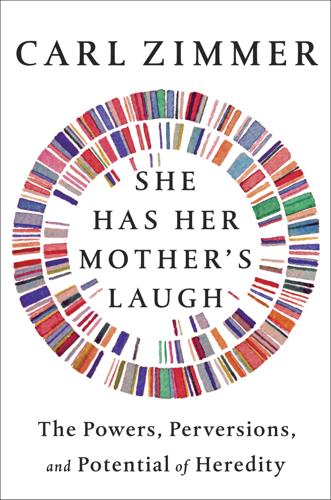
She Has Her Mother's Laugh
by
Carl Zimmer
Published 29 May 2018
* * * — As Davenport and Jordan were spinning their color tops and drawing their racial pedigrees, other researchers were drawing a different image of humanity. They saw the variations in our species as too complex, and too interwoven with historical events, to reduce to simplistic racial caricatures. Starting in 1897, the sociologist and activist W. E. B. Du Bois led a massive study on the Negro residents of Atlanta. His team measured their weight, height, skull size, infant mortality rates, and a host of other vital signs. Du Bois combined the survey results with a synthesis of worldwide anthropological research in his 1906 book The Health and Physique of the Negro American.
…
The Hirszfelds were well aware that the types they were constructing would confuse traditionally minded scientists. How, for example, could Asians and Africans be put in one group? “Our biochemical index in no way corresponds to race in the usual sense of the word,” the Hirszfelds warned. The complexity that W. E. B. Du Bois saw in the Negroes of Atlanta, that the Hirszfelds saw in the blood of warring nations, demanded a richer view of heredity—one in which genetic variations were liberally spread across populations and had freedom to flow from one population to another. But in the early 1900s, short of bringing thousands of people together in a besieged city, it was impossible to map the genetic geography of our species.

Higher: A Historic Race to the Sky and the Making of a City
by
Neal Bascomb
Published 2 Jan 2003
Art galleries now featured those modern artists who first took New York by storm at the Armory Show—Pablo Picasso and Henri Matisse, among others. “Fuck Literature,” said a young Hemingway, disdaining the past, as he and his fellow writers—William Faulkner, Langston Hughes, Sherwood Anderson, Willa Cather, W. E. B. Du Bois, Eugene O’Neill, and Maxwell Anderson—gave new strength to books and plays. Broadway shows and the dawn of moving pictures revolutionized the draw of entertainment. And of course there was jazz. From the moment George Gershwin played Rhapsody in Blue at Aeolian Hall, sound was never the same.
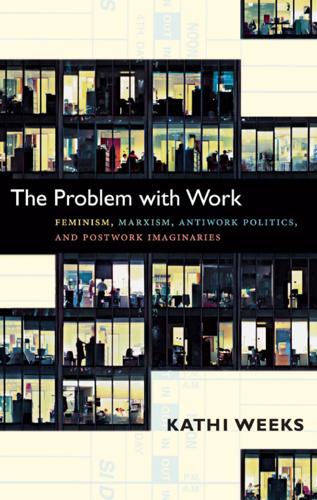
The Problem With Work: Feminism, Marxism, Antiwork Politics, and Postwork Imaginaries
by
Kathi Weeks
Published 8 Sep 2011
The embrace of whiteness, as David Roediger explains, “was a way in which white workers responded to a fear of dependency on wage labor and to the necessities of capitalist work discipline” (1991, 13). The othering of various immigrant groups delivered a similar reward to wage laborers, paying what W. E. B. Du Bois called a “public and psychological wage” to the white working class (quoted in Roediger 1991, 12). Thus the work ethic traveled down the class ladder in part on the energies of racism, ethnicity, and nationalism. The racialization of the work ethic also played a role in the postindustrial economy by facilitating the acceptance of white-collar work.
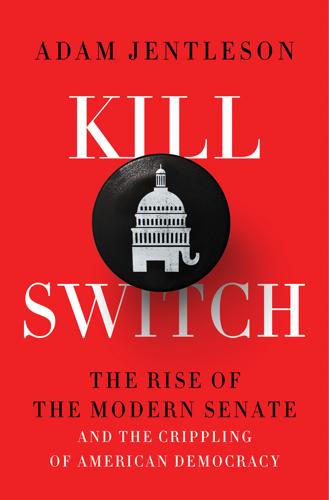
Kill Switch: The Rise of the Modern Senate and the Crippling of American Democracy
by
Adam Jentleson
Published 12 Jan 2021
Understanding the Framers’ approach to the Senate was in many ways a process of forgetting the myths that its members and hagiographers hammer home on a near-daily basis. The works of Jack Rakove, Jill Lepore, Robert Dahl, and Gordon Wood were essential guides. In understanding the historical context of the nineteenth century, the work of Eric Foner was indispensable, along with that of W. E. B. Du Bois, Daniel Walker Howe, Sean Wilentz, and David Potter. Charles Wiltse’s seminal three-volume history of Calhoun was rich and rewarding, as were the dissections of Calhoun’s philosophy by James Read and other scholars. Bridging the centuries, the journalism of Nikole Hannah Jones, Jamelle Bouie, and Adam Serwer has been vital in upending false but comforting narratives.
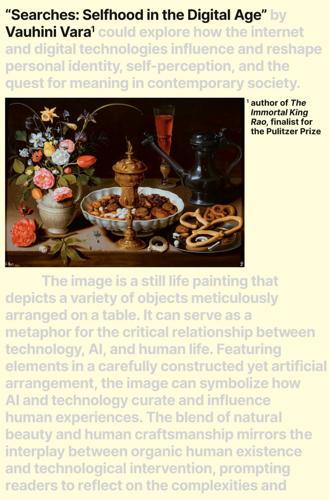
Searches: Selfhood in the Digital Age
by
Vauhini Vara
Published 8 Apr 2025
Nowadays, as we amass social capital by posting whatever generates more engagement, we can’t help but tune our curation and signaling to whatever social media companies’ algorithms seem to favor—faces and bodies that conform to a white European beauty standard; a certain vaguely Californian vocal cadence; the airing of strong feelings, especially anger. Our subtle self-modification according to technological capitalism’s norms is so pervasive that certain types of performance have their own names: Instagram face, TikTok voice. It recalls W. E. B. Du Bois’s description of double consciousness: a Black person’s sense “of always looking at one’s self through the eyes of others, of measuring one’s soul by the tape of a world that looks on in amused contempt and pity.” Here, consciousness is doubled once through the gaze of the dominant culture and then redoubled as the algorithm’s fun-house mirror amplifies the ideals conveyed through that gaze.

The Frayed Atlantic Edge: A Historian’s Journey From Shetland to the Channel
by
David Gange
Published 10 Jul 2019
Feminist historians such as Joan Kelly-Gadol, for instance, showed the ‘Renaissance’ to be a narrative that fits the experience of a cadre of wealthy upwardly mobile men, but not their contemporaries whose opportunities narrowed and wealth decreased.2 To sum up an era with the term Renaissance is thus to engage in an identity politics that values the rich alone. The case of the Enlightenment is little different. Social distinctions of race, class, gender and sexuality were not undermined but consolidated: this was the era of scientific racism or ‘the century of the colour line’ as it was labelled by the philosopher W. E. B. Du Bois. Yet the case against the label ‘Enlightenment’ is also a geographic one: to deploy it is to be dazzled by cities and blind to rural sea coasts. As scholarship informed by environmental challenges increasingly encourages focus on place and geographical distinctiveness, the Enlightenment must surely fail as an explanatory narrative.
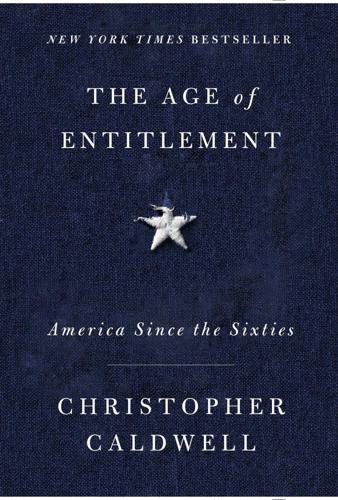
The Age of Entitlement: America Since the Sixties
by
Christopher Caldwell
Published 21 Jan 2020
“It puts us in our proper historical context.” There was nothing false about that, and a writer in Ebony magazine in 1967 had even made similar points. There had already been one nationwide change of nomenclature, in the late 1960s and early 1970s, from “Negro,” the term favored by Booker T. Washington and W.E.B. Du Bois, to “black.” But this new one was urged in a different spirit and brought about in a different way. The problem was a sociolinguistic one. It is true, as Jackson said in defense of his neologism, that there existed a word “European-American,” but it was a scientific term. It had never been used in casual conversation, nor could it be, for the simple reason that it had eight syllables.

Heaven Is a Place on Earth: Searching for an American Utopia
by
Adrian Shirk
Published 15 Mar 2022
I’m particularly interested in the Peace Mission Movement because while there might have been a number of movements and communities in the United States over the years, secular or religious, which were multiracial, most of them were not, and if they were, it was often so only incidentally, not as a central tenet of their existence. Even W. E. B. Du Bois at the time, however skeptical he was of the odor of Divine’s charlatanism, couldn’t help but highlight this most distinctive feature of the movement in a New York Amsterdam News article, noting that the Peace Mission Movement “is (and this is the most curious of all) interracial among people of the laboring and middle class.”
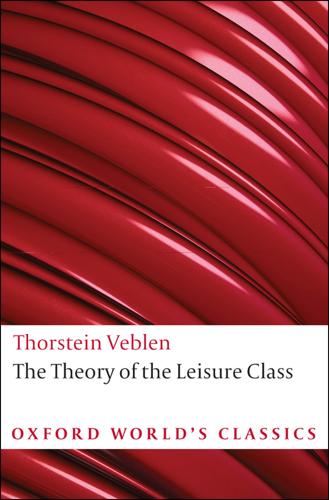
The Theory of the Leisure Class
by
Thorstein Veblen
Published 10 Oct 2007
Charlotte Perkins Gilman, Women and Economics 1899 Publication of The Theory of the Leisure Class: An Economic Study of the Evolution of Institutions, title later changed to The Theory of the Leisure Class: An Economic Study of Institutions. 1900 Sigmund Freud, The Interpretation of Dreams; Theodore Dreiser, Sister Carrie 1901–9 Progressive Era ‘muckrakers’ protest against social evils in the press; President Theodore Roosevelt attacks the Trusts; publication of Frank Norris’s The Octopus and The Pit and Upton Sinclair’s The Jungle—exposés of business greed and corruption; Henry James’s The American Scene examines social consequences of the expenditure of great wealth. 1901 Booker T. Washington, Up from Slavery 1903 Lester Frank Ward, Pure Sociology; W. E. B. Du Bois, The Souls of Black Folk 1905 Albert Einstein submits his first paper on the special theory of relativity. Edith Wharton, The House of Mirth 1906–9 Teaches at Stanford University; divorced by Ellen Rolfe in 1906; dismissed from Stanford for ‘personal affairs’. 1906 Turned down for position as head librarian at the Library of Congress; rejected by Harvard University for a faculty post; dismissed by the University of Chicago over scandals involving relations with various women. 1911–18 Teaches at the University of Missouri. 1911 Frederick Winslow Taylor, The Principles of Scientific Management 1914 Marries Anne Fessenden Bradley, divorcee with two daughters; increasing problems with ill health; publication of The Instinct of Workmanship and the State of the Industrial Arts.
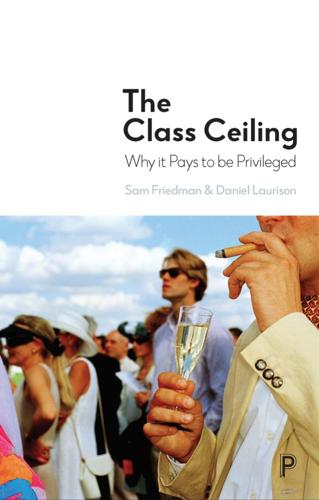
The Class Ceiling: Why It Pays to Be Privileged
by
Sam Friedman
and
Daniel Laurison
Published 28 Jan 2019
New York: McGrawHill. Domhoff, G.W. (2013) Who rules America? The triumph of the corporate rich (7th edn), New York: McGraw-Hill Education. Dorling, D. (2014) Inequality and the 1%, London: Verso Books. Du Bois, W.E.B. (1971) ‘That capital “N”’, in Lester, J. (ed) The Seventh Son: The Thought and Writings of W. E. B. Du Bois, New York: Random House. Dubrow, J.K. (2015) ‘Political inequality is international, interdisciplinary, and intersectional’, Sociology Compass, 9(6), 477-86 (https://doi.org/10.1111/soc4.12270). Eagly, A.H. and Carli, L.L. (2007) Through the labyrinth: The truth about how women become leaders, Boston, MA: Harvard Business Review Press.
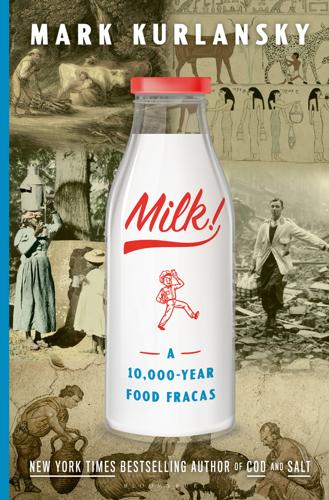
Milk!
by
Mark Kurlansky
Once homogenization came into use, evaporated milk no longer separated in the can, and its shelf life was greatly increased. The Paris World’s Fair of 1900 featured the debut of a new kind of engine developed by Rudolf Diesel, talking films, and an escalator. The new Art Nouveau design was also on display, as well as an exhibit on the contributions of African American people to American society by W.E.B. Du Bois and Booker T. Washington. Less noticed was Auguste Gaulin’s lait homogenisé, the world’s first homogenized fresh milk. It had been developed the year before in Paris by Gaulin, the owner of the Gaulin Dairy Machinery Equipment Company. Visitors at the fair were uncertain what to think of this invention, which they called lait fixé, fixed milk, but after the fair ended, Gaulin improved his machine and it became a huge success, used in the making of evaporated milk and industrially made ice cream.

The Costs of Connection: How Data Is Colonizing Human Life and Appropriating It for Capitalism
by
Nick Couldry
and
Ulises A. Mejias
Published 19 Aug 2019
US West Coast evangelist Kevin Kelly comes close to this when he celebrates the “technium” (his term for the supposed collective “autonomy” that develops from “the feedback loops in the technological system”).25 But why believe humans are intelligent at a collective level while ignoring or recklessly overriding humans’ ability to be independently intelligent at the individual level? Implicitly, a new notion of the subject is being fashioned, meaningful at the collective scale on which data processing flourishes but occluding older understandings of the individual subject. Conflicts between notions of the self characterized earlier phases of colonialism too. W. E. B. Du Bois called the outcome “double consciousness,” a situation in which the self is forced to describe itself in another’s language, one that overrides the language in which the colonial subject might otherwise choose to describe herself.26 Seen from the point of view of capital, the contradiction is unimportant and certainly not painful, because capitalism’s language generally wins!

The Ascent of Money: A Financial History of the World
by
Niall Ferguson
Published 13 Nov 2007
Fannie Mae and Freddie Mac also came under pressure from HUD to support the sub-prime market. As Bush put it in December 2003: ‘It is in our national interest that more people own their home.’58 Few dissented. Writing in the New York Times in November 2007, Henry Louis (‘Skip’) Gates Jr., Alphonse Fletcher University Professor at Harvard and Director of the W. E. B. Du Bois Institute for African and African-American Research, appeared to welcome the trend, pointing out that fifteen out of twenty successful African-Americans he had studied (among them Oprah Winfrey and Whoopi Goldberg) were the descendants of ‘at least one line of former slaves who managed to obtain property by 1920’.
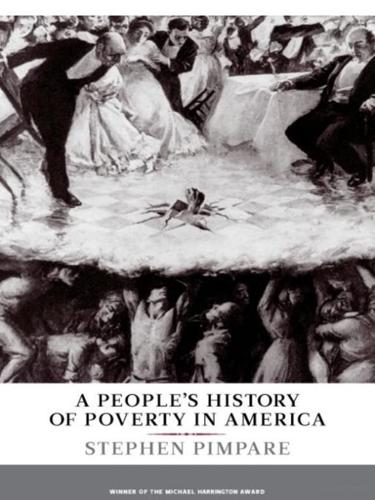
A People's History of Poverty in America
by
Stephen Pimpare
Published 11 Nov 2008
Finally, whatever the flaws in the Orshansky measure, it was not adopted until 1965—therefore, estimates of poverty prior to that, however accurate or inaccurate we may judge them to be, are not directly comparable, although many have much in common with the Orshansky approach. Perhaps the first effort at establishing an absolute poverty line was by the Massachusetts Bureau of Statistics and Labor in 1870. W.E.B. Du Bois designed a line in 1899 specifically for blacks in Philadelphia; five years later Robert Hunter attempted to do the same for the nation as a whole, setting the line at $460 in the North and $300 in the South (which would today be about 40 percent of Orshansky’s line, adjusted for inflation). At around the same time, New York charity administrator Edward Devine said the figure in New York should be closer to $600 a year, since a reasonable standard of living would have to include, he thought, burial (this was often a huge portion of a family’s expenses), food, shelter, furniture, clothing, clean water, education, religion, justice in courts, electoral participation (i.e., poll taxes), medical care, and rest and recreation.
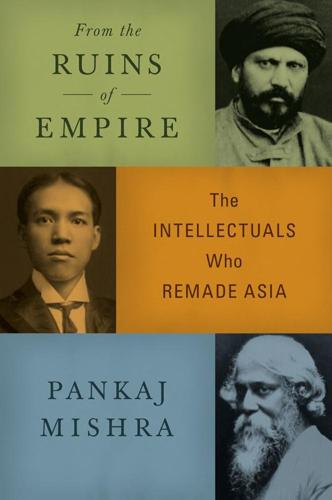
From the Ruins of Empire: The Intellectuals Who Remade Asia
by
Pankaj Mishra
Published 3 Sep 2012
Returning by ship to China in late 1905, Sun was congratulated by Arab port workers at the Suez Canal who thought that he was Japanese.5 Excited speculation about the implications of Japan’s success filled Turkish, Egyptian, Vietnamese, Persian and Chinese newspapers. Newborn babies in Indian villages were named after Japanese admirals. In the United States, the African-American leader W. E. B. Du Bois spoke of a worldwide eruption of ‘colored pride’. Something akin to this sentiment clearly seized the pacifist poet (and future Nobel laureate) Rabindranath Tagore (1861 – 1941), who on receiving the news from Tsushima led his students in an impromptu victory march around a little school compound in rural Bengal.
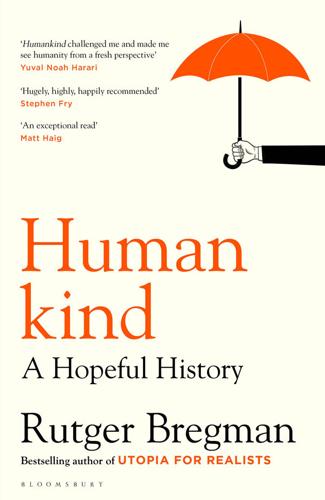
Humankind: A Hopeful History
by
Rutger Bregman
Published 1 Jun 2020
It wasn’t until years after learning about this British thinker that I discovered his maxim contained a reference. Russell coined the phrase ‘The Will to Doubt’ to place himself in opposition to another philosopher, an American named William James (1842–1910). And this is who I want to tell you about now. William James was the mentor of Theodore Roosevelt, Gertrude Stein, W. E. B. Du Bois, and many other leading lights of American history. He was a beloved figure. According to Russell, who’d met him, James was ‘full of the warmth of human kindness’. Yet Russell was less enamoured of James’s ideas. In 1896, he had delivered a talk not about the will to doubt, but ‘The Will to Believe’.
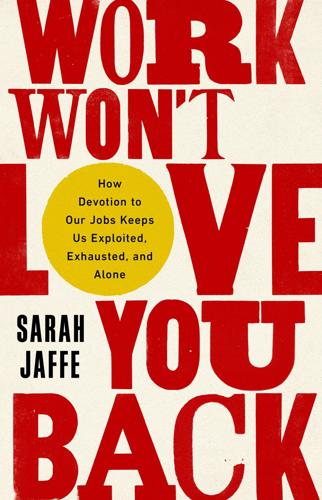
Work Won't Love You Back: How Devotion to Our Jobs Keeps Us Exploited, Exhausted, and Alone
by
Sarah Jaffe
Published 26 Jan 2021
In order to exploit Black women’s labor to the utmost, Angela Davis noted, the enslaving class had to release them from “the chains of the myth of femininity,” yet such release did not include freeing them from the perception that they were naturally good at caring for (white) children. 6 During the Civil War, sensing the end of slavery approaching, enslaved people stepped up myriad forms of resistance, from the small and domestic—challenging white women’s monopoly on feminine beauty by wearing their enslavers’ accessories or cosmetics—all the way up to running away to Union lines in what W. E. B. Du Bois characterized as a massive general strike. White women may have found themselves having to do more housework, but after the war they quickly resumed handing that work over to Black women, even if they had to pay them this time around. This historical tension—between the wealthy employers of domestics and the women who did the work—has continued to divide women and women’s movements right up to the present, giving well-off women a material investment in ignoring divisions of race and class. 7 Freed from slavery, Black women fought to control the conditions of their labor.
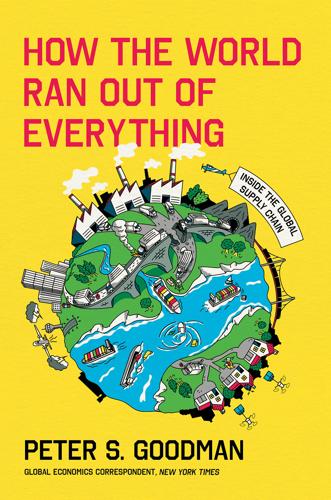
How the World Ran Out of Everything
by
Peter S. Goodman
Published 11 Jun 2024
Uniting the legacies of Houghton Mifflin, Harcourt Brace, and Ticknor and Fields, Mariner Books continues one of the great traditions in American bookselling. Our imprints have introduced an incomparable roster of enduring classics, including Hawthorne’s The Scarlet Letter, Thoreau’s Walden, Willa Cather’s O Pioneers!, Virginia Woolf’s To the Lighthouse, W. E. B. Du Bois’s Black Reconstruction, J. R. R. Tolkien’s The Lord of the Rings, Carson McCullers’s The Heart Is a Lonely Hunter, Ann Petry’s The Narrows, George Orwell’s Animal Farm and Nineteen Eighty-Four, Rachel Carson’s Silent Spring, Margaret Walker’s Jubilee, Italo Calvino’s Invisible Cities, Alice Walker’s The Color Purple, Margaret Atwood’s The Handmaid’s Tale, Tim O’Brien’s The Things They Carried, Philip Roth’s The Plot Against America, Jhumpa Lahiri’s Interpreter of Maladies, and many others.
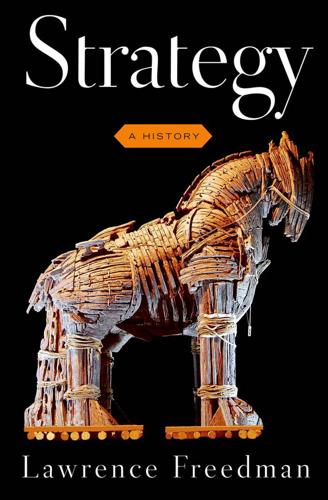
Strategy: A History
by
Lawrence Freedman
Published 31 Oct 2013
The premise that it would be hard to attain political power without economic power had some validity. In practice, however, with little progress on either the economic or political front, the compromise was increasingly seen as a recipe for prolonged servitude. A more radical but also analytical edge was provided by W. E. B. Du Bois, the first African-American to secure a Ph.D. from Harvard. He had studied with Weber in Germany and the two kept in touch. Weber considered him to be one of America’s most gifted sociologists and cited him as a counter-example when challenging racial stereotypes. Du Bois undertook major research programs on the “Negro problem,” demonstrating the impact of political choices rather than some primordial difference between the races.
…
The unique drama of defenseless men and women accepting vicious assaults made for a fascinating “story” and “wonderful news.” The likely bad publicity posed a threat to the attacker. He was alive to the potential relevance of this approach to the struggle for black rights and was in touch with his fellow Harvard alumnus, W. E. B. Du Bois. It is unclear what Du Bois thought of Gregg’s characterization of Negroes as a “gentle race, accustomed to marvelous endurance of suffering” and thus ideally suited to a nonviolent campaign. While Gregg was exploring whether nonviolence could be made to work as a strategy, Reinhold Niebuhr, a Protestant minister, was concluding that it could not.
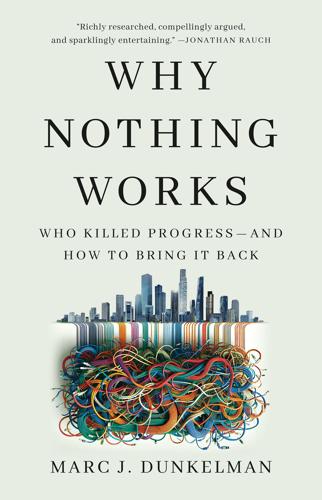
Why Nothing Works: Who Killed Progress--And How to Bring It Back
by
Marc J Dunkelman
Published 17 Feb 2025
This same ethos had long prevailed at the local level through the tension set primarily between courts, on the one hand, and parties, on the other.23 By enforcing property rights, the judiciary served to protect each community’s elite—to insulate the old-money aristocracy and nouveau riche capitalists from what the journalist H. L. Mencken would later term the “vulgar.”24 In what W. E. B. Du Bois would label the “counter-revolution of property,” post–Reconstruction era jurisprudence gave judges explicit license to strike down legislative initiatives designed to placate the down-and-out.25 But the have-nots had their defenders as well—they were served, in theory at least, by political machines.
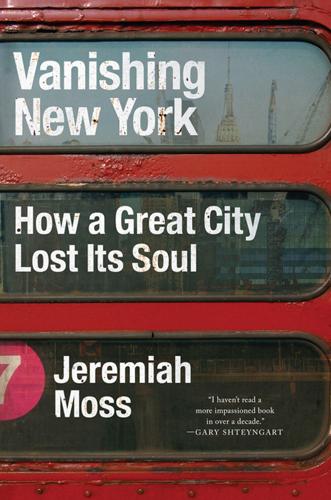
Vanishing New York
by
Jeremiah Moss
Published 19 May 2017
In the early twentieth century, the Elites of New York reinforced their ancestors’ system. They squeezed the working class, reducing the number of industrial jobs, and pitted immigrants and blacks against each other for dwindling resources. At the same time, not-quite-white ethnics moved to embrace whiteness for its privileges, what David Roediger, building on the work of W. E. B. Du Bois, has called “the wages of whiteness.” It was a bonus, essentially, the racial bribe in modern times. Too often, when people talk about the deindustrialization of New York, they talk about it like it happened naturally, a trend of the times, nothing more than market forces. Journalist Robert Fitch offered an alternative explanation in his 1996 book, The Assassination of New York.
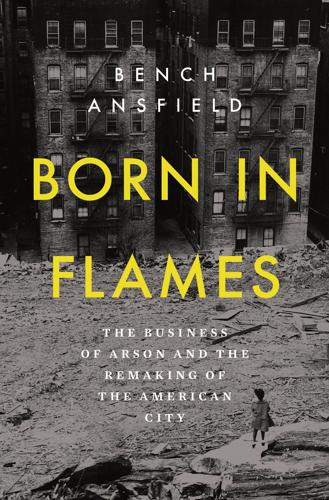
Born in Flames
by
Bench Ansfield
Published 15 Aug 2025
For elaborations on racial capitalism, see Cedric Robinson, Black Marxism: The Making of the Black Radical Tradition (Chapel Hill: University of North Carolina Press, 2000); Stuart Hall, “Race, Articulation, and Societies Structured in Dominance,” in Stuart Hall Essential Essays, vol. 1, ed. David Morley (1980; repr., Durham, NC: Duke University Press, 2019); W.E.B. Du Bois, Black Reconstruction in America (New York: Harcourt, 1935); C.L.R. James, The Black Jacobins: Toussaint L’Ouverture and the San Domingo Revolution (New York: Dial Press, 1938); Walter Johnson, River of Dark Dreams: Slavery and Empire in the Cotton Kingdom (Cambridge, MA: Harvard University Press, 2013); Ruth Wilson Gilmore, Golden Gulag: Prisons, Surplus, Crisis, and Opposition in Globalizing California (Berkeley: University of California Press, 2007); Robin D.

The State and the Stork: The Population Debate and Policy Making in US History
by
Derek S. Hoff
Published 30 May 2012
Opposition to compulsory sterilization, advances in genetics, and recognition of flawed IQ testing methodology further eroded support. As Daniel Kevles reminds us in his still-unsurpassed history of eugenics, “long before the Nazis came to power a growing, influential coalition had turned against the mainline movement.”110 And African-American leaders such as W. E. B. Du Bois vehemently opposed eugenics.111 As we will see in more depth in the next chapter, in the 1930s, a small group of eugenicists responded to their movement’s decline by promoting a “reform eugenics” that would sever the American movement from its racist past and replace the stress on hereditary factors with a newfound recognition of the importance of the environment.
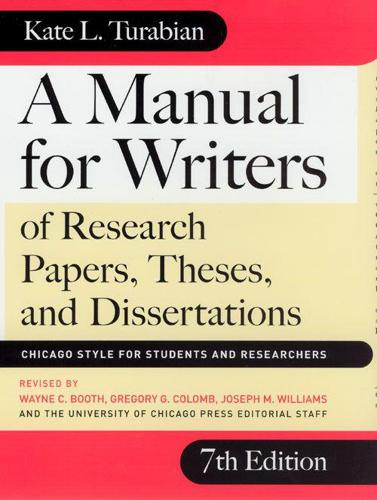
A Manual for Writers of Research Papers, Theses, and Dissertations, Eighth Edition: Chicago Style for Students and Researchers
by
Kate L. Turabian
Published 14 Apr 2007
When in doubt, consult Webster's Biographical Dictionary or another reliable authority. Prepositions (of) and conjunctions (and) that are parts of names are usually lowercase, as is the when it precedes a name. For possessive forms of names, see 20.2. For abbreviations with names, see 24.2. For names with numbers, see 23.1.6. Eleanor Roosevelt the United States Congress W. E. B. Du Bois the State Department Ludwig van Beethoven the European Union Victoria Sackville-West the University of North Carolina Chiang Kai-shek the Honda Motor Company Sierra Leone Skidmore, Owings & Merrill Central America the University of Chicago Press New York City the National Conference of Christians and Jews the Atlantic Ocean the Roman Catholic Church the Republic of Lithuania the Allied Expeditionary Force A professional title that immediately precedes a personal name is treated as part of the name and should be capitalized.

Blood in the Machine: The Origins of the Rebellion Against Big Tech
by
Brian Merchant
Published 25 Sep 2023
Many abolitionists found Garnet’s address too incendiary—they chose not to publish it in the minutes of the meeting, worrying it would threaten progress toward a political solution. But it went on to become widely influential. And Byron’s line about hereditary bondsmen did, too; Douglass quoted it in his work, as did W. E. B. Du Bois, in The Souls of Black Folk. “This little bit of British Romantic poetry thus appears in most of the major early texts of the Black radical tradition, a kind of shibboleth for the movement,” the historian Matt Sandler wrote. “The citation became a refrain of Black radical intellection, and in its rhythmic repetition through the nineteenth century, Black writers signaled their belonging within a world-historical struggle for emancipation.
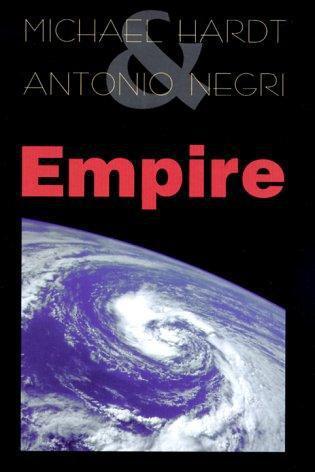
Empire
by
Michael Hardt
and
Antonio Negri
Published 9 Mar 2000
See also Wahneema Lubiano, ‘‘Standing in for the State: Black N O T E S T O P A G E S 1 0 8 – 1 1 3 435 Nationalism and ‘Writing’ the Black Subject,’’ Alphabet City, no. 3 (October 1993), pp. 20–23. 29. The question of‘‘black sovereignty’’ is precisely the issue at stake in Cedric Robinson’s critique ofW. E. B. Du Bois’s support for Liberia in the 1920s and 1930s. Robinson believes that Du Bois had uncritically supported the forces of modern sovereignty. See Cedric Robinson, ‘‘W. E. B. Du Bois and Black Sovereignty,’’ in Sidney Lemelle and Robin Kelley, eds., Imagining Home: Culture, Class, and Nationalism in the African Diaspora (London: Verso, 1994), pp. 145–157. 30. Jean Genet, ‘‘Interview avec Wischenbart,’’ in Oeuvres complètes, vol. 6 (Paris: Gallimard, 1991), p. 282. In general, on Genet’s experience with the Black Panthers and the Palestinians, see his final novel, Prisoner of Love, trans.

Natural language processing with Python
by
Steven Bird
,
Ewan Klein
and
Edward Loper
Published 15 Dec 2009
Example document for each section of the Brown Corpus ID File Genre Description A16 ca16 news Chicago Tribune: Society Reportage B02 cb02 editorial Christian Science Monitor: Editorials C17 cc17 reviews Time Magazine: Reviews D12 cd12 religion Underwood: Probing the Ethics of Realtors E36 ce36 hobbies Norling: Renting a Car in Europe F25 cf25 lore Boroff: Jewish Teenage Culture G22 cg22 belles_lettres Reiner: Coping with Runaway Technology H15 ch15 government US Office of Civil and Defence Mobilization: The Family Fallout Shelter J17 cj19 learned Mosteller: Probability with Statistical Applications K04 ck04 fiction W.E.B. Du Bois: Worlds of Color L13 cl13 mystery Hitchens: Footsteps in the Night M01 cm01 science_fiction Heinlein: Stranger in a Strange Land N14 cn15 adventure Field: Rattlesnake Ridge P12 cp12 romance Callaghan: A Passion in Rome R06 cr06 humor Thurber: The Future, If Any, of Comedy We can access the corpus as a list of words or a list of sentences (where each sentence is itself just a list of words).
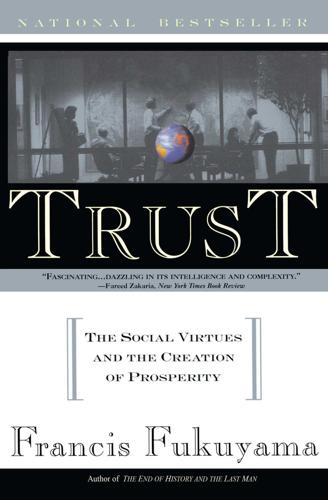
Trust: The Social Virtue and the Creation of Prosperity
by
Francis Fukuyama
Published 1 Jan 1995
In 1920, more than 50 percent of all Chinese males in the United States were employed or self-employed in ethnic businesses like restaurants and laundries, and in 1940 there was a comparable rate of 40 percent self-employment among Japanese males.4 One 1973 study put the percentage of Korean families in business at 25 percent,55 and another found the rate of self-employment among Korean-American males has been 23.5 percent, compared to a rate of 7 percent for the American population as a whole.6 The African-American community, by contrast, has a lower-than-average rate of self-employment and small-business ownership,7 and the lack of a black entrepreneurial class has for long been a staple of the sociological literature.8 At the turn of the century both Booker T. Washington and W E. B. du Bois felt obliged to call for blacks to go into business to remedy this situation. In most American inner cities, local businesses have tended for decades to be owned not by blacks but by people outside the African-American community. Through the early postwar period, many ghetto business owners were Jews; in the past generation the latter have been replaced by Koreans, Vietnamese, and other Asian proprietors.

The Alignment Problem: Machine Learning and Human Values
by
Brian Christian
Published 5 Oct 2020
“Whatever may be the prejudices of those who may look upon it,” said Douglass of a photograph of the first Black US senator, Hiram Revels, “they will be compelled to admit that the Mississippi Senator is a man.”30 But all was not entirely well. As photography became more standardized and mass-produced in the twentieth century, some began to feel that the field of photography was itself worthy of critique. As W.E.B. Du Bois wrote in 1923, “Why do not more young colored men and women take up photography as a career? The average white photographer does not know how to deal with colored skins and having neither sense of the delicate beauty or tone nor will to learn, he makes a horrible botch of portraying them.” We often hear about the lack of diversity in film and television—among casts and directors alike—but we don’t often consider that this problem exists not only in front of the camera, not only behind the camera, but in many cases inside the camera itself.
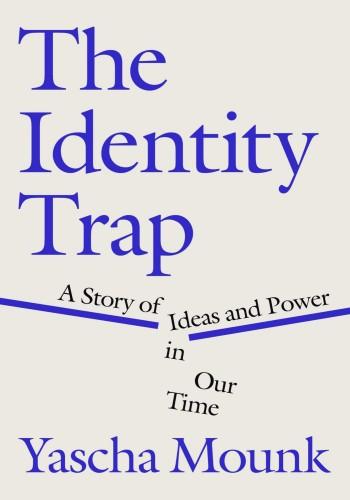
The Identity Trap: A Story of Ideas and Power in Our Time
by
Yascha Mounk
Published 26 Sep 2023
GO TO NOTE REFERENCE IN TEXT embraced separatist trends: Daniel Patrick Moynihan, Miles to Go: A Personal History of Social Policy (Cambridge, Mass.: Harvard University Press, 1996). GO TO NOTE REFERENCE IN TEXT “We want to racialize whites”: John Yemma, “ ‘Whiteness Studies’ an Attempt at Healing,” Boston Globe, Dec. 21, 1997, A1. Reassuringly, Flint faced pushback at the time. Noel Ignatiev, a fellow at Harvard’s W. E. B. Du Bois Institute, commented in the same article that “to concede any validity to whiteness as a category is to perpetuate injustice.” GO TO NOTE REFERENCE IN TEXT As she writes in White Fragility: Robin J. DiAngelo, White Fragility: Why It’s So Hard to Talk to White People About Racism (Boston: Beacon Press, 2018), xiv.
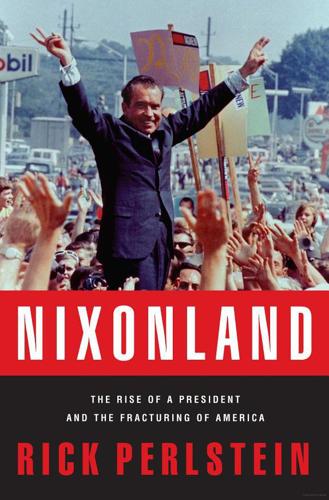
Nixonland: The Rise of a President and the Fracturing of America
by
Rick Perlstein
Published 1 Jan 2008
In Pacific Palisades—where Ronald Reagan lived—fifty earnest kids marched back and forth in front of the high school carrying signs reading THERE IS NO SCIENTIFIC PROOF THAT LONG HAIR INHIBITS LEARNING, and the dean of boys dispatched the football team to break up the demonstration with what the Los Angeles Times described as “gridiron tactics.” In Detroit a teenager shot his rabbi dead as one thousand congregants looked on, crying, “This congregation is a travesty and an abomination. It has made a mockery with its phoniness and hypocrisy.” A new antiwar group surfaced, the W.E.B. Du Bois Club. Lyndon Johnson’s attorney general, Nicholas Katzenbach, ruled it a front for the Communist Party. Richard Nixon called it a “totalitarian organization” that chose its name (which one pronounced “du-BOYS Club”) “not unaware of the confusion they are causing among our supporters and among many other good citizens”—who might mistake it for the venerable service organization whose board he chaired: the Boys Club.
…
A writer in the Nation asserted: Review of The Dignity of Youth and Other Atavisms, Nation, March 28, 1966. In San Diego, a terrorist tossed: LAT, March 8, 1966. In Pacific Palisades: “50 Longhairs Protest Clipping Order,” LAT, March 8, 1966. “This congregation is a travesty”: “Detroit Rabbi Shot Before 1,000 in Synagogue,” NYT, February 13, 1966. W.E.B. Du Bois Club: “U.S. Asks to Have Du Bois Clubs Registered as Communist Front,” NYT, March 5, 1966; “Du Bois Members Beaten by Crowd,” NYT, March 6, 1966; “Explosion Wrecks Du Bois Headquarters in San Francisco,” NYT, March 7, 1966; “Du Bois ‘Duplicity’ Decried by Nixon,” NYT, March 9, 1966. “Time’s story is biased”: Letters, Time, April 29, 1966.
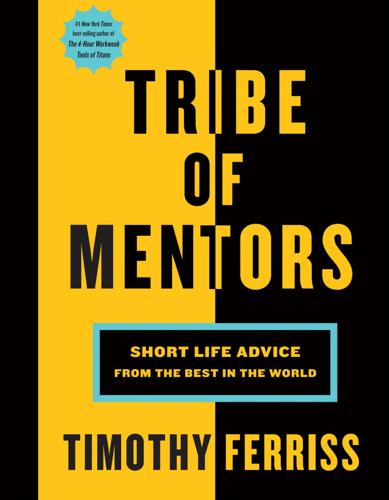
Tribe of Mentors: Short Life Advice From the Best in the World
by
Timothy Ferriss
Published 14 Jun 2017
Sometimes that’s what we need. Song of Solomon by Toni Morrison: The characters’ dilemmas just rocked my world in high school. I bought a second copy, “just in case,” and I was so grateful for the classroom discussions throughout the rich layered poetic journey. The Souls of Black Folk by W. E. B. Du Bois: A seminal work in American and African-American literature. Du Bois, a brilliant writer and sociologist, introduced notions like “double-consciousness” and the “veil of race” while examining what it means to spend lifetimes primarily viewing ourselves through the eyes of other people, power, and cultures.
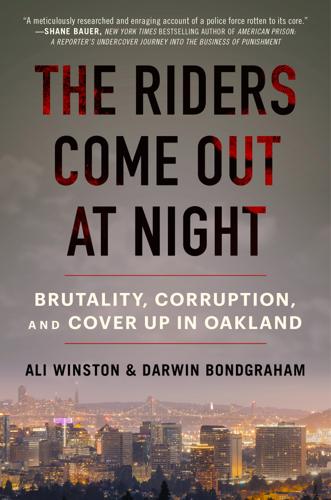
The Riders Come Out at Night: Brutality, Corruption, and Cover-Up in Oakland
by
Ali Winston
and
Darwin Bondgraham
Published 10 Jan 2023
The duo met in 1961 while attending a gathering of the Afro-American Association, a political group founded by a UC Berkeley Boalt Hall Law School graduate named Donald Warden, one of the Bay Area’s few Black attorneys. Warden’s group had a foothold on the Merritt campus, which had a sizable Black student population. Afro-American Association members studied W. E. B. Du Bois and Malcolm X and advocated a version of Black nationalism critical of the mainstream civil rights movement—specifically, its goal of integration. “Black people should uplift themselves by building their own institutions and businesses, pushing back against white racism whenever necessary,” they reasoned.7 When Newton and Seale founded the Black Panther Party in 1966 and penned their Ten-Point Program for liberation later that year, the two drew liberally from the ideas to which Warden had introduced them, as well as the positions of Comfort and ODAC.

Power and Progress: Our Thousand-Year Struggle Over Technology and Prosperity
by
Daron Acemoglu
and
Simon Johnson
Published 15 May 2023
Soon thereafter, Reconstruction gave way to the phase known as Redemption, in which southern White leadership pledged to “redeem” the South from federal interference and the emancipation of Blacks. This White elite succeeded in turning back the clock, and the South became what one of the most influential Black intellectuals of the early twentieth century, W. E. B. Du Bois, aptly characterized as “simply an armed camp for intimidating black folk.” This armed camp was of course about coercion of Black Americans in the South, including extrajudicial lynchings and other killings and the use of local law enforcement for repression. But this coercion power was rooted in and complemented by southern racists’ success in persuading the rest of the nation that it was acceptable for Blacks to be systematically disadvantaged, discriminated against, and forcibly repressed.

Migrant City: A New History of London
by
Panikos Panayi
Published 4 Feb 2020
Charlotte Breese, Hutch (London, 1999). 84. Martin Duberman, Paul Robeson (London, 1989), pp. 87–125; Matera, Black London, pp. 286–98; Sean Creighton, ‘Paul Robeson’s British Journey’, in Neil A. Wynn, ed., Cross the Water Blues: African American Music in Europe (Jackson, MI, 2007), pp. 112–27; Jan Carew, ‘Paul Robeson and W. E. B. Du Bois in London’, Race & Class, vol. 46 (2004), pp. 39–48; Colin Holmes, John Bull’s Island: Immigration and British Society, 1871–1971 (Basingstoke, 1988), p. 153. 85. Jeffrey Green, ‘Afro-American Symphony: Popular Black Concert Hall Peformers’, in Oliver, Black Music in Britain, pp. 36–43. 86.
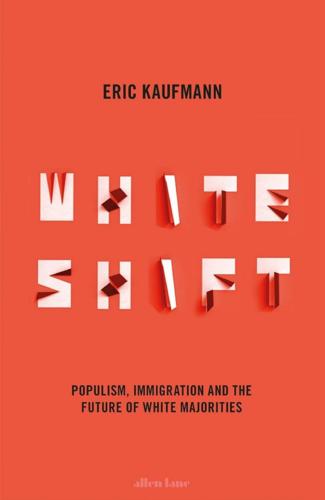
Whiteshift: Populism, Immigration and the Future of White Majorities
by
Eric Kaufmann
Published 24 Oct 2018
Those of hybrid background are prominent in today’s cultural nationalist movements, as in the past. A partial list of mixed-ancestry nationalists from the past two centuries would include the Irish president Éamon de Valera (half Spanish), the IRA’s Seán Mac Stíofáin (half English), the American pan-Africanist W. E. B. Du Bois (part European) or the Metis leader Louis Riel (seven eighths European). It isn’t hard to find examples today, notably the Fijian nationalist George Speight (half English), the leader of the Czech-nationalist Freedom and Democracy party Tomio Okamura (half Japanese), or the part-Indonesian Geert Wilders.
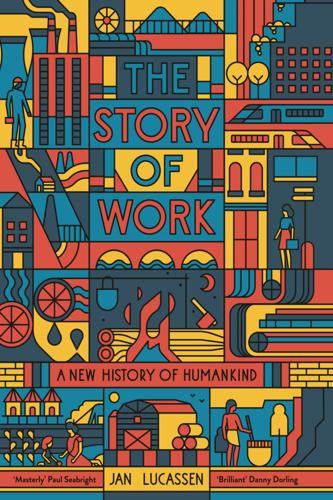
The Story of Work: A New History of Humankind
by
Jan Lucassen
Published 26 Jul 2021
But key independent states were rather late in forbidding slavery: indeed, it took a bloody civil war in America in 1865 (600,000 casualties in the name of a labour relations issue!), followed by a full century in which the southerners managed to frustrate the full enjoyment of civil rights by the formerly enslaved and their descendants. But in the aftermath trade unions also played a negative role, garnering criticism from prominent black leaders including W.E.B. Du Bois and Martin Luther King.31 Brazil abolished slavery only in 1888. Among the last were Ethiopia in 1942 and Mauritania in 1981.32 The abolition of serfdom in Central and Eastern Europe also fits into this chronological pattern.33 Although many countries emulated the abolishment of serfdom brought about by the French Revolution, like Prussia and Poland in 1807, the Baltic provinces of Russia in 1816–19, Wurttemberg in 1817 and Bavaria in the following year, other countries still had to wait for half a century or longer.

Enlightenment Now: The Case for Reason, Science, Humanism, and Progress
by
Steven Pinker
Published 13 Feb 2018
The most notorious were Martin Heidegger and the legal philosopher Carl Schmitt, who were gung-ho Nazis and Hitler acolytes. Indeed, no autocrat of the 20th century lacked champions among the clerisy, including Mussolini (Ezra Pound, Shaw, Yeats, Lewis), Lenin (Shaw, H. G. Wells), Stalin (Shaw, Sartre, Beatrice and Sidney Webb, Brecht, W. E. B. Du Bois, Pablo Picasso, Lillian Hellman), Mao (Sartre, Foucault, Du Bois, Louis Althusser, Steven Rose, Richard Lewontin), the Ayatollah Khomeini (Foucault), and Castro (Sartre, Graham Greene, Günter Grass, Norman Mailer, Harold Pinter, and, as we saw in chapter 21, Susan Sontag). At various times Western intellectuals have also sung the praises of Ho Chi Minh, Muammar Gaddafi, Saddam Hussein, Kim Il-sung, Pol Pot, Julius Nyerere, Omar Torrijos, Slobodan Milošević, and Hugo Chávez.

Palo Alto: A History of California, Capitalism, and the World
by
Malcolm Harris
Published 14 Feb 2023
ix Perhaps Camp was unfamiliar with Hoover’s standard practice of staying highly leveraged—no reason to tie your capital up in a farm if you can use the bank’s. x Politically active Bay Area longshoremen had to contend with employer-controlled hiring halls and a management-friendly union; they often adopted aliases to dodge the blacklist. xi Excepting the revolt of the enslaved during the U.S. Civil War, which W. E. B. Du Bois famously describes as a general strike. xii Given Roosevelt’s antipathy toward Hoover, perhaps it wouldn’t have been as disastrous as Darcy believed. Regardless, CAWIU leaders displayed none of the heartless Soviet instrumentalism that planters warned workers about. xiii Creel loved the Bohemian Club so much he made the San Francisco club his full-time home after his wife’s death.

Europe: A History
by
Norman Davies
Published 1 Jan 1996
Kipling, ‘Recessional: June 22, 1897’, in The Oxford Book of English Verse (Oxford, 1939), 1069. 55. Martin Bernal, Black Athena: The Afroasiatic Roots of Classical Civilization (2 vols., London, 1987–91). [BLACK ATHENA] 56. Molefi Kete Asante, Afrocentricity (Trenton, NJ, 1988), 6,11. Afrocentrists can be particularly scathing about American black leaders like W. E. B. Du Bois who worked for integration and assimilation. ‘Educated at the University of Berlin and at Harvard, the citadel of western images in America, Du Bois was steeped in the traditions of European scholarship…. Working from a Eurocentric vision, he participated in the philosophical currents of Western Europe, and therefore reflected the same mental flow as Darwinism, Marxism, and Freudianism.